As we slowly try to return to a form of normality, Mike has mainly been keeping his birding 'responsibly' close to home.
(All photos by Mike Weedon)
Monday 28 March 2022
It was so foggy at Ferry Meadows this morning, I could barely see any birds. There was a bit of an increase in singing Blackcap numbers, but all in all, it was a foggy wash out. In the evening, I went to enjoy the calm weather at MarchFarmers, looking over the Nene Washes. 8 Cranes flew over the road as I approached. A pair of Avocets were on the muddy island where the previous birds had been, apparently looking to find a nest site. I think water levels will be critical to their success...
Sunday 27 March 2022
I was back at Penfield again today, enjoying more great views of the Ring-necked Duck. The other main highlight for me was a Weasel crossing the road nearby. On the same lake as a the RnD, a group of 4 Red-crested Pochards came down, including 3 drakes. The local Coots were even less fond of these flamboyant fops than they are of the Tufted Ducks and Ring-necked Duck, which is not fond at all. But their attempts to see off the RcPs did not stop the three drakes from all attempting to mate with the female at the same time. It was not really a pleasant sight, but I guess that is how baby Red-crested Pochards are made...
Saturday 26 March 2022
Yes, I was back at Eldernell this lovely warm morning for another dose of the rich goodness it is producing on its flooded fields at the moment. The Green-winged teal, Brent Goose and Barnacle Geese were all present and correct, as were at least 8 Garganeys, including 7 drakes. A Short-eared Owl was hunting in the broad daylight of morning, and 4 cranes flew by. A Great White Egret was feeding in the distance, and even better, there were 3 Bitterns in flight, chasing each other. Down at MarchFarmers, Avocet numbers were up to 7. Later in the day, I paid a visit to the Penfield LNR outside Langtoft in south Lincolnshire. It is a new reserve lovingly laid out by locals, and they have been rewarded with the presence of a Ring-necked Duck there for most of the year so far. I saw it almost as soon as I could see the water. It is a second calendar year drake, but it looks very close to an adult in plumage. I think I got the best views I have ever had of this species, today.
Friday 25 March 2022
An early start at Eldernell was rewarded by relocating the drake Green-winged Teal in a flooded field just north of the car park. The Brent Goose and Barnacle Geese were still present, and a few miles east, at March Farmers, 3 Avocets looked to be trying to nest. Bit the teal and the Avocets were both year ticks and very welcome they were too. In the evening I returned to enjoy the atmosphere of the washes, which really are quite splendid at the moment. A Short-eared Owl was hunting in the sunlight and at least 60 Whooper Swans came in to roost, as did 13 Cranes. In the distance, I could hear a booming Bittern. Wonderful stuff.
Thursday 24 March 2022
It was foggy this morning, but as the fog started to lift over Gunwade Lake, Ferry Meadows, I could just about make out some Black-headed Gulls on the far side of the water. And with them, a Little Gull!. And a few minutes of fog clearance later revealed the fact that there were two adult Little Gulls feeding over the lake. Little Gulls are scarce passage birds which see in small numbers each year at Ferry Meadows. April into May are the peak times, but we have had some earlier birds through in recent years. They particularly like very still days when the water has hardly a ripple and a slight haze – perfect for picking newly emerging insects from the water's surface! In addition, I could hear a Brambling or two calling, as it (north) flew north over the foggy lake. Later, in the evening I went in search of a Green-winged Teal which had been found at Eldernell.
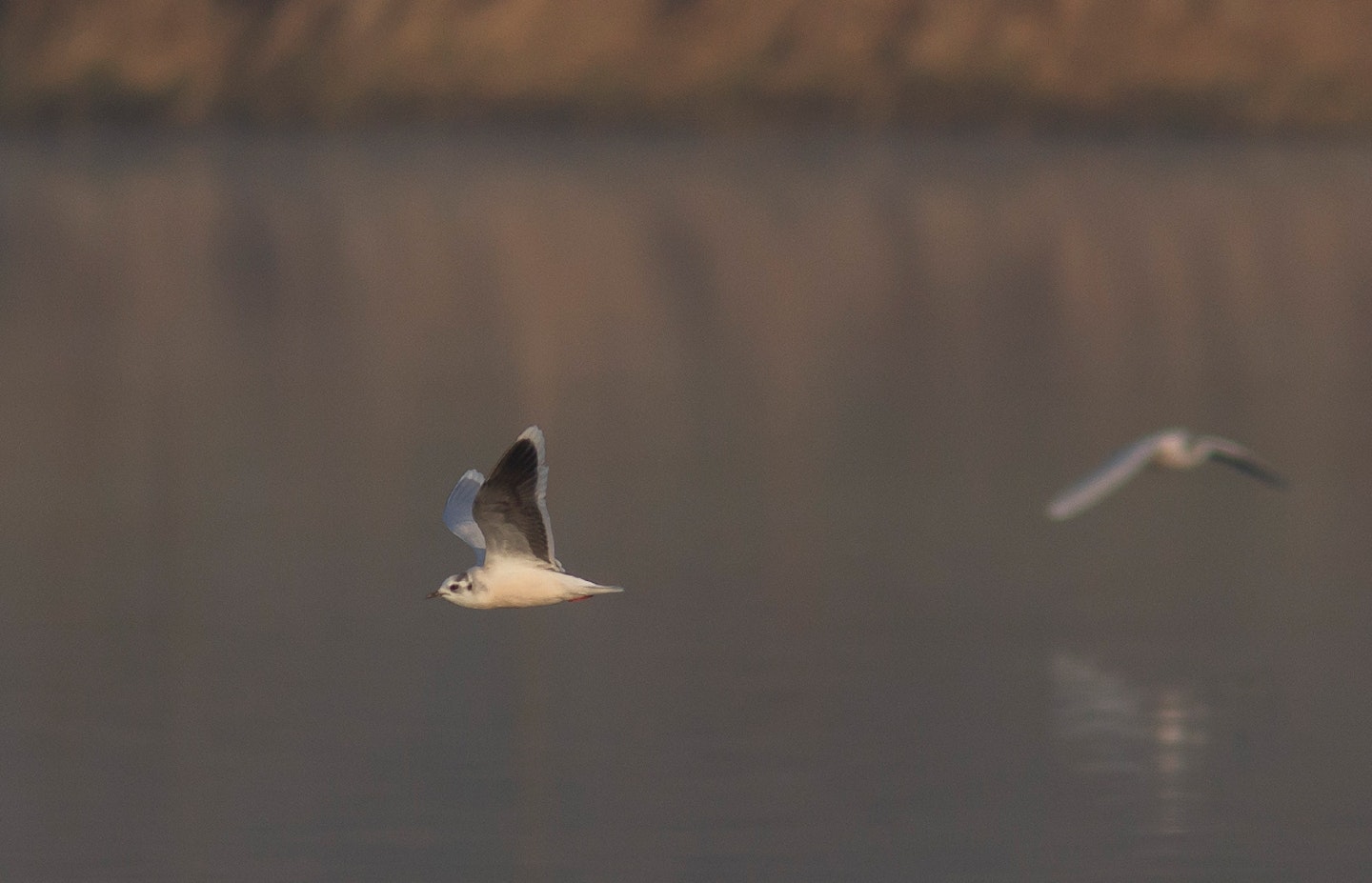
Wednesday 23 March 2022
I was back at Ferry meadows as usual this morning and managed a few goodies, including my first singing Blackcap of the year, a 'flock' of 7 Sand Martins, an Otter on Gunwade Lake, singing Mistle Thrush and a beautiful pair of Grey Wagtails checking out potential nesting sites on the south shore of Gunwade.
Tuesday 22 March 2022
I started early this morning, but not at Ferry Meadows CP on my bike, but at the Nene Washes at Eldernell (part of the Nene Washes), with the aim of seeing a reported dark-bellied Brent Goose (very scarce around here). I was greeted by five Great White Egrets and soon found a goose flock including two Barnacle Geese (a pair, and possibly from one fo the feral breeding populations, perhaps in Bedfordshire). There were a few Garganeys on the flood, part of a bit of a wave of the species into the country in the last few days. A couple of Cranes were around. Sadly, the Brent Goose eluded me. I cheekily returned at lunchtime, as the Brent had been relocated, and was tickable even from the near the car park!
Monday 21 March 2022
Like Friday, it was a stinker of a freezing foggy morning today. I could barely hear any birds through the dense fog, let alone see anything. The eventual highlight was a pair of Grey Wagtails working the beach and jetties near the watersports side of Gunwade Lake, potentially looking for a nesting site. They are great looking birds, and this was the first time I have seen a properly black-bibbed male this year.
Sunday 20 March 2022
The highlight of my day, today, was seeing a pair of Little Ringed Plovers on the Etton Pits. I hope they can successfully breed on these dynamic and ever-shifting gravel pits again. Thes were a year tick for me, taking my PBC year list to 130 species.
Saturday 19 March 2022
This morning I went with my friend Will to a site west of Peterborough where Lesser Spotted Woodpeckers are just clinging on (though it s hard to see them surviving much longer). Alas we failed to see or hear any. But it was splendid in the wood, with a very good number of singing Chiffchaffs battling for position. There were Fallow Deer and Muntjacs, Nuthatches and Jays, Treecreepers and Siskins, displaying Sparrowhawks, and the two common woodpeckers. There were even singing Redwings. But not a sniff of LSW. I heard a Brambling at one stage,
Friday 18 March 2022
It was very foggy at lake level, this early morning, but I still managed to hear a Brambling flying over (a park year tick for me). Also, I could hear an Otter calling on the far side of Gunwade Lake (which I couldn't see through the fog), and then spotted an adult female Otter feeding under the T-shaped floating pontoon jetty by the watersports centre. It later swam off into the fog... Later in the morning, the BW editorial team of me, Matt, Mark and Tim met David Lindo, the Urban Birder, by the old office, and we all went for a nice wildlife walk around Ferry Meadows together on this glorious sunny morning (the fog having burnt off). We got superb views of the same Otter I had seen earlier, up by the Swallow Bridge channel. Birds seen on our walk included plentiful raptors (mainly Buzzards and Red Kites) and a few Snipe on Heron Meadows, where we had a bit of a dabbling duck workshop. Tim, in particular, is new to the birding game, and always willing and keen to learn.
Thursday 17 March 2022
I had bit of a session at the 'viewing platform' overlooking Gunwade Lake, Ferry Meadows CP, this morning. My knees are sore and they don't want to do too much walking, so I am using the wait and see method of birdwatching a lot these days. Highlights included a flock of 40-odd Redwings, a decent number of singing Chiffchaffs and best of all, a drake Mandarin flying over Gunwade and, later, Lynch lakes. Mandarins are scarce birds in the Peterborough area, with very localised and secretive breeding sites. But we usually have one or two in the park during any given year, though I am not usually there to see them! Later, while sitting in our sunny garden, I saw a Buzzard overhead, being escorted from the area by a couple of the local Herring Gulls.
Wednesday 16 March 2022
It was a day of promise at Ferry Meadows this morning, but little delivery. The highlight of the 50-odd species I recorded before work was a Shelduck 'cutting the corner' over Gunwade Lake. By that I mean heading from one stretch of the River Nene, and taking a short cut to the next straight bit, missing out the meander of the river inside which the lakes are surrounded.
Tuesday 15 March 2023
I was back at Frampton today, for seconds of the White-tailed Lapwing with Matt Merritt and Tom Bailey from Bird Watching. Matt and I were testing a Kowa scope as our excuse for going to see the lapwing (and Tom was there to photograph us doing it). Sadly, despite our efforts over about 5 hours, we couldn't relocate the bird today! Perhaps the 'best' bird we saw as compensation was a nice Little Stint, a bird I rarely see at this time of year. The scope is great, bu=y the way, and I will be writing a little about how it compares with my usual Kowa scope in the May issue of BW. In the night, my friend Hugh reported a Water Rail heard over his garden. So, I popped out into our garden for a listen. It can be a noisy place in the 'centre' of Peterborough, with a mix of constant traffic noise and sounds from Peterborough railway station and adjacent sidings (or whatever they are called). But, I was delighted to hear a Coot calling as it toured the neighbourhood, including flying directly over our garden. And just as I was about to go to bed at 11.30pm, a Water Rail came 'purring' over next door's garden, calling three times. It always astonishes me that Coots, Moorhens and particularly Water Rains (which are, let's face it, rubbish fliers) are among the most commonly heard 'noc-mig' birds over gardens at this time of year...
Monday 14 March 2022
The comfortable highlight of my wildlife day was the appearance of my first Sand Martins of the year, at Lynch Lake, Ferry Meadows CP. Lynch is the smallest of the three lakes in the park, and has a couple of islands, one of which is home to a Sand Martin 'nest box' with multiple sandy holes, which are very busy in the summer. Great to see these bold testers of spring's waters in the park
Sunday 13 March 2022
Tired of waiting for the White-tailed Lapwing to visit us in the south in the Peterborough area,I decided it was best to go and see it in situ at Frampton today. I took my friend Don G with me, who is rarely seen away from Ferry Meadows CP, but sometimes it is much better to go on a 'twitch' with other people. It put up a bit of a fight in the high winds, but we eventually got decent scope views of the exotic, lanky, yellow-legged, Asian vanellid. And very nice it was, too. Also at Frampton, which is invariably packed with birds, were such pleasant birds as Masses of Brent Geese, including one pale-bellied race bird, and all the classic coastal favourites we miss out on in the PBC area, like Avocet, Curlew and Bar-tailed Godwit. It is about 45 minutes drive from homes, so not the longest of trips. Even in times of extreme petrol prices, it is accessible...
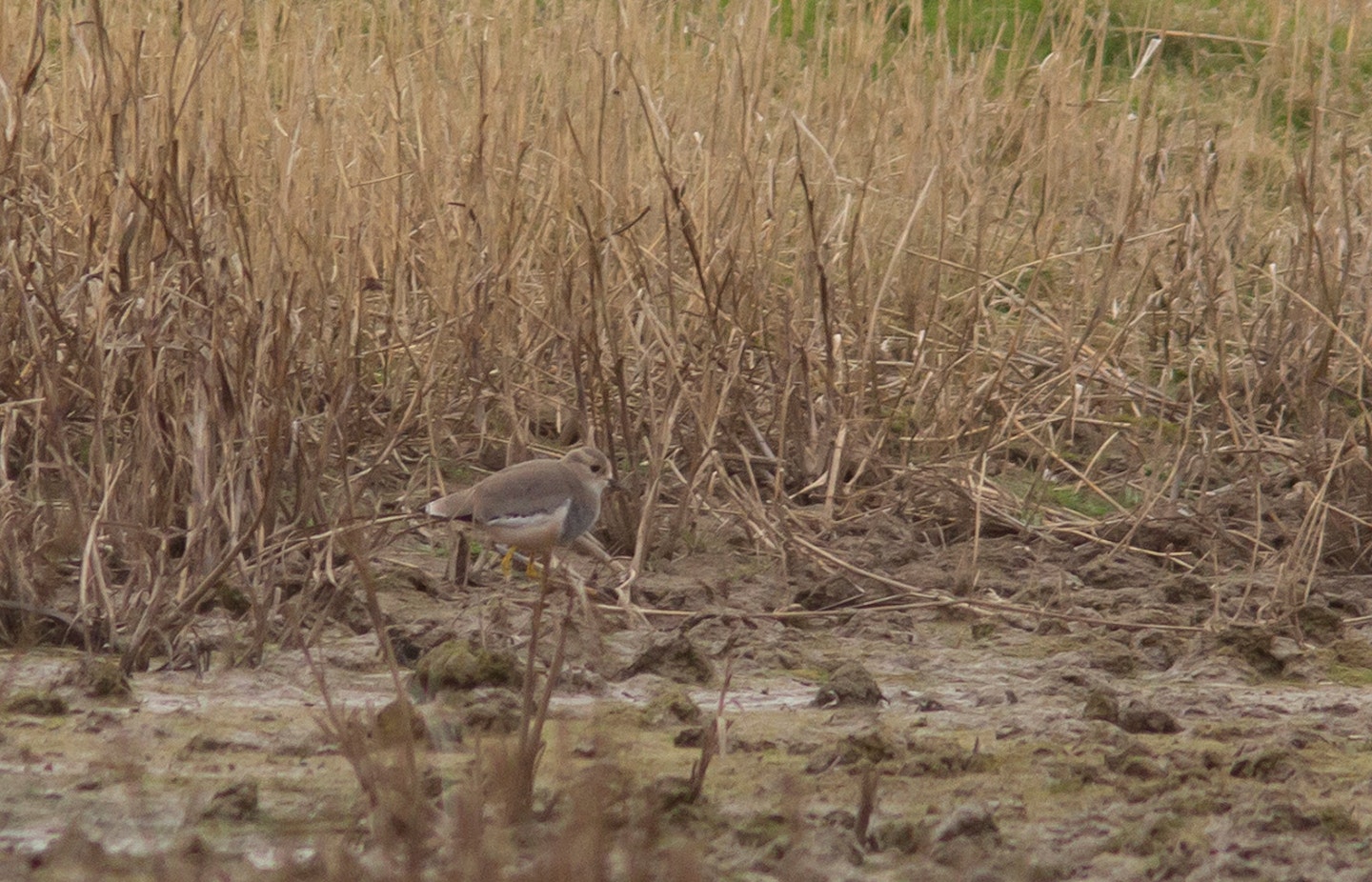
Saturday 12 March 2022
I started the day at March Farmers, sheltering along the bank of the Nene Way, from some pretty strong southerly winds. The clear highlight of a few hours vigil was a hunting ringtail HenHarrier I saw twice, firstly hunting over the River Nene to the north, then crossing over to hunt the counterdrain to the south of where I was sitting. Later, I drove up to the Deepings area, and saw a nice pair of Grey Partridges along the Deeping High Bank. This was year tick 129 for the Peterborough area for me. Grey Partridges are pretty scarce, locally, massively outnumbered by the 'introduced'/naturalised (aka restocked?) Red-legged Partridges, which don't quite have the same charm as our native partridge.
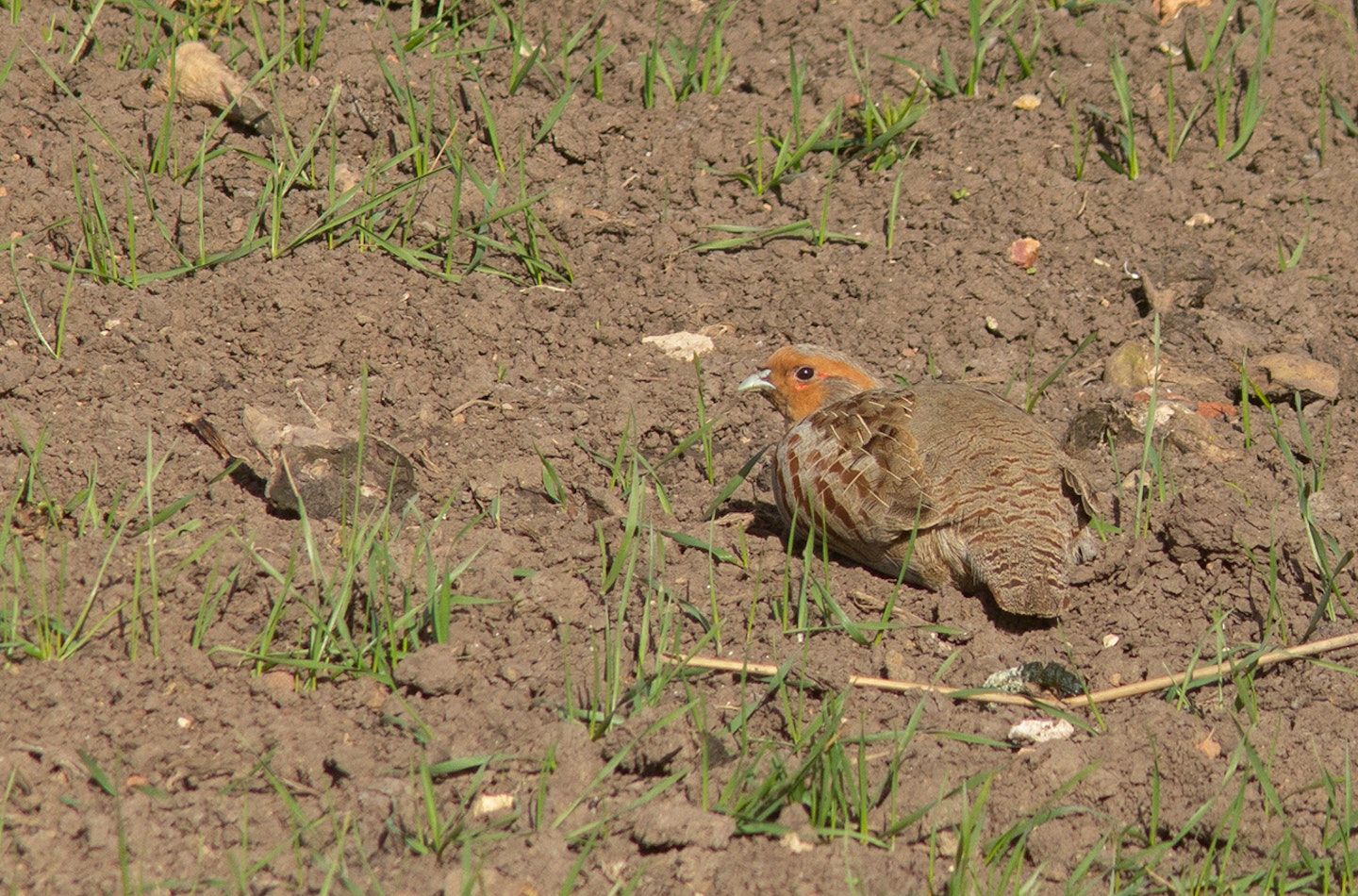
Friday 11 March 2022
With news that Frampton Marsh's White-tailed Lapwing had not been seen since 4.30pm on Thursday (when it was observed flying south-west), I decided to check the northern pits of the PBC area (namely the Baston and Langtoft pits complex) at dawn to see if it had turned up there. Sadly, there was no sign, nor anything particularly interesting to report from the mission. Actually, that is not fair... I saw my first Weasel of the year running across the road in front of my car, as well as watched a close Barn Owl and and a couple of Marsh Harriers, so I mustn't grumble. At lunchtime, I went to Tanholt pits, again, and met up with my Friend Will B. We were mainly looking for white-twinged gulls, but instead saw a nice first-winter Caspian Gull, which is a year tick for me.
Thursday 10 March 2022
The main highlight today at Ferry Meadows was a Great White Egret which flew in from the west over Gunwade Lake. We usually see two or three a year going through the park, but I am yet to see one land there. I don't know what it is that puts GWEs from stopping at FMCP; Grey Herons and Little Egrets seem happy enough with it... Other highlights included an increase in the number of singing Chiffchaffs. There are still only a few, but increasing each day. Also increasing is the Lesser Redpoll flock feeding with Siskins in Alders at the edge of the car park by Gunwade Lake. Finally, I heard 2 Water Rails on Lynch Lake and a Cetti's Warbler calling there, too (and a distant 'peep' from an Otter on Gunwade!)
Wednesday 9 March 2022
I added two species to my FM22 list (that is an abbreviation for my Ferry Meadows CP 2022 year list) this morning, with a fly-by Shelduck and a pair of Egyptian Geese. I wonder if they are the same pair that hung around Gunwade Lake, last year. They were certainly enjoying the same area of the lake near the Lakeside café, as if they were familiar with it. The number of Lesser Redpolls near that café seems to have increased with at least a dozen and perhaps 15 feeding in the Alders (alongside Siskins) round the car park, as well as on the ground on fallen seeds. So far, there are none of the more unusual Mealy Redpolls with them...
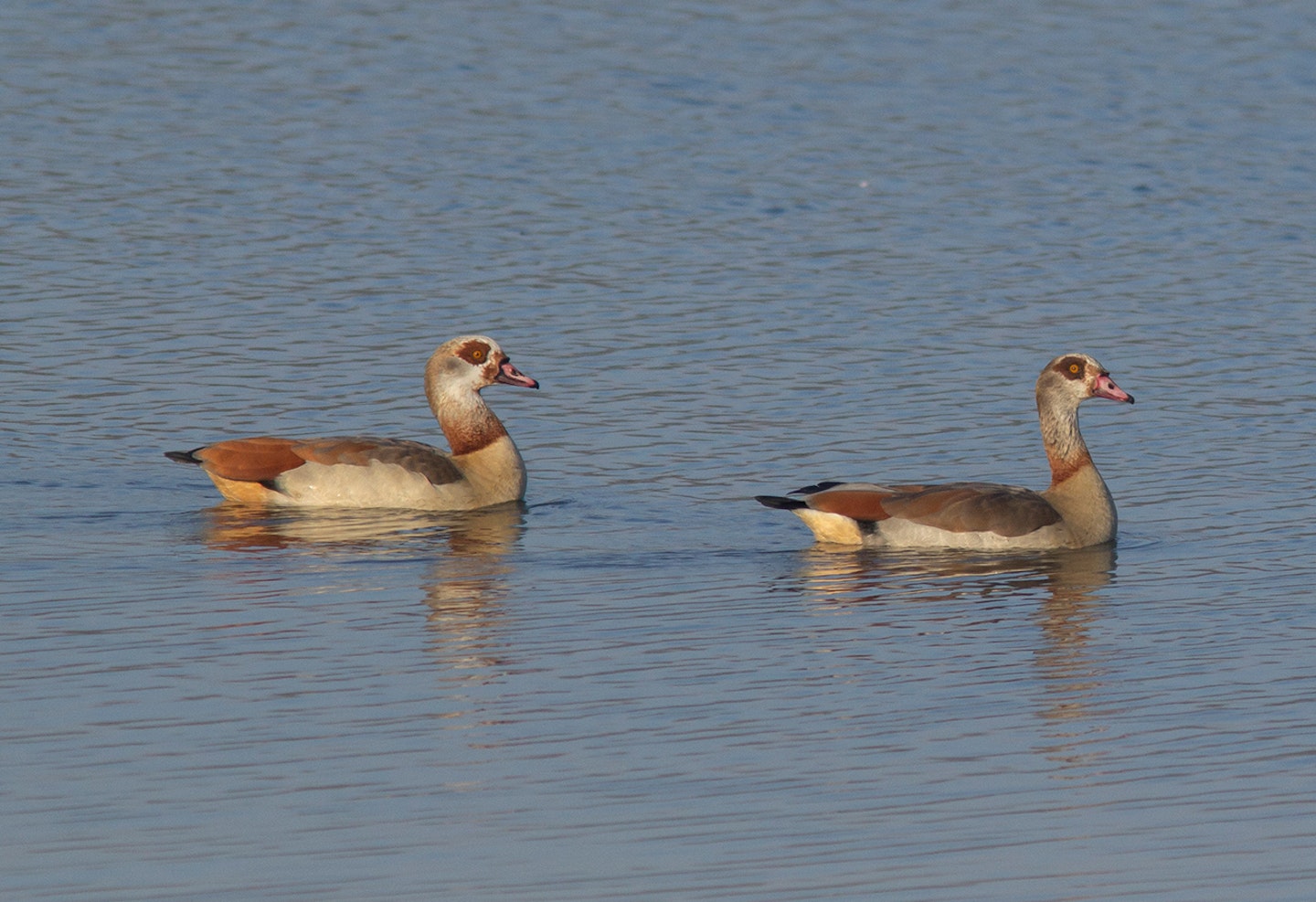
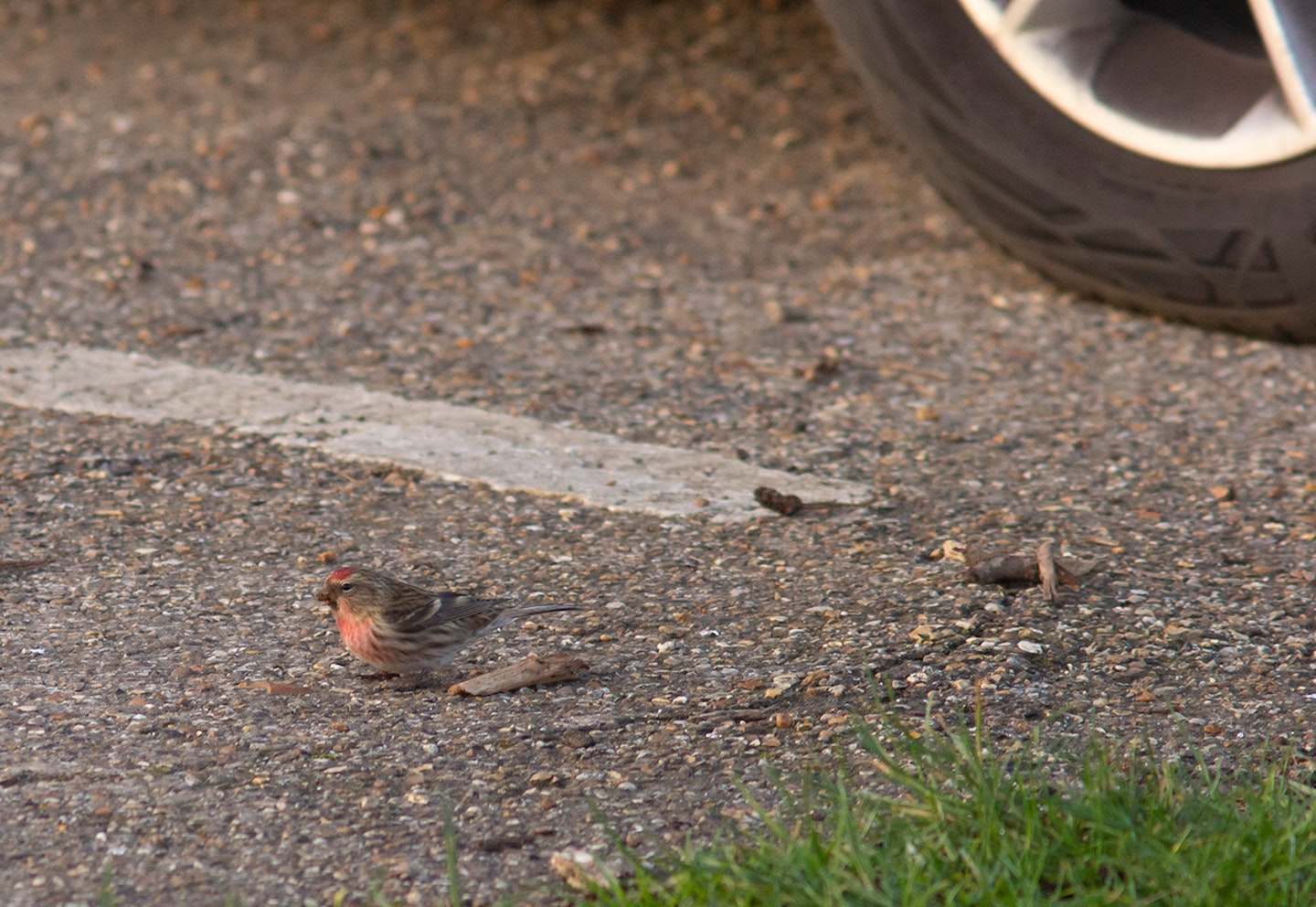
Tuesday 8 March 2022
The usual suspects at Ferry Meadows were joined by a lovely little flock of 7 Whooper Swans (all adults) on Gunwade Lake. There had apparently been a bit of movement of swans heading back north on the previous evening, so these birds were probably part of that activity and stopped for a rest, drink and to psyche themselves up for the long flight to the breeding grounds... Anyhow, they were gentle honking and nodding their heads at each other and occasionally visiting the swimming Black-headed Gulls and the odd Greylag, looking almost aggressive, in a very gentle Whooper Swan manner. And at 8.30am, almost on the dot, they flew off into the wind and I never saw them again. Until, next winter, my friends!
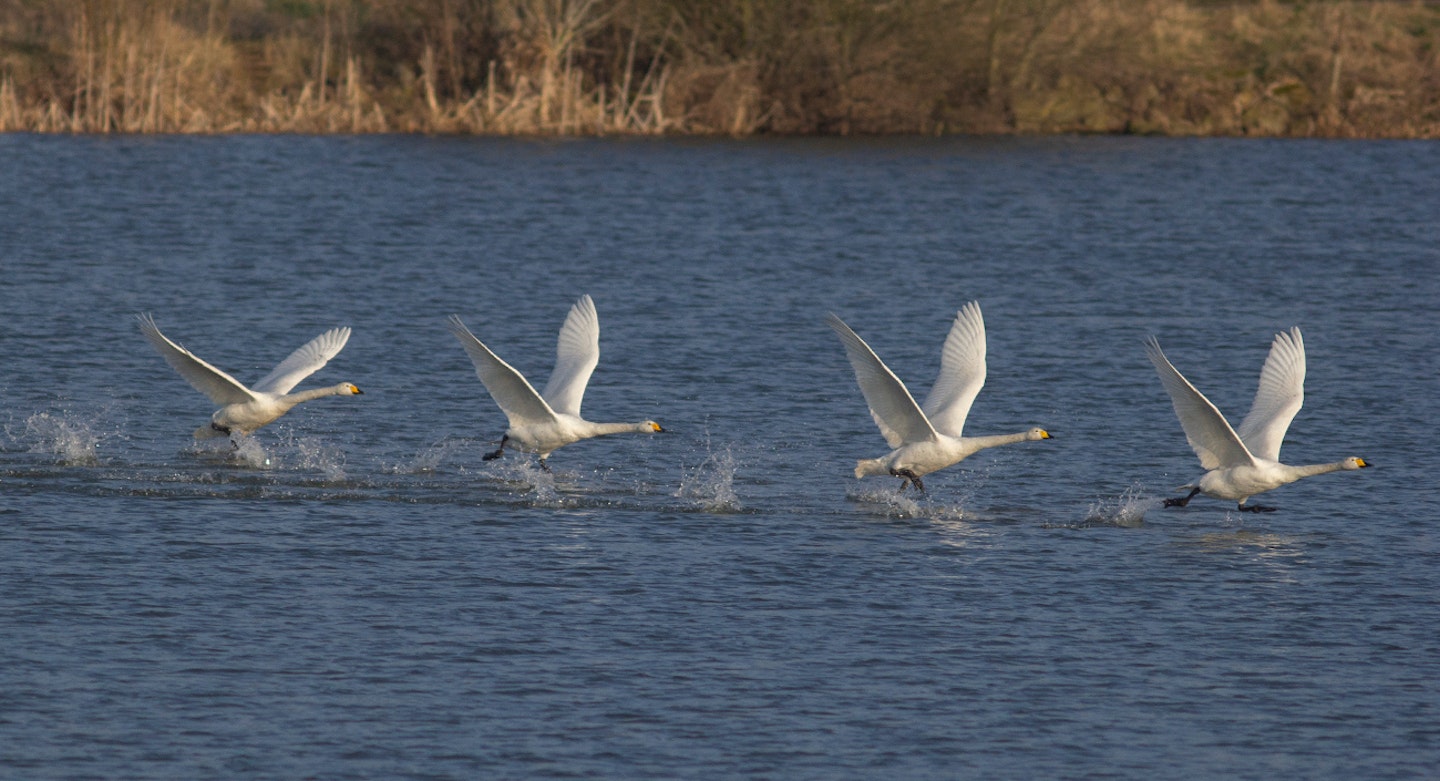
At lunchtime, I got a WhatsApp message on the Peterborough Bird Group from my friend Paul Bolton that he had found two Iceland Gulls at Tanholt Pits (a juvenile and a 2nd-winter bird). So, I hopped in a car and drove east a few miles. Luckily, both birds were still in position around the northern 'bathing lake'. Unfortunately, my 1.4x extender is playing up on my camera, so my shots were tiny! I spent only about 45minutes there, but was lucky to find a 3rd Winter Kumlien's Gull on the same pit. I had never seen one before, but there has been one in Cambs for a while now (further south and east than the Peterborough area). Judging by the plumage of the Tanholt bird, it is the same individual. Kumlien's Gulls are currently regarded as a subspecies of Iceland Gull, similar in plumage but with variable amounts of grey in the primary wing feathers and tail (as you can see in the upperpart photo, here)
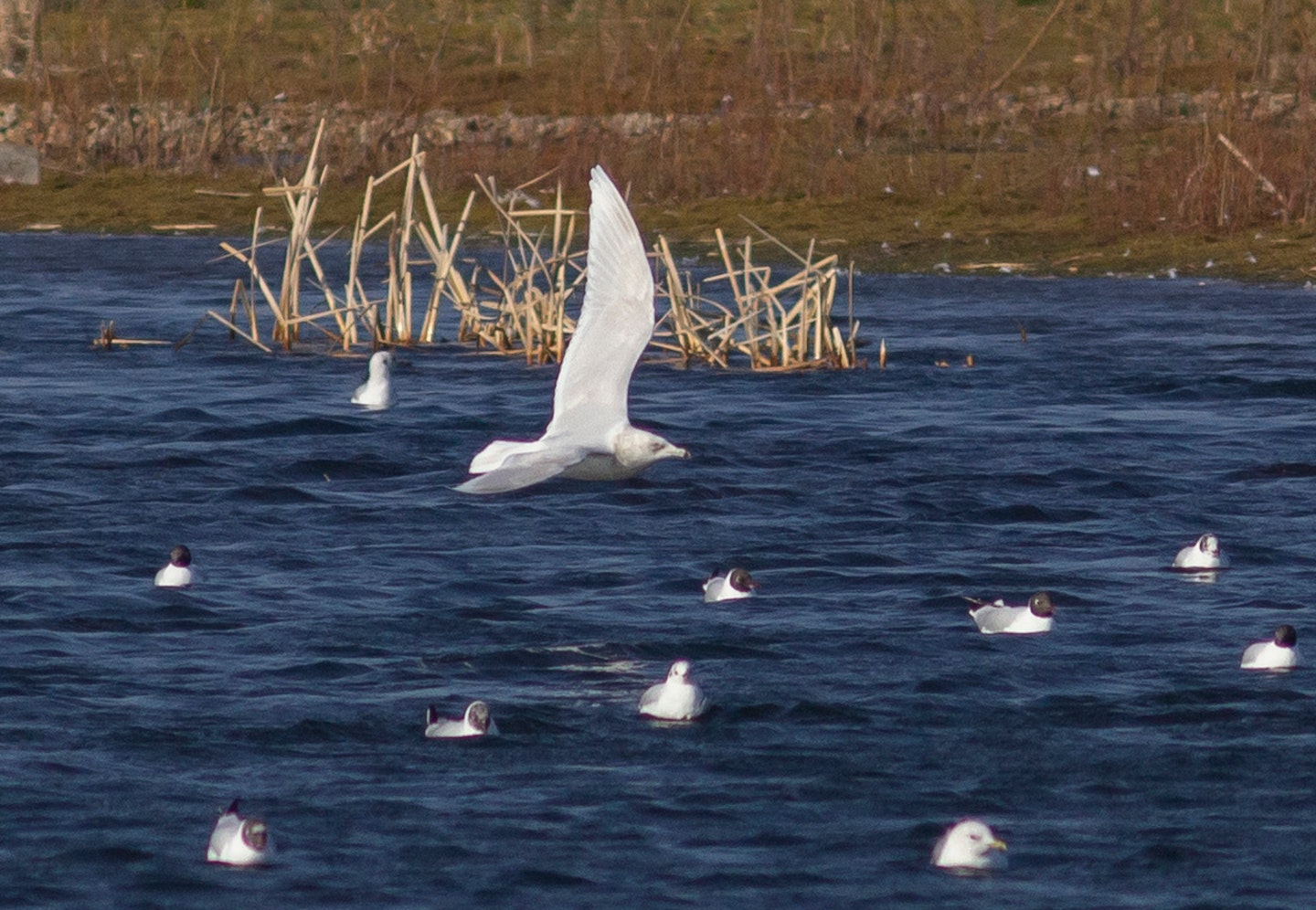
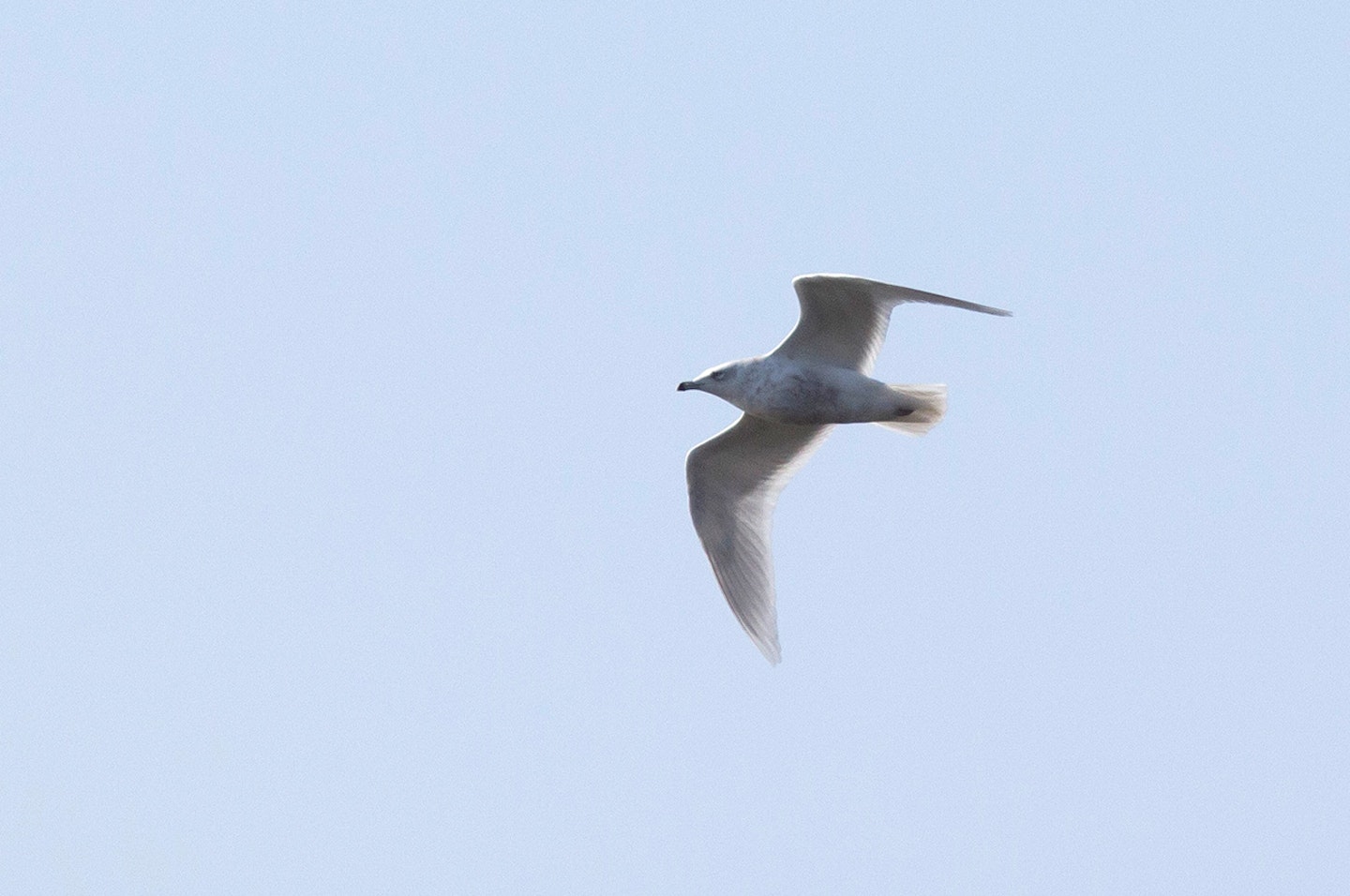
Monday 7 March 2022
I was back at Ferry Meadow on my bike this morning. Highlights included a Ring-necked Parakeet in a back garden less than half a mile from home, my first Chiffchaff in the park this year and my first Nuthatch there this year, a singing bird (encouragingly) in Bluebell Wood.
Sunday 6 March 2022
I decided to start my birding day at March Farmers, a viewpoint over the Nene Washes, despite the cold northerly blowing in my face! The first bird I heard as I mounted the bank was a Curlew calling three times. But it coincided with a terrible, freezing downpour. And after that finished I could see no sign of said Curlew, so it must have flown through (as they often do around here). I say often, but Curlews are surprisingly scarce in the Peterborough area. There is another viewpoint due north of March Farmers at a pumping station called Cross Guns by the River Nene. So I drove round there, and checked out the last known breeding Tree Sparrows (in a garden by the pumping station, where there are a few feeders). From the bank, there were the usual suspects: masses of Wigeon and Golden Plover and an increased Icelandic Black-tailed Godwit flock over recent visits. Indeed I counted them, after photographing them while they were flushed by a Peregrine... I counted them by putting coloured dots in groups of 100 on the photograph in Photoshop. That is how I know there were 2,689 of them!
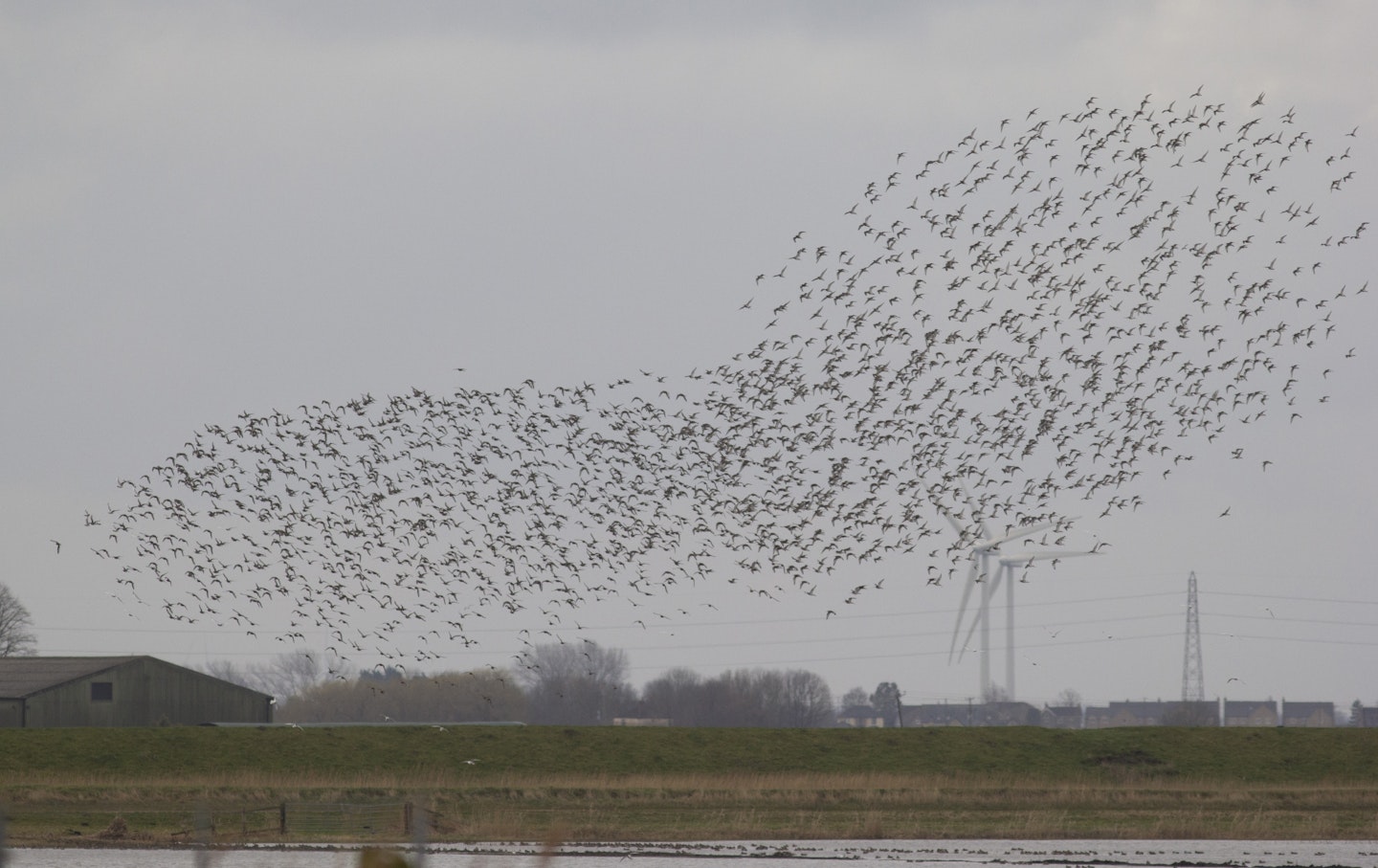
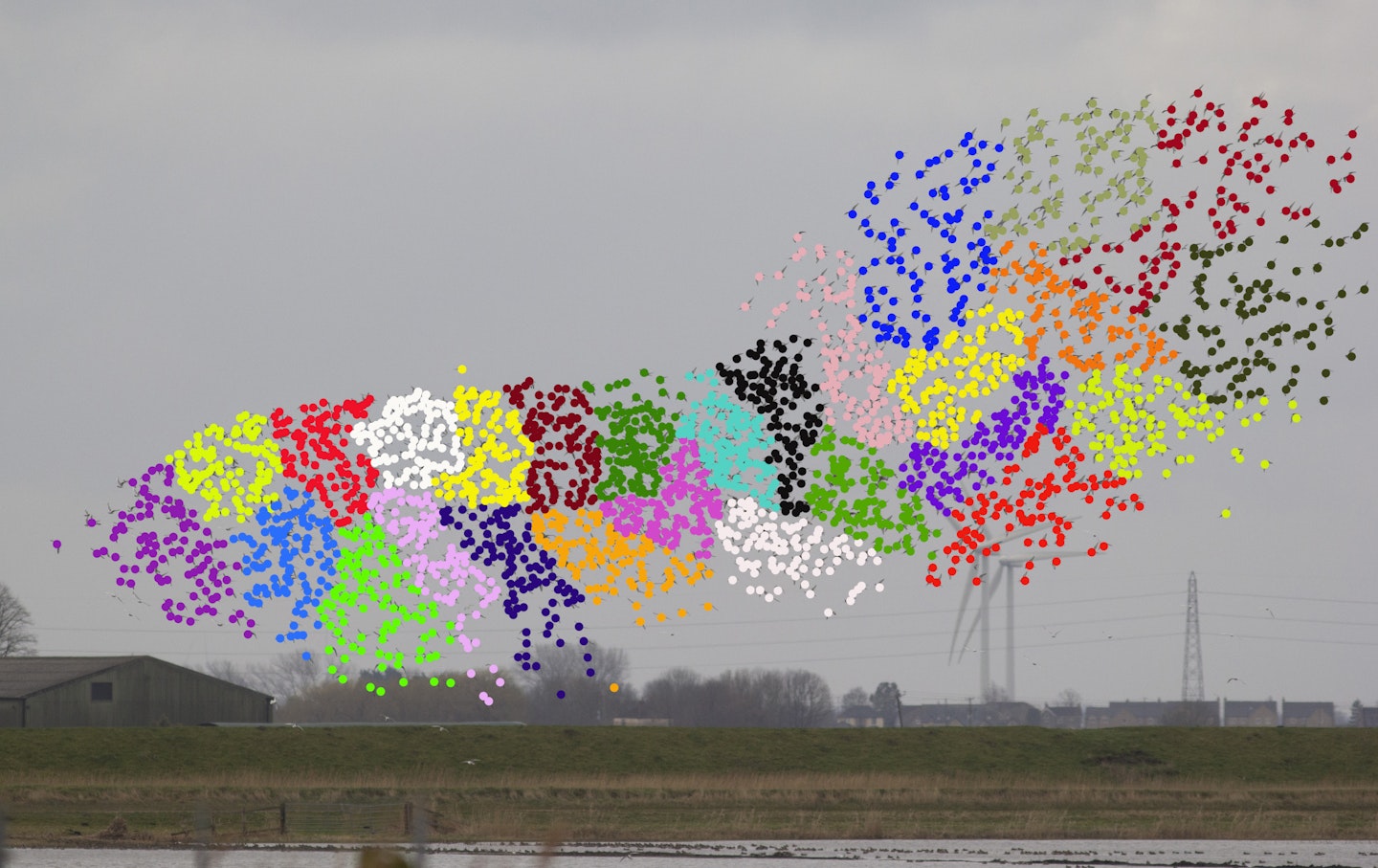
Saturday 5 March 2022
For the second morning running, I started my birding day at Etton pits. Obviously, my target was the Red-breasted merganser, but in broad daylight. Sadly, it had left before I arrived (I should have got up earlier!). A single Redshank and a single Dunlin on the silt pit were my best birds at the site this morning, so I tried some of the other Deepings pits, including Baston and Langtoft pits (a couple of Goldeneye and a Peregrine) and Deeping Lakes east pit (Pink-footed Goose, as usual with the Greylag flock). Later I went down to Tanholt Pits to look for gulls with my friend Will Bowell, but there was nothing worth reporting there (indeed very few gulls at all on the main 'bathing lake')
Friday 4 March 2022
Today started off as an ordinary day and ended with a flourish. That said, I didn't start my day at Ferry Meadows CP, but instead drove to north Etton to see if the Curlew found there the previous evening had hung on until the morning at the pit complex just outside the small village. Sadly, it hadn't. I recorded 40 odd birds before breakfast, there and at Deeping Lakes east pit. These included some interesting birds we don't see often at FMCP, such as Green Sandpiper, Oystercatcher, Red-legged Partridge and Pochard. In the evening, my friend Hugh Wright (who had found the Curlew that got away) called to say he had just found a drake Red-breasted Merganser at that self same Etton pit complex. RbMs are not only very rare in these here parts (less than annual), this was an adult drake of my favourite species of duck. Luckily, I got there with enough light to see the bird pretty well. It is only the fourth Red-breasted Merganser I have seen in the county of Cambridgeshire (after one at Ferry Meadows a few years ago and two on the River Nene just east of Peterborough last year), and my first ever male in the county. While I was watching it through my scope in the gloaming, I twice saw a hirundine fly through my field of view: a nice early Sand Martin.
Thursday 3 March 2022
It was nice and mild and spring-feeling today, with a hint of an easterly wind bringing hope of some migration. Hover, Ferry meadows did not produce the goods! Highlights included a couple of Snipe and a Little Egret on the partially flooded , damp fields called Heron Meadow, a couple of Kingfishers and a few Siskins. I look forward to tomorrow...
Wednesday 2 March 2022
I am still waiting for the exciting part of spring to kick off. Highlights today at Ferry Meadows CP included very decent views of Cetti's Warbler (a very difficult bird to see well), which was singing on the edge of the Lynch Lake, the smallest and most central of the three lakes at FMCP. I could here an Otter contact calling (which sounds like a bird going 'peep'), but I couldn't see it (I think it was coming from the usual area on the north side of Gunwade Lake, and probably from within cover).
Tuesday 1 March 2022
Spring kicked off with a mild start, but there was little exciting bird action at Ferry Meadows CP, unfortunately. It feels like we are going to get something exciting any day soon. Even if it just the first Sand Martin of the year!
Monday 28 February 2022
It was back to Ferry Meadows CP on my bike this morning, where the highlight was an Otter (probably the usual adult female) visiting the southern shore of Gunwade Lake surrounded by an entourage of Black-headed Gulls. Treecreepers have been singing around the car park near the Lakeside café, which is always lovely to hear. Other highlights included Red kite, Little Egret and Lesser Redpoll hanging out with the more numerous Siskins.
Sunday 27 February 2022
I heard an earlyish start this cold but relatively still morning, at a site west of Peterborough which may be the last place in the Peterborough area where Lesser Spotted Woodpeckers still try to breed. Again, I met my friend Hugh W in the woods there at a favoured LSW site (in the last few years). Between 7.30am and 8.30am we just heard a few distant Great Spotted Woodpecker drums. But, having spread out to try different areas, I was lucky enough to hear a few distant rattling, long, even drums of a Lesser Spotted Woodpecker. Hugh came a-rushing, but all we heard was an ambiguous drum in the far distance. It was all very unsatisfactory, but at least we know Lesser Spotteds still exist there! I'll be back.
In the later morning and for the rest of the day, I was near Swallow Bridge on Gunwade Lake, Ferry Meadows, hoping for a chance to photograph Kingfishers in better light and perhaps the odd Otter. I was there for more than five hours (until my knees could take no more) and managed a few shots of Kingfisher and a couple of Otter shots. Others at the site took hundreds of photos as the action from both Kingfishers and Otters went on just about continuously!
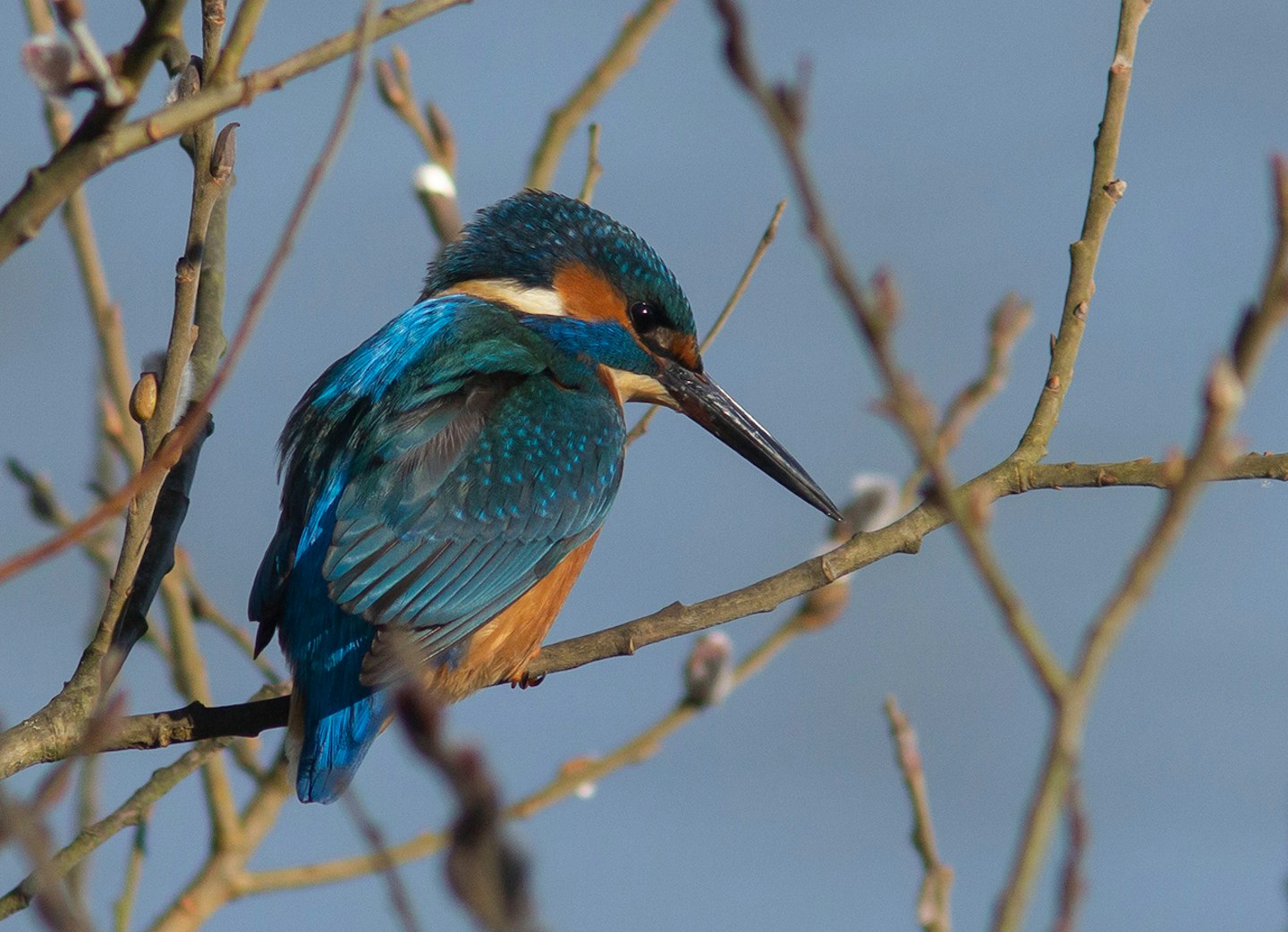
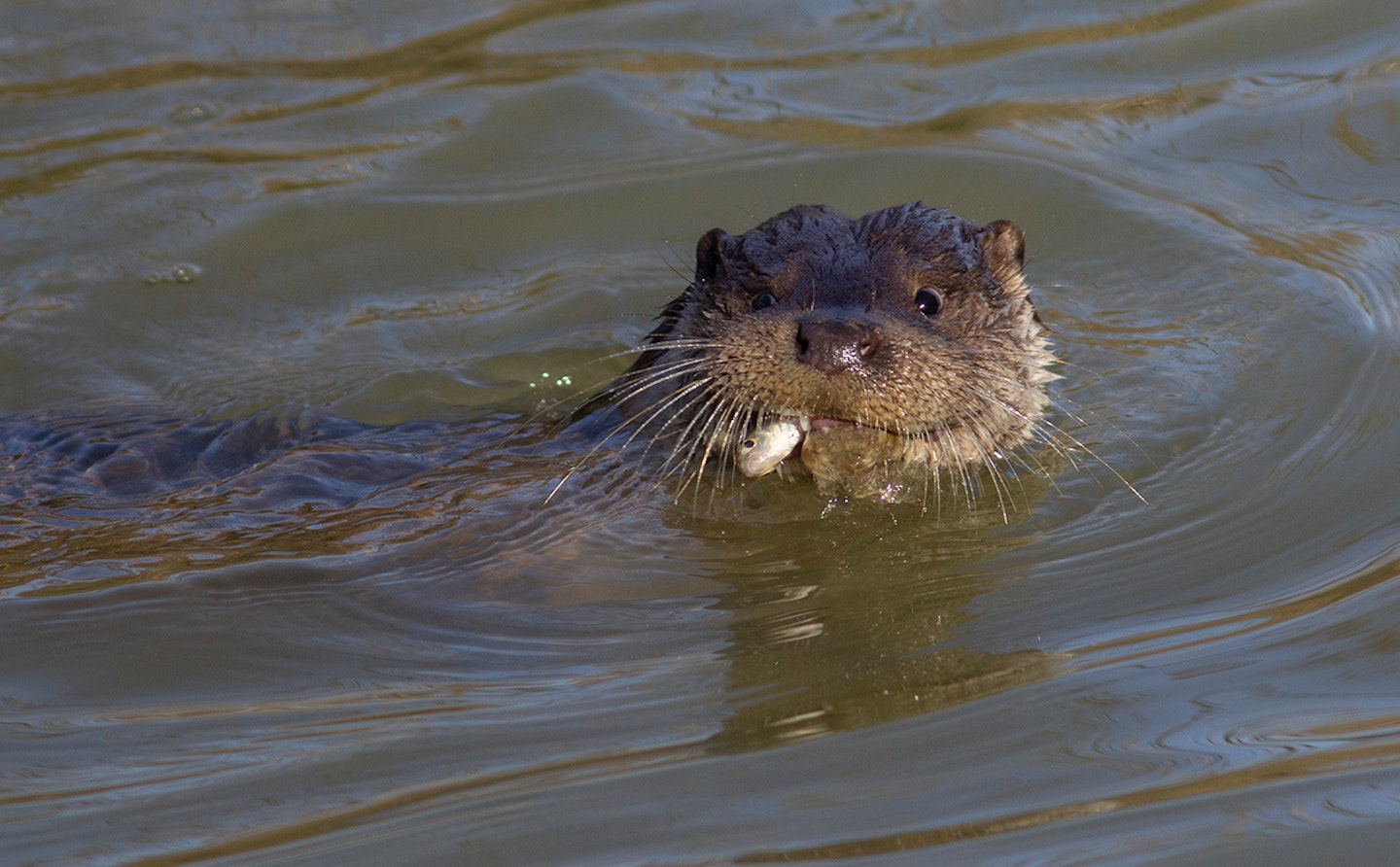
Saturday 26 February 2022
I had a bit of a slog around various sites near home today. I started by covering the Deeping High Bank (which was quiet), then headed to Deeping Lakes LWT, which wasn't much busier (the highlight being a colour-ringed Herring Gull, ringed on the Thames in 2015). I then ventured to the Baston pits and Baston Fen, where much walking produced nothing really of note. After that, I decided to drive down to March Farmers (towards the eastern end of the Nene Washes).
Highlights there were a single flock of c1,300 Black-tailed Godwits, thousands of Golden Plovers, a few Marsh Harriers, 100s of Pintails and a pair of Peregrines which were giving all the other birds a hard time! I counted a single flock of more than 50 Ruff and there were a few Dunlin around.
In the afternoon, my dear wife Jo and I went down to Ferry Meadows to see the Otters together. A couple of Otters were playing around and fishing near Swallow Bridge and a pair of Kingfishers were also showing very well there, allowing close views and a bit of photography.

Friday 24 February 2022
This morning, after a few quiet (yet windy) mornings at Ferry Meadows CP, I could hear an Otter calling somewhere on Gunwade Lake. I was on the south side, at the Lakeside café viewing platform, and thought the Otter must be nearby, so explored the area along the shore. But I soon noticed that some people on the opposite side of the lake, at Swallow Bridge, were apparently photographing at Otter. So, I cycled round there only to find the family of four young Otters and their mother, all making peeping calls at various stages, and fishing there. The strong winds must have blown the sound of all the way across the lake. They were very playful and active (as always) and would have made great photos if the sun were in the right direction... and if I had more time there.
In the afternoon, I met up with my friends Hugh Wright and Charlie Kitchin the site manager for the RSPB Nene Washes for a bit of a session on the washes (partly surveying the birds, partly looking for something exciting). Before I met them, I checked the flooded 'Skating Field' by the Dog in a doublet Sluice (on the Nene), which at least 50 Shelduck feeding on it.
There are a huge number of birds on the washes complex, which stretches several miles from just east of Peterborough to Guyhirn in the east. Highlights of our trip included one or possibly two adult male Merlins, 9 Short-eared Owls (including one with asymmetrical pupils), perhaps 1,200 Black-tailed Godwits, several thousand Golden Plovers, a few hundred Whooper Swans, perhaps 150 Ruff, 50-odd Dunlin, half a dozen Stonechats, at least 11 Cranes and several Marsh Harriers.
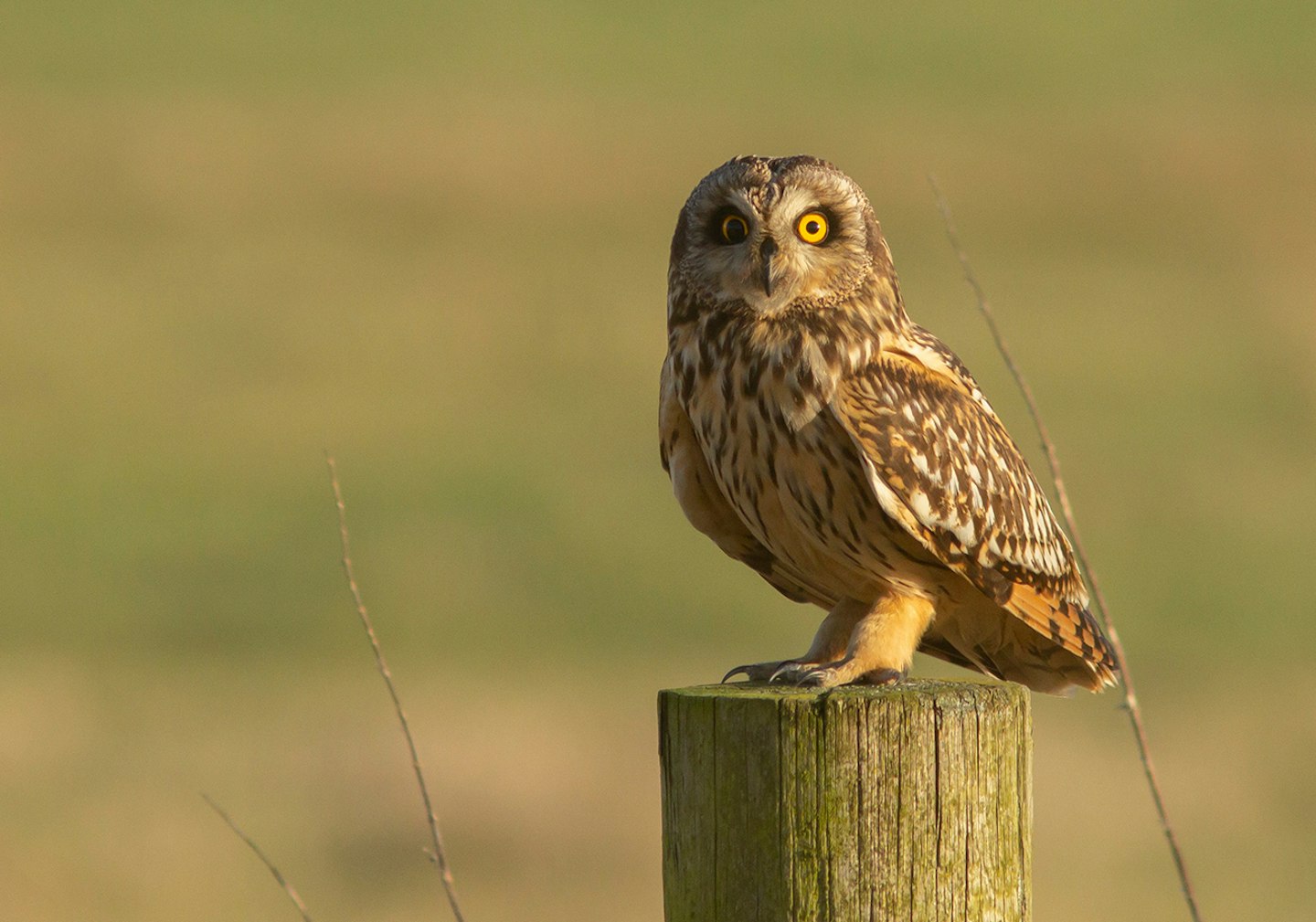
The Nene Washes are undoubtedly the best place for birds in the whole of the Peterborough area. It really is spectacular. And having a chance to see it from Charlie's truck rather than from the raised bank along the southern edge put a different twist on the place.
Tuesday 21 February 2022
Monday was another write off wildlife-wise for me. Today, though, did my usual cycle to Ferry Meadows CP. The highlights were a large female Sparrowhawk: just the sort of bird which has the unwary claiming a Goshawk... and an Otter swimming past the 'viewing platform' at the Lakeside café overlooking Gunwade Lake. A couple of Kingfishers were also putting on quite a performance in that area, presumably as the shallow water was less muddy in the sheltered bay than elsewhere in the lake.
Sunday 20 February 2022
The weather was poor again today, but I decided the best bet for me would to stake out 'Bittern corner' at Deeping Lakes. I sat in the car through wind and rain and waited. I managed to rack up a list of 47 species during my vigil, but with no Bittern. The highlights were the appearance of a Dunlin (the first I have seen there, this year) and a Great White Egret which flew in to land near me in my 'mobile hide' before it was flushed by a passing car!
Saturday 19 February 2022
Yesterday was so windy I didn't even get out in the garden to see what was about. It is hard to catch up on which named storm we are on... Today wasn't much better, but it is a Saturday so it would be a waste not to get out in the thick of it. Wildlife highlights included a brief glimpse of a Stoat in full 'ermine' (ie white all over with just a black tail tip), and a Barn Owl out hunting in the day (presumably challenged by the very windy conditions to successfully hunt during the night).
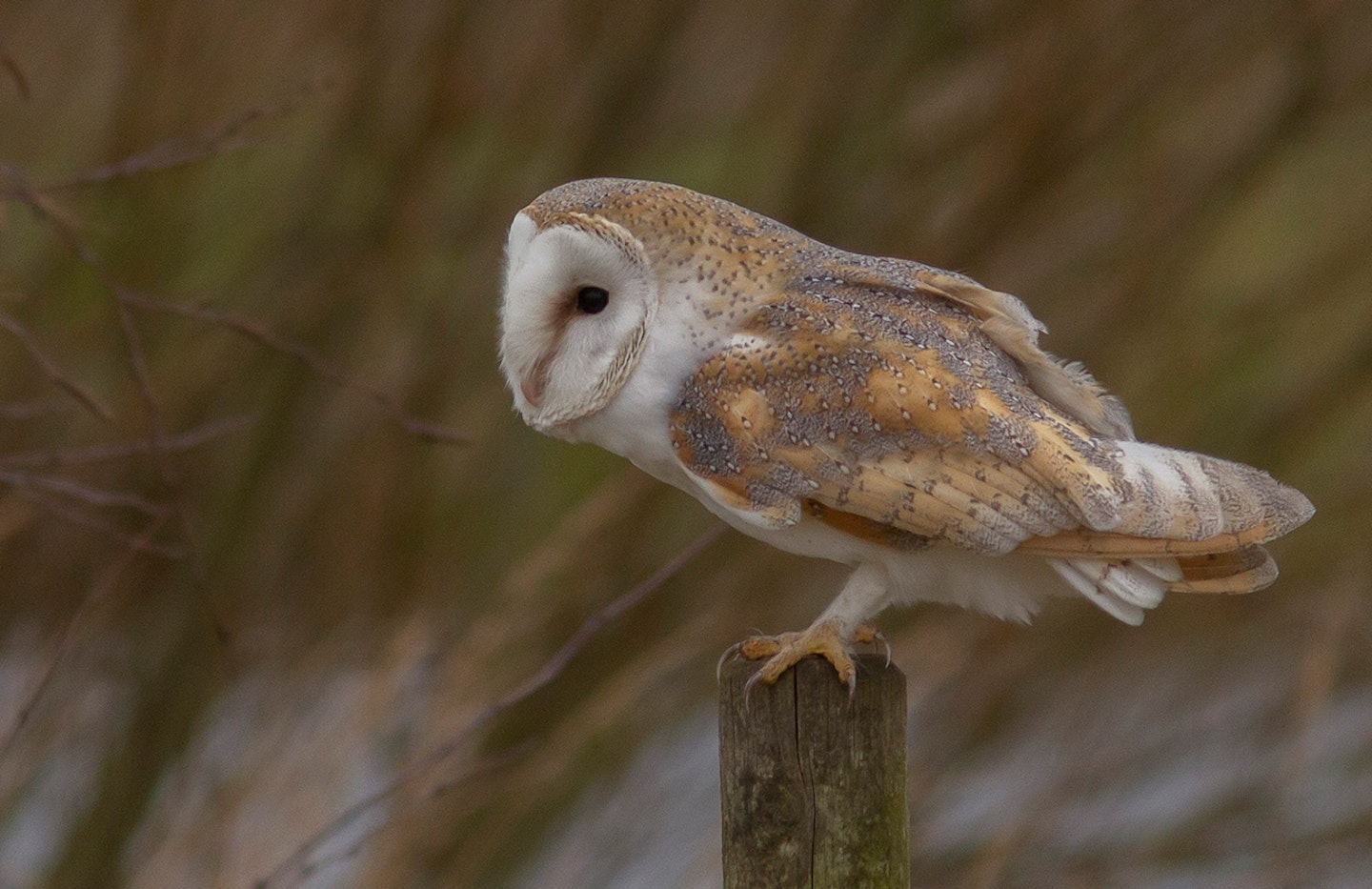
Later, I popped over from Baston pits to Baston Fen and Tongue End beyond, I was I was told the Cattle Egret was 'showing well' there. It certainly was: it was feeding on the verge right by the side of the road. I remember the days when these were rare and elusive birds. I think I may have to write my monthly Weedon's World column along this theme...
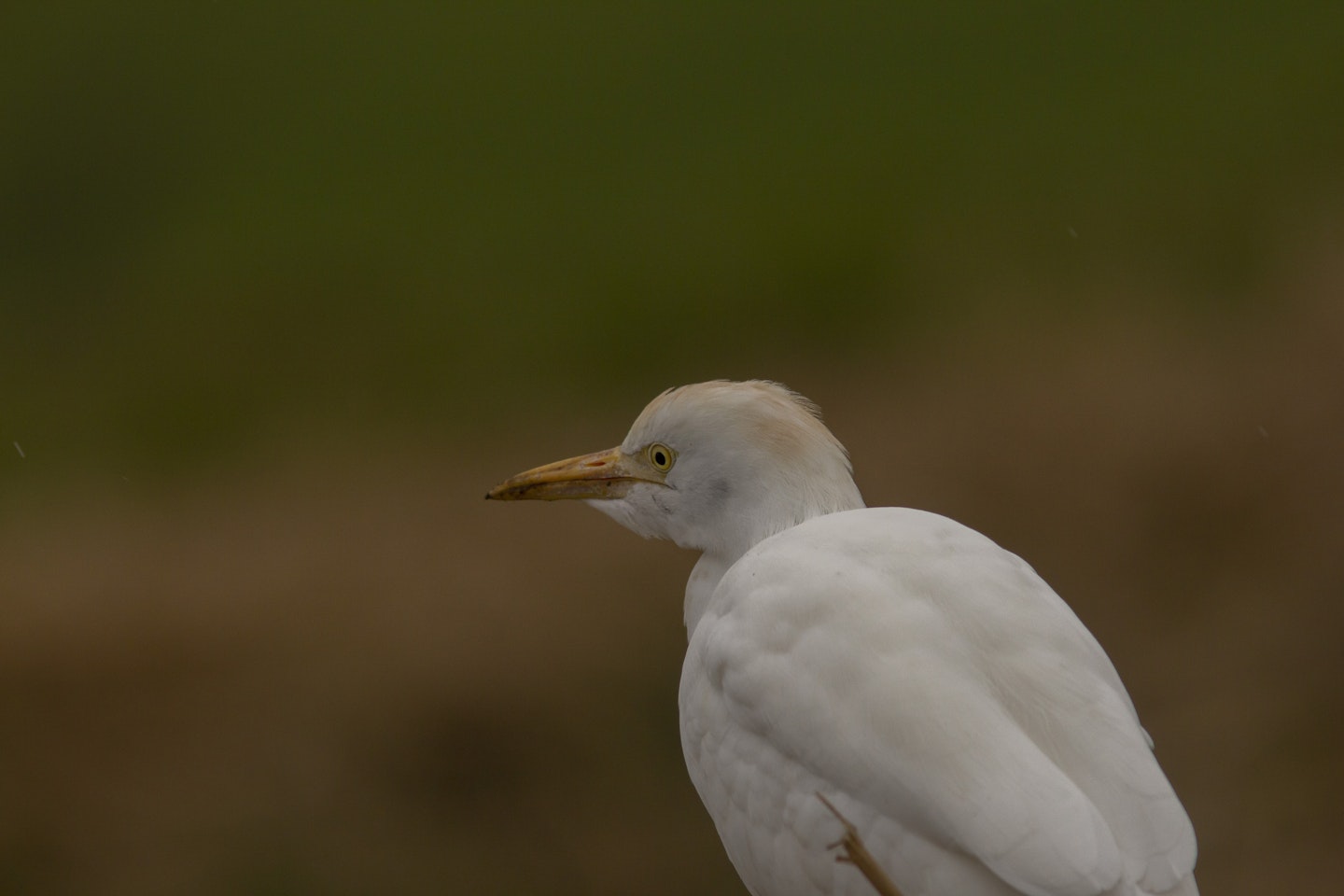
Later in the afternoon, my friend Will B found a Bittern close and out in the open at Deeping Lakes (east pit). Unfortunately, it had gone into the reeds by the time I got there. But I decided to use the car as hide and wait for it to emerge. It did eventually, long after sunset, when the it was almost dark. It climbed the reeds to a height of about 5 feet, and stayed there for a while, but disappeared when I looked away. Still, great to see a Bittern up close, even if in half light. It is a year tick, too.
Almost (but not quite) better than the Bittern was the flight of honking wild swans coming into roost on the east pit of DLLWT. I counted 190 Whoopers and a single pair of Bewick's Swans.
Thursday 17 February 2022
I was back in the saddle (or on the saddle) this morning, at FMCP. Highlights included the same three Stonechats I saw earlier in the week, an Otter on the River Nene, near Bluebell Bridge (a suspension footbridge with one of the nicest river views in the Peterborough area), and glorious pair of Mistle Thrushes on the edge of the golf course which runs alongside Bluebell Wood. They are my favourite thrushes (apart from Ring Ouzels), with an elegant wildness about them. Great birds.
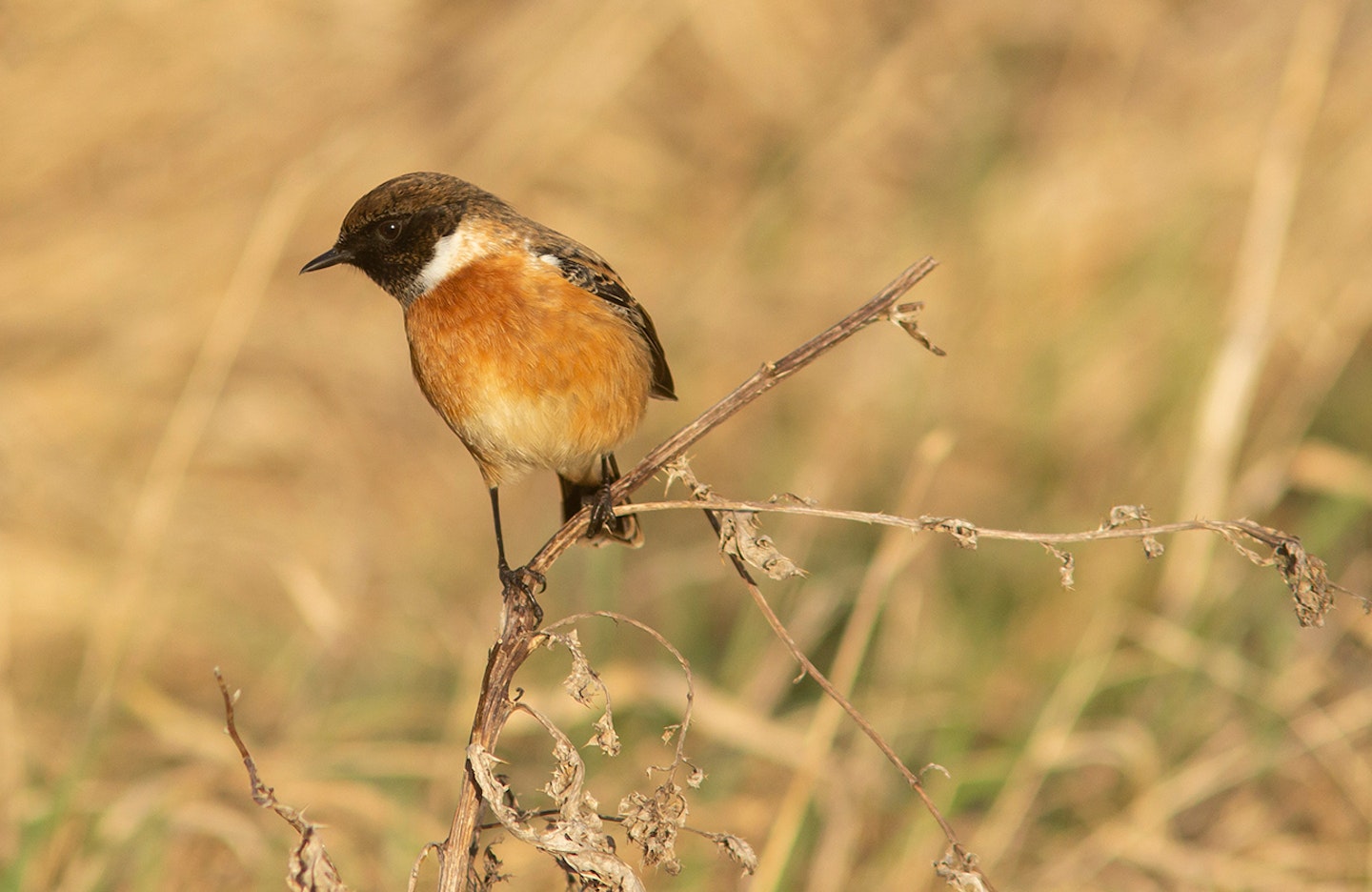
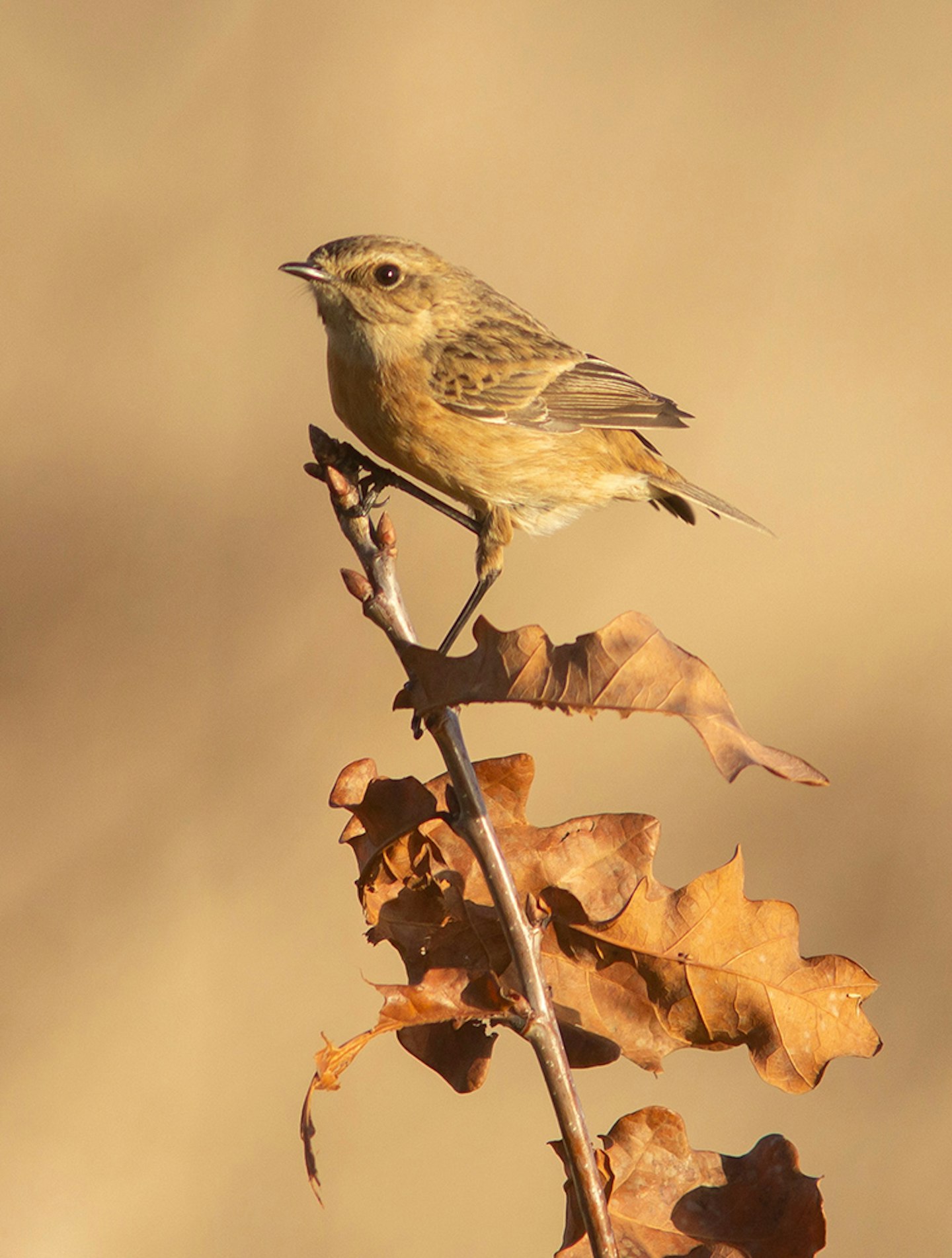
Wednesday 16 February 2022
It was so windy and grim when I woke this morning, I decided to curl up and get an extra couple of hours sleep. So, I skipped Ferry Meadows, and indeed stayed in all day. I could enjoy the Song Thrush singing in the garden somewhere and the pleasing chirrups of the sparrows. But that was my wildlife day in full!
Tuesday 15 February 2022
I went anti-clockwise around Gunwade Lake (Ferry Meadows CP) this morning, hoping to catch the Stonechats in the glorious golden sunshine. As I got near the place where they were yesterday, though, the sun went behind a massive duvet of cloud. And the Stonechats weren't there, anyway. There was a little flock of 4 Lesser Redpolls feeding on some Alders, and up at Swallow Bridge, not far away, one of the local Otters was showing very well to the gathered crowd, as were a couple of Kingfishers.
Interestingly, the tame Grey Heron which is often near the bridge, wasn't fishing, but rather gathering sticks to build a nest. It flew off (stick in bill) roughly eastwards towards the nearest of the local heronries which is on the edge of the Milton Estate, on the western edge of Peterborough.
Also around Gunwade were a single Little Egret and the flirtatious pair of Goosanders, which had made it up to the floating pontoon bridge over the narrow gap which divides Gunwade from Overton Lake.
Monday 14 February 2022
I was back at Ferry Meadows this morning. Highlights were the continued presence of lots of Siskins, some nice Kingfisher flirtation action, the usual pair of Goosanders enjoying the fish near Swallow Bridge, Gunwade Lake, and at least 3 Stonechats on the north side of Gunwade. I am still waiting for something special to liven up my regular morning visits there.
Sunday 13 February 2022
News came quite late yesterday of an Avocet on the Nene Washes at March Farmers. These lovely waders have become very scarce in the last couple of years, so, I thought I would make a start there. I met my friend Hugh Wright and we both hunkered down as much out of the wind as we could, a few hundred metres west of the car park.
There were ridiculous numbers of waders, often being panicked into the air by the local Marsh Harriers and the odd Peregrine. These included about 1,000 Icelandic Black-tailed Godwits, thousands of Golden Plovers and Lapwings, about 50 Dunlin and probably more than 100 Ruff, plus 5 Oystercatchers, presumably new in. There were also thousands of Wigeon, but only small numbers of Teal and Pintail.
But there were no scarcer waders and certainly no Avocets... Let's hope there will be more later in the spring.
Saturday 12 February 2022
Unlike yesterday's still and sunny weather, today was windy, very windy. I popped up to Deeping Lakes, where at least I added Oystercatcher to my year list (this is a classic time for the local breeding Oystercatchers to return from the coast). The other highlight for me was a Raven over Southey Woods. They are getting more common around these parts, and are even quite a regular sight. But I still can't quite get used to them and am always thrilled to see them here!
Friday 11 February 2022
For a change, the BW editorial team (most of us) went over to north Norfolk with our usual photographer, Tom Bailey, basically to pose for photos to use in the magazine and on the website. We called in at just two localities: Thornham Harbour and Holkham Gap. The former delivered a nice range of waders, including Greenshank, lots of Redshanks, lots of Curlews and a single Grey Plover whistling past in a manic. There were also thousands of Golden Plovers and Lapwings being flushed in the distance.
It was also very pleasant to catch up with several Rock Pipts, not a bird we see very often around Peterborough, and certainly not in February.
One of the main targets at Holkham were the group of four Shore Larks which had been seen that morning. We found the right spot, but there was no sign of the birds. We relocated to a different area, and a bird photographer started shouting and waving his arms as if he had just found the larks and was letting us know. It later turned out that he was just trying to get us to wave back, so he could take a photo of us!
However, as he was pointing his lens vaguely in our direction, we turned round to see where the birds were (!) and lo and behold, Tom almost immediately picked up the Shore Larks feeding not too far from us. Nice bit of coincidence.
There were the usual masses of Pink-footed Geese by Lady Anne's Drive at Holkham, and we even picked out the first sky dancing Marsh Harrier I have seen this year, at a huge altitude.
Thursday 10 February 2022
There were 4 Otters on Overton lake, Ferry Meadows, this morning. I think they all looked the same size, so assume they are the 4 siblings often seen aroudn Swallow Bridge on Gunwade Lake. The Goosander pair were near that bridge, and I got great views of a male Stonechat not far away.
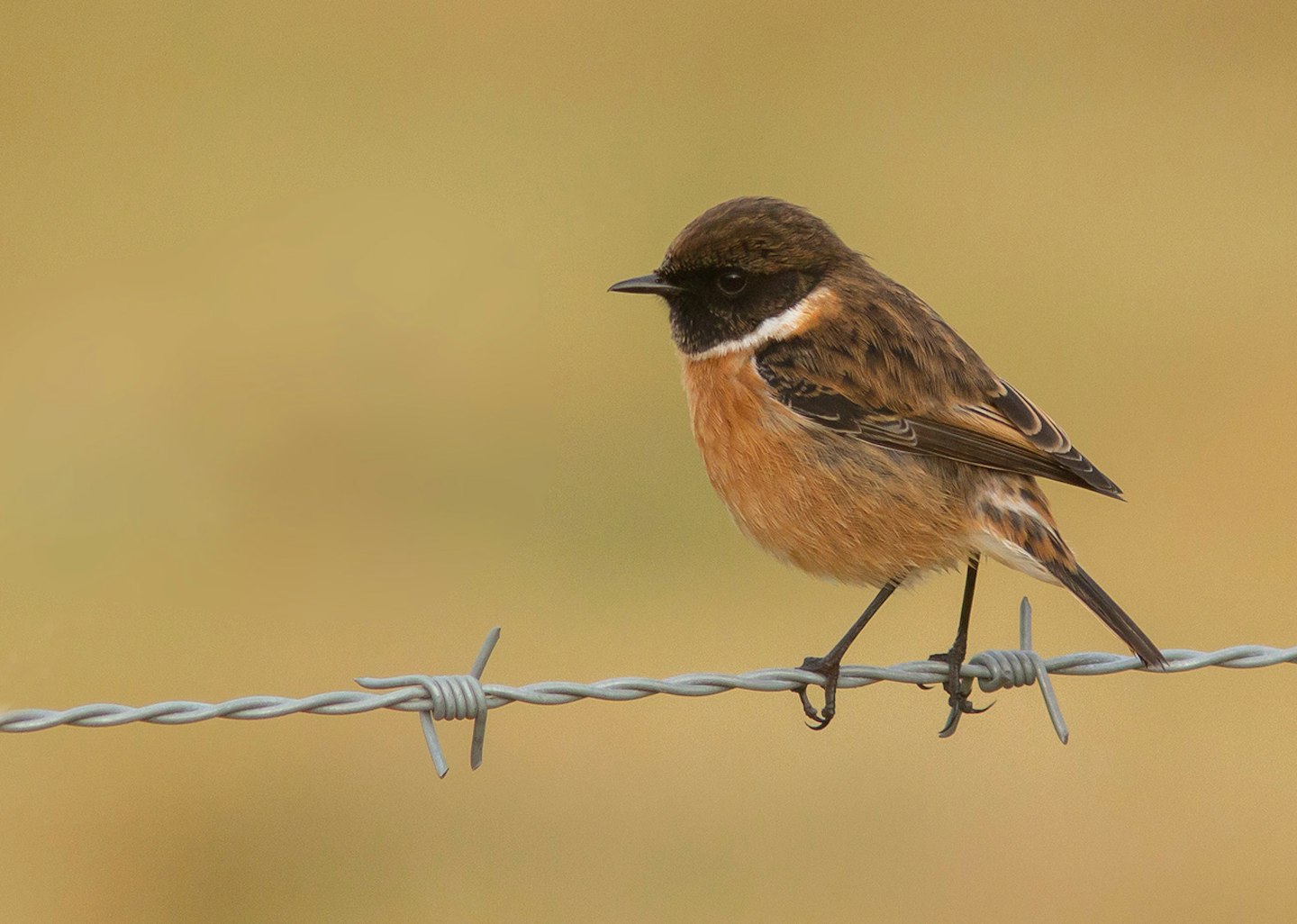
A major theme of this week has been the number of flocks of Sisikins I have encountered singing in chorus in very good numbers. I don't remember hearing quite so many singing Siskins in previous years.
Wednesday 9 February 2022
I saw my first Lesser Black-backed Gull of the year at Ferry Meadows CP this mornign (I have seen them elsewhere, already). Other highlights included three Goosanders (2 males and a female)on Gunwade Lake; a close visit of the mother Otter to the café side of Gunwade, before swimmign across to join her young on the NW shore and the odd Kingfisher.
Tuesday 8 February 2022
I was once more at Ferry Meadows this morning. There were, again, lots of singing Siskins, but the main highlight for me was a very close Otter (one of four) at Swallow Bridge. Always a delight.
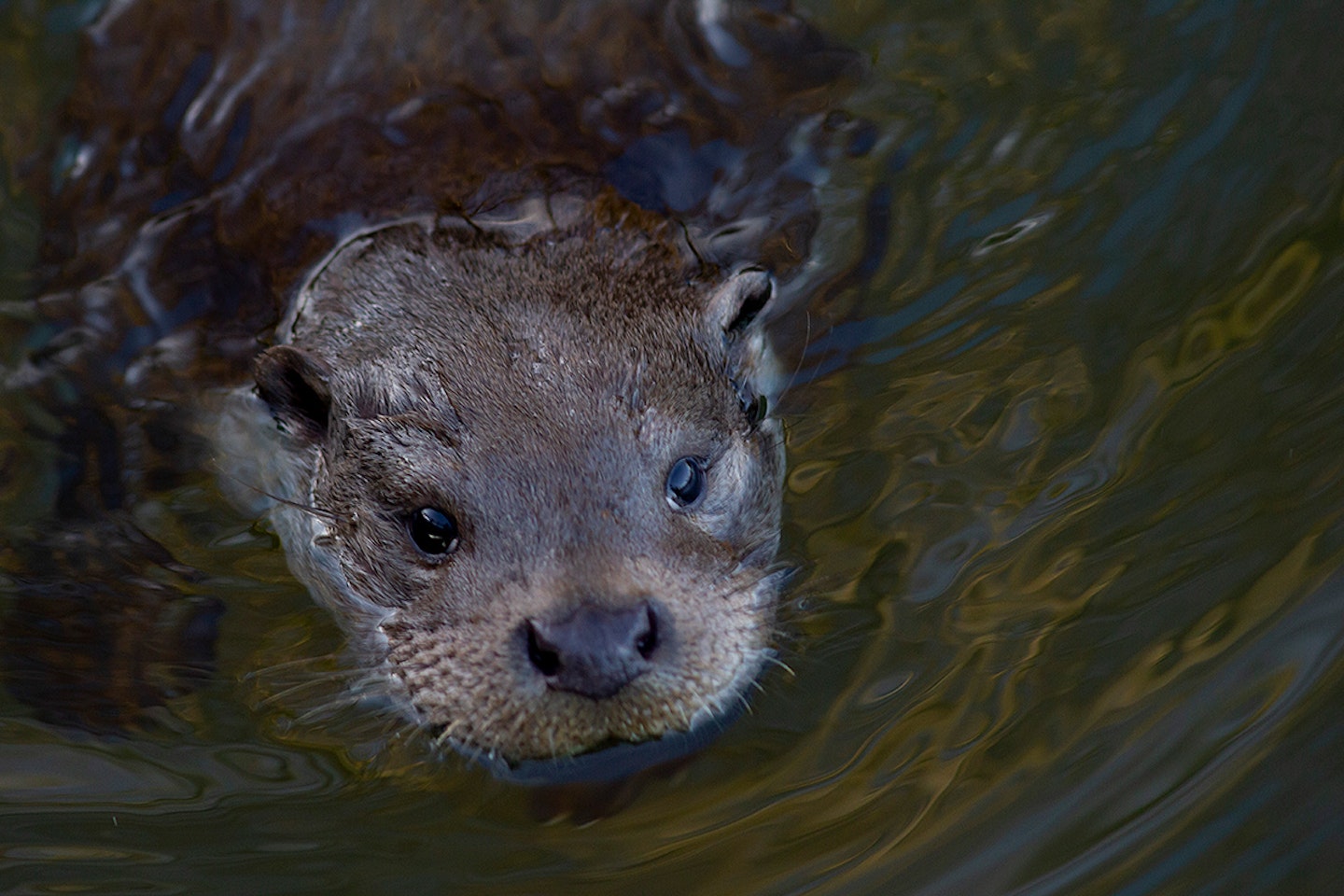
Monday 7 February 2022
Naturally, my pre-work cycle included a search of the area where the Firecrest was seen on Saturday. Again, I had no luck, but the morning session did produce several pleasant highlights. These included a couple of male Goldeneyes (an FM22 tick for me); singing Mistel Thrush and Coal Tits; distant views of Otters at Swallow Bridge (Gunwade Lake); lots of Siskins singing in chorus; a couple of singing Goldcrests; a Redwing on the ground, just six feet from my bicycle as I cycled by; and a Cormorant I could watch swimming underwater beneath me on Ham Bridge.
Sunday 6 February 2022
On Saturday afternoon my friend Will B was looking for Otters at Ferry Meadows and on his way home he found a singing Firecrest. I tried to 'twitch' it by bike, but it was too dark by the time I got to the site. So, this morning, I was back to try to relocate the Firecrest. I had no luck in a couple of windy hours, so eventually gave up. Perhaps it will be hanging around, so I will try again.
Later in the day I popped up to Deeping Lakes and enjoyed seeing a group of seven Goosanders on the east pit. But that was the extent of the goodies on offer.
Saturday 5 February 2022
I started the day at Bedford Purlieus (with my friend Will Bowell), one of the largest areas of ancient woodland in the Peterborough area, looking (hoping) for scarce woodland birds. The best we could manage was a Marsh Tit, which is a year tick for me. They are becoming scarcer and more localised around here, and BP is one of the most reliable sites, nowadays.
Later, we went down to Crown Lakes, in Farcet, just south of Peterborough, in search of a drake Mandarin which had been reported there. It is an odd place, a country park with huge potential for birds, but totally dominated by dog walkers, and lately fishing. The ducks, particularly the female Mallards, seem to have ancestry in farmland ducks... so, it felt like we were searching for an introduced bird among a flock of feral ducks. Eventually we did locate the handsome drake Mandarin, then got out of there!
Friday 4 February 2022
I wimped out of cycling to Ferry Meadows this morning, as it was raining pretty hard throughout the pre-work time, and I didn't fancy getting soaked. Instead, I took a wee drive out at lunchtime to see if the rain had brought down anything new to the River Welland, near Crowland, as viewed from the Deeping High Bank. It hadn't, but it was pleasant as always to see a handful of Goosanders on the river, and a couple of hundred Whooper Swans in the nearby fields. Other highlights included a low-flying Sparrowhawk, and Red Kite and Buzzard over the road.
At nearby Deeping Lakes LWT, on the east pit, there was a single female Goosander, and the usual Pink-footed Goose flew in from the south, with a flock of Greylags. Also, the couple of pairs of Herring Gull, there, are looking to start making their nests on the last remaining bits of exposed gravel island. I still await my first Oystercatcher of the year (which sometimes appear in late January, but more often I see in later parts of February).
Thursday 3 February 2022
It was another day when I recorded about 40 bird species at Ferry Meadows during my morning cycle. Most of the best stuff came near the end, on the trip back over the small suspension bridge called Bluebell Bridge (which spans the Nene). From the bridge the views are always lovely, but all the better for there being three Otters fishing in the river. Then a Jay flew low over the water, showing its lovely white rump. And finally, a Mistle Thrush was new for my FM22, presumably coming to the usual breeding territory near where the path drops off from the golf course. Otherwise, a couple of flocks of half a dozen Lesser Redpolls and 15 Siskins would have been the highlights (and the three Red kites circling over Bluebell Wood. Will they breed again, this year?).
Wednesday 2 February 2022
I racked up about 40 bird species during my hour or so at Ferry Meadows CP, this morning. The best of the bunch were a Kestrel (new for my FM22 list [what I am going to call my Ferry Meadows 2022 year list]) and very decent views of that most elusive of birds, the Cetti's Warbler, with the usual vocal (calling, not singing) individual working its way aroudn the rank vegetation at the edge of Lynch Lake.
Tuesday 1 February 2022
I cycled down to Ferry Meadows this mild yet very windy morning, as usual. The highlights were my first Buzzard there this year, a Little Egret and a beautiful flyby by a male Sparrowhawk.
Monday 31 January 2022
I didn't get out this morning, as it was present time for my dear wife Jo (it is her b'day). So, my main wildlife action was looking at the birds in the garden. The highlight was the House Sparrow flock on the lawn reaching 15 individuals. We still do very well for sparrows in this part of more or less central Peterborough.
Sunday 30 January 2022
My dear wife Jo and I did the good old Big Garden BirdWatch this morning, looking our of our kitchen window, through the rose arch to the bit of the garden beyond which we can see. I had seeded it heavily with some mixed bird food, to maximise the number of visitors. It feels like cheating, but it makes the whole survey more fun! here is what we saw (maximum counts of perched birds at one time):
Magpie, 2
House Sparrow, 10
Woodpigeon, 6
Blackbird, 6,
Robin, 3 (including two having a right old battle)
Goldfinch, 1
Blue Tit, 1 (possibly 2)
Chaffinch, 1 (female)
Starling, 2
Dunnock, 1
Collared Dove, 1
Carrion Crow, 1
Later, I went to the Nene Washes at Eldernell, where I bumped into a few familiar and one or two less familiar faces (but well known names). These included former BW regular, artist Dave Nurney, who I hadn't seen for a couple of years, I think. We chatted lot of silly nonsense, and eventually connected with the Glossy Ibis near the small wood called Lords Holt. After the sun had set, at least 20 Marsh Harriers gathered at the roost area, near the Decoy Wood, north of the car park; and they were joined by a plae ringtail Hen Harrier (probably a young male). Lovely stuff.
Saturday 29 January 2022
Today's birdwatching activities were ruined somewhat by high winds. Ridicullously high winds, in fact, coming from the west making open areas like the Nene Washes (where I foolishly went) just about un-birdable. It was mild, but if you can't keep your scope steady, it makes looking through distant birds, hunkered down, very difficult.
So, instead, I went to a sheltered place for my bird highlight of the day: Long-eared Owl roosting along the Gully, at Deeping Lakes LWT. This is one of the most popular Long-eared Owl sites in the country, and its very popularity (and subsequent crowds) has put me off visiting until today. But, I had an owl to myself, and very pleasant he/she was, too! You can't beat Long-eared Owls for great looking birds!
Friday 28 January 2022
It was a moderately cold morning, with a bit of frost still about, but not the sort of temperatures which freeze the lakes at Ferry Meadows. The highlight for me was my first Grey Wagtail of the year, there. Also, I cycled past a gorgeous male Bullfinch. It is easy to forget quite how beautiful these birds area! And talking of beautiful birds, the Shoveler flock is still going strong on the small Lynch Lake, with up to 50 of them clustered together feeding in their unique way (filtering with the almost baleen like serrations along that enormous bill). I love Shovelers!
Thursday 27 January 2022
It was much milder out and about this morning. Highlights of my cycle included the drake Goosander still on the rowing lake (I hope it stays to early May for Bid Day purposes... ). It really is very tame; I cycled past it today no more than 5m away, and it didn't even look up. Other highlights included a Little Egret at Goldie Meadow, and Water Rail squealing by the Teal Hide on the 'nature' reserve part of the park.
Wednesday 26 January 2022
It was very cold at Ferry Meadows this morning, with all the lakes at least partly frozen. A pair of Goosanders were near the pontoon bridge which spans the contact between Overton and Gunwade Lakes, and the other highlight for me was a beautiful adult male Sparrowhawk, terrorising the Redwings near the Gunwade car park. Superb!
Tuesday 25 January 2022
Sometimes it is necessary to change plans almost at the last minute. This morning, instead of my regular cycle to Ferry Meadows CP, I reacted to a report of a Glossy Ibis having been seen on Monday at Eldernell, on the Nene Washes. So, this morning I went in search of this bird (a species which is still less than annual around Peterborough, but increasing in numbers across the country). I arrived just after 7.30am and the first bird I saw was a Great White Egret flying west from the roost site at Eldernell Lake, a small tree-lined private fishing lake, near the car park. I also went west, as the ibis had been reported yesterday from near the small area wood called Lord's Holt, which is a few hundred metres west of the car park.
There was no sign of any ibises, but the partially flooded fields to the west of Lord's Holt were bristling with birdlife: Whooper Swans, a range of dabbling ducks and a decent scattering of Buzzards, waiting on the ground for something to scavenge or kill. I noticed a flock of egrets, eight strong, and almost didn't raise my binoculars, taking them for Little Egrets (which are pretty common). But I did, and found that they were Great White Egrets, the largest flock I have seen together, locally.
Six of the eight soon flew to the channel near the raised path (Nene Way) called Moreton's Leam where a throng of Cormorants, Grey Herons and Black-headed Gulls were already getting into feeding frenzy mode. The Six lined up shoulder to shoulder along the Leam to join the feeding party. There must be a lot of fish in that small area of the channel.
After a while, I realised it was time to go back to the having failed to see the ibis. I did, notice a hunting adult male Peregrine, terrorising some Teal, and a pair of Ravens flew over Lord's Holt, calling (still not very common in this eastern part of the Peterborough area). Then, just as I came level with the little wood, I noticed that just next to Moreton's Leam, the Glossy Ibis was happy feeding away. It is a handsome individual, showing nice glossy patches of iridescence on the shoulders. That is 117 for my year list, including 13 of what I term 'elite' birds (the rarer ones not seen every year, which require a bit of extra luck, skill or a twitch to see).
Monday 24 January 2022
I was back to my 'usual' pre-work cycling destination of Ferry Meadows CP this morning. The highlights were the drake Goosander still being present on the rowing lake. It apparently seems to think it has paired up with a duck Mallard. We will see how that goes... At FMCP itself the 'best' birds were a Little Egret and a Cett'is Warbler (On the Gunwade Lake shore) which showed exceptioannly well for a Cetti's Warbler (ie it showed at all).
Sunday 23 January 2022
I was back at March farmers (the conventional southern viewing area). Again, there were masses of birds to enjoy, the highlight being when a juvenile male Peregrine put up thousands of Wigeon, and thousands of Lapwing and even went hunting Fieldfares near to where I was standing.
Later, I went to check out the reported swans and Cranes to the north at Thorney Dyke. There were plentiful Whoopers with several Bewick's, but the stars were the 52 Cranes (four juveniles) feeding together next to the swans.
Saturday 22 January 2022
I had a notion to try for the wintering Ring Ouzel at Star Pit NR, this morning. I first saw it on Friday 14 January, when it was very elusive. Similarly over the same weekend, it took hours before it popped out for a quick show. And with news that a work party had cleared much of the scrub in the area it was favouring, I was worried that the bird may prove even harder to see. Still, it was reported yesterday to be still present, so I figured there was a chance.
Things couldn't have been more different from my previous experience, this frozen, frosty morning, with the ouzel appearing almost immediately, and feeding on rose hips, only a matter of 15m from me! I must have spent four hours watching it today, as it habitually returned to the same patch of rose hedge (and the nearby freshly cleared area, whichhad scattered hips on the ground). It was wonderful to get close views of this most obliging of ouzels.
I guess the bird will linger until spring, and this doubtless won't be my last trip to see him.
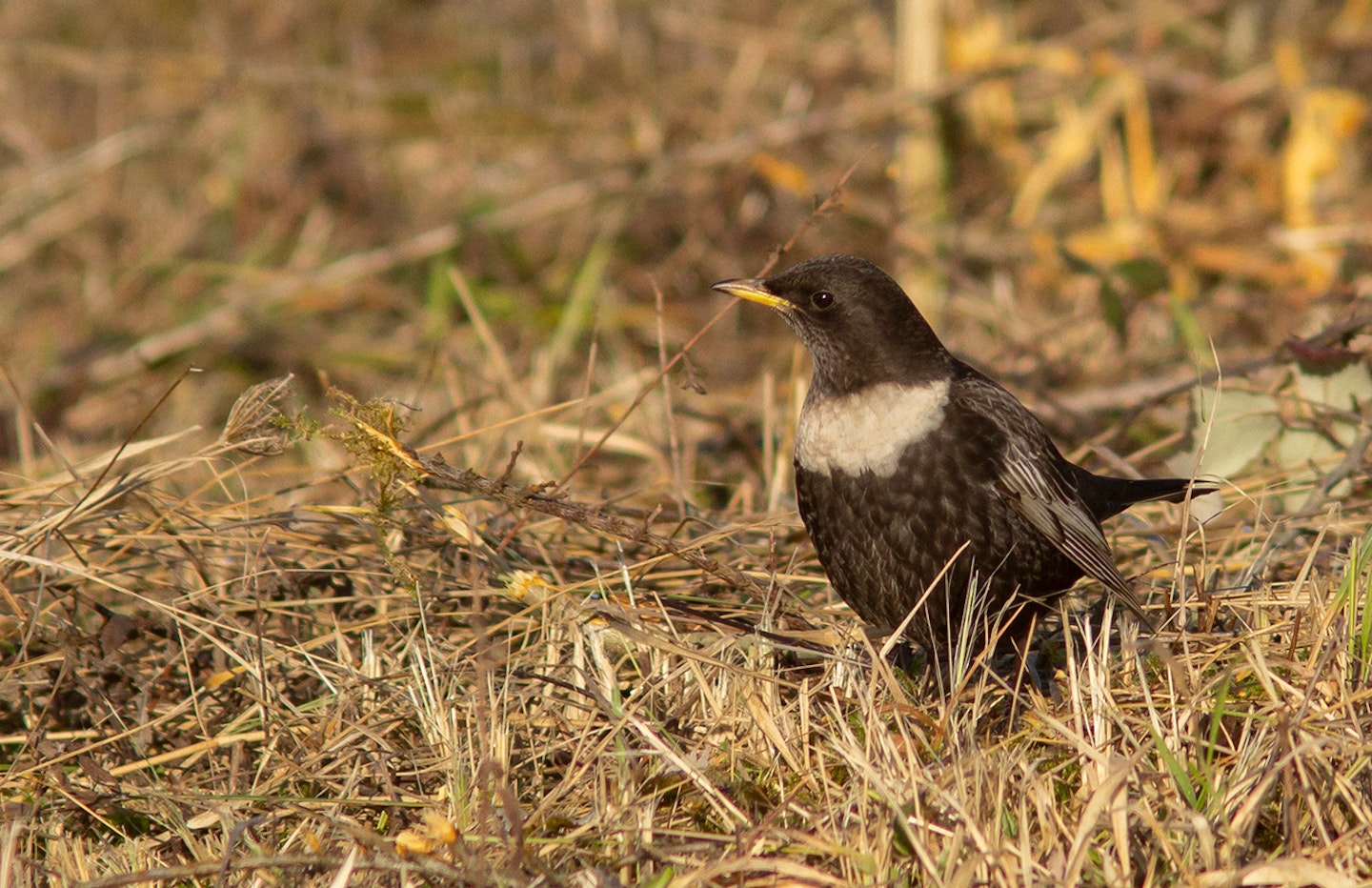

In the afternoon, I went chasing other people's birds and failed. Firstly, I went to seek a tailless Water Pipit at Baston Fen, south Lincs, then went south to seek the Glossy Ibis seen at March Farmers on the Nene Washes (east of Peterborough, in Cambs), where an Iceland Gull had just been seen passing I watched from the northern bank of the River Nene at Cross Guns, but to no avail. I say to no avail, but the birds there were spectacular: vast numbers of Wigeon, about 1,000 Whooper Swans, 70-odd Bewick's Swans, 100-odd Ruff and at least 35 Cranes is not a bad haul. I missed the pipit, ibis and gull, but never mind...
Friday 21 January 2022
It was another cold morning, today, but the frost was melting by the time I got to Ferry Meadows CP. It was a bit of a finchy cycle in, as I heard redpolls, Siskin and Linnet, plus saw my first Bullfinch in the park this year. FMCP is one of the best places around Peterborough for these lovely finches. I love them.
The Otters (or at least one) was up at the 'Otter Viewing Area' at Swallow Bridge, Gunwake Lake, again today. I cycled roudn for a closer look, bu it/they were hidden from view. I met a wildlife watcher from Bedford, who I have bumped in previous years, at Woodwalton Fen (looking for Purple Emperors) and at Nene terrace in 2020 (photographing the visiting Lammergeier!). 'Our' Otters are famous enough on social media that they are attracting admirers from far and wide.
Thursday 20 January 2022
The Otter fanciers were out in force again today, though I couldn't quite see the Otter they were snapping at Swallow Bridge, Ferry Meadows CP. Bird highlights were my first Treecreeper and first Great Black-backed Gull in the country park, this year. My FMCP year list is up to 63, so nearly halfway there...
Wednesday 19 January 2022
Otters have become very popular at Ferry Meadows CP over the Christmas and New Year period in particular. A family of at least four youngsters and their mother has been hanging out close to a small, fish rich channel linking the large Gunwade lake with the River Nene flowing under what is Swallow Bridge. Every morning, a group of Otter fans gather on the bridge in the hope of antics. This morning, from the far side of the lake, I could see my first Otter of the year delighting its camera and phone wielding watchers.
Birdwise, I added Lesser Redpoll to my FMCP year list and got a brief view of the Cetti's Warbler which seems to be loyal to the north-western corner of the smaller Lynch Lake.
At lunchtime, I took a drive out to see some birds. The comfortable highlight was seeing a couple of Bramblings among about 100 Chaffinches on an area called Knarr Fen, norht of the Nene Washes.
Tuesday 18 January 2022
Tomorrow, I must wear socks, and probably lined, not holey, Crocs! It was very cold this morning, with Peterborough's rowing Lake, and most of the three lakes at Ferry Meadows CP itself almost totally frozen over. A small unfrozen patch on the rowing lake had some ducks and geese on it, including the drake Goosander which has been there for six months or so.
At Ferry Meadows, the highlight was a fly by Stock Dove (I know, not the most exciting highlight). On the cycle out of the park though, heading home, a Nuthatch was calling in nearby Thorpe Wood: a Peterborough area year tick, no less. So, my year lists stand at:
PBC area: 116
FMCP (and greater Nene Park): 57
BIGBY (self powered list): 62
Monday 17 January 2022
I am back! Actually, I haven't been away, just lapsed from diary writing since going on the BW Reader Holiday to the Highlands (based at the Grant Arms Hotel), and slipping out of the daily habit. Anyhow, two weeks into the New Year, I resolve to update the diary on a just about daily basis. This morning, I started my 2022 'exercise regime' of a daily cycle pre-work to Ferry Meadows CP, a couple of miles away from home.
It was cold and frosty this morning with a magnificent golden full moon sinking over the horizon as I turned up at the park at 7.40am. Highlights of this morning's visit were Green and Great Spotted Woodpeckers, a 'whining' Red Kite, which sounded like a person whistling in a tree. This was in the wooded area where they bred in 2020. Let's hope they return to nest.
But best of all was a small flock of Golden Plovers flying around. This can be a tricky species in some years in the park. Anyhow, see you tomorrow!
Wednesday 27 October
I was a bit gripped to hear this morning that one of the Ferry Meadows CP regulars saw five Otters together, this morning, on Gunwade Lake. At the same time, there were another couple of them on the other largish lake, Overton. So, it seems there were at least seven Otters around on the lakes there, this morning. I didn't see any...
Indeed, it was a quiet morning migration-wise, as well, with just a fraction fo the Woodpigeon numbers of yesterday passing over. I didn't record a single thrush, either!
Tuesday 26 October
I was, of course, 'vis migging' again this morning, in my usual position on The Mound, the the small hillock between the large Gunwade and the small Lynch Lakes. The first thing I noted as I cycled to the top of the grassy knoll was the clipped whistling call of an Otter on the Gunwade side (hidden by trees, however). As far as visible migration was concerned, the main players were Woodpigeons, heading roughly westwards. In 50 minutes, I counted 860 pigeons on the move.
The other highlight was a couple of Fieldfares, also heading west, my first of the autumn. Normally, I would have expected to have seen plenty by this time in the autumn. I guess the main action will come in early November. We shall see...
Monday 25 October
I saw a tweet (on Twitter) yesterday suggesting there had been a big departure of birds from the Netherlands (as picked up on radar). And the birds were heading across to the UK! So, I hoped from some decent visible migration this morning. As it happens, it was definitely an improvement on recent days, with a very decent movement of Starlings over heading west (presumably part of that departure from the Netherlands last night). I counted perhaps 1,500 birds in all. There were also several flocks of what I think were Chaffinches. They didn't call, bt they looked a bit too dark bellied for Bramblings. These added up to about 100 birds. And several small flocks of Redwings, but only totalling 42 individuals. Perhaps tomorrow will deliver the first Fieldfares of the autumn...
Sunday 24 October
Today was another relatively quiet day wildlife wise for me. I met up with my friend (and once upon a time a BW staff member) Chris Jones, and we tried to locate a Water Pipit which had recently been seen at Baston Fen, south Lincs, and perhaps locate some Jack Snipes at Etton-Maxey pits in Cambs. Both were 'failures', but it was fun trying. Highlights were a few Willow Emerald Damselfies still on the wing at Baston Fen, and a fly-by Raven, nearby.
Saturday 23 October
I shunned Ferry meadows in favour of a trip out in the car today. I was hoping to find some exciting (and possibly new for the year) wildfowl in the Deepings area, north of Peterborough. The comfortable highlight was a calling Rock Pipit (unseen) at Baston and Langtoft pits. Otherwise the main theme was Whooper Swans, with several small flocks along the River Welland and at Deeping Lakes LWT.
Later I went to a place which overlooks the Nene Washes at March Farmers, from the north of the River Nene, at a site called Cross Guns, after the old pumping station there. Cross Guns is the last place in Cambs within the Peterborough area which is consistently home to a population of Tree Sparrows. Of the few houses near the pumping station, one has had feeders up attracting the sparrows in recent years. But, for some reason, there are no feeders, currently. However, the owner of the house was in her garden, and she inadvertently flushed a couple of Tree Sparrows, which flew around making their clipped 'chip' calls.
There were plenty of Whooper Swans on view there, too, with perhaps 400 present. We do very well for them around the Peterborough area, particularly in the valley of the Nene, and particularly on the fenland in and around the Nene Washes, where several thousand winter. More exciting even than wild swans are Cranes, another bird which loves the Nene Washes. I saw (and heard) 9 individuals including one youngster, which could well have been one of the fluffy young chicks I saw earlier in the summer.
Friday 22 October
The Bird Watching editorial team met in our 'old office' west of Ferry Meadows this morning, for a catch up and a trip out into the field for a photo shoot. So, I had an extended 'vis mig' session at FM to start my day. The main action was a steady passage of small flocks of Woodpigeons, once more heading west of south-west, though only totalling 65 birds.
Other highlights were 3 Bramblings heading north and 2 Lesser Redpolls, a possible fly-over Rock Pipit and a Sparrowhawk. I only recorded a handful of Redwings today, and I still haven't seen a single Fieldfare this autumn!
Thursday 21 October
The weather was ghastly this morning for my cycle down to Ferry Meadows. It was much colder than recently, and I got pretty soaked on the ride with the rain brought by the north-westerlies. Comfortably the best birds this morning were a flock of 7 Whooper Swans, including a single juvenile, sitting on Gunwade Lake for a while, before heading off honking to the west.
Wednesday 20 October
Ferry Meadows CP produced little visible migration once more, this gloomy morning. Highlights included 17 Redwings (all in small flocks), 4 Sky Larks and a calling Coal Tit. Best of all, though was a Brambling which landed in one of the Ash trees on the top of the hillock. Two Lesser redpolls flew b, just as I had to leave to head off to work (ie home)
Tuesday 19 October
Migration is once again on hold, with the winds holding up the rush of winter thrushes. For instance, I still haven't seen a Fieldfare this autumn, whereas by this time last year, dozens were coming through on the daily vis mig sessions at The Mound, Ferry Meadows CP. This morning, there, there were just 18 Redwings over and 3 Chaffinches! A Water Rail callign from nearby Lynch Lake was the highlight.
Monday 18 October
At least the pressure is off finding Rock Pipits, now. But I am still hoping for something exceptional during the vis mig sessions at The Mound, Ferry Meadows CP. Alas, there was nothing fancy flying about this morning during the first hour of light. The highlights of my session were hearing a calling Water Rail, some 30 Ring-necked parakeets coming out of the roost and a calling Chiffchaff, I had one flock of 6 Redwings heading west and a few Chaffinches, but I still feel the main bulk of visible migration is still to come. After all, I haven't had a single Fieldfare yet, this year.
Sunday 17 October
It is my dear son Eddie's 20th birthday, who happens to share his birthday with peak Rock Pipit day according to my PBC spreadsheets... As it happens, I did find another Rock Pipit today, too with a single bird flying north over Deeping Lakes LWT (east pit) this morning, my third in two days. Also here were a couple of Whooper Swans, a calling Chiffchaff, and a flock of 60 Golden Plovers which flew low over the pit, but continued flying south.
Saturday 16 October
Feeling the pressure of Rock Pipit weighing down on every aspect of my existence, I thought the best bet would be to go to one of the places where they had been reported to stat my day. I chose Baston pits' 'wader pit', where I could at least do a spot of vis migging and hope for a fly-over pipit. This pit has punched weigh above its weight this year (and previous years), despite being too flooded. after an hour of seeing not much more than a couple of Dunlin, and a Redshank (on the muddy little peninsula on the eastern shore), I was becoming a tad despondent. I had recorded a small but steady trickle of Meadow Pipits and some Linnets and Sky Larks over, but Rock Pipits, there were none.
Then, I scanned the mud with the waders again, and there between the Dunlin was a Rock Pipit! Big (for a pipit), dark, huge-billed (for a pipit) and cocky enough to even chase the Dunlin! At last, and bang on time, bird number 194 for my PBC year list. I stated to walk east along the north side of the pit to perhaps get the bird within photo range, but it flew low over the pit, heading west, and seemed to dive down on the next pit to the west, the so-called 'T-junction pit'. I drove round there, and soon hear d the rock Pipit calling, and saw what I believe was it, flying south to the next pit (which is very hard to check).
I was very relieved that my Rock Pipit checking had finally paid off, but a tad frustrated that no one else could see the bird. So, I drove the shortdistance to EWtton pits to check the 'promising habitat' there. I could hear Bramblings on several occasions, but there was nothing but a few Meadow Pipits around the Rectory Pits.
I went to check the newly christened Willow Pit, west of the Big/Martin Pit, which is a newly sculptured shallow pit, with lots of islands, which looks good for pipits. There were at least a dozen Meadow Pipits feeding there plus Pied Wagtails, a Grey Wagtail and about 50 Linnets (and a Green Sandpiper).
Having nothing better to do, I spent more than an hour looking through the pipits (they could easily hide behind the mounds of clay and gravel). I was about to give up looking, when out popped a Rock Pipit, feeding in a relaxed manner near some Meadow Pipits.
Luckily, this bird was hanging around, and I decided to stick with it, in case any local birders wanted to come and see it. Ads it happens, at least five local birders came to see 'my pipit' which is quite a twitch by Peterborough standards!
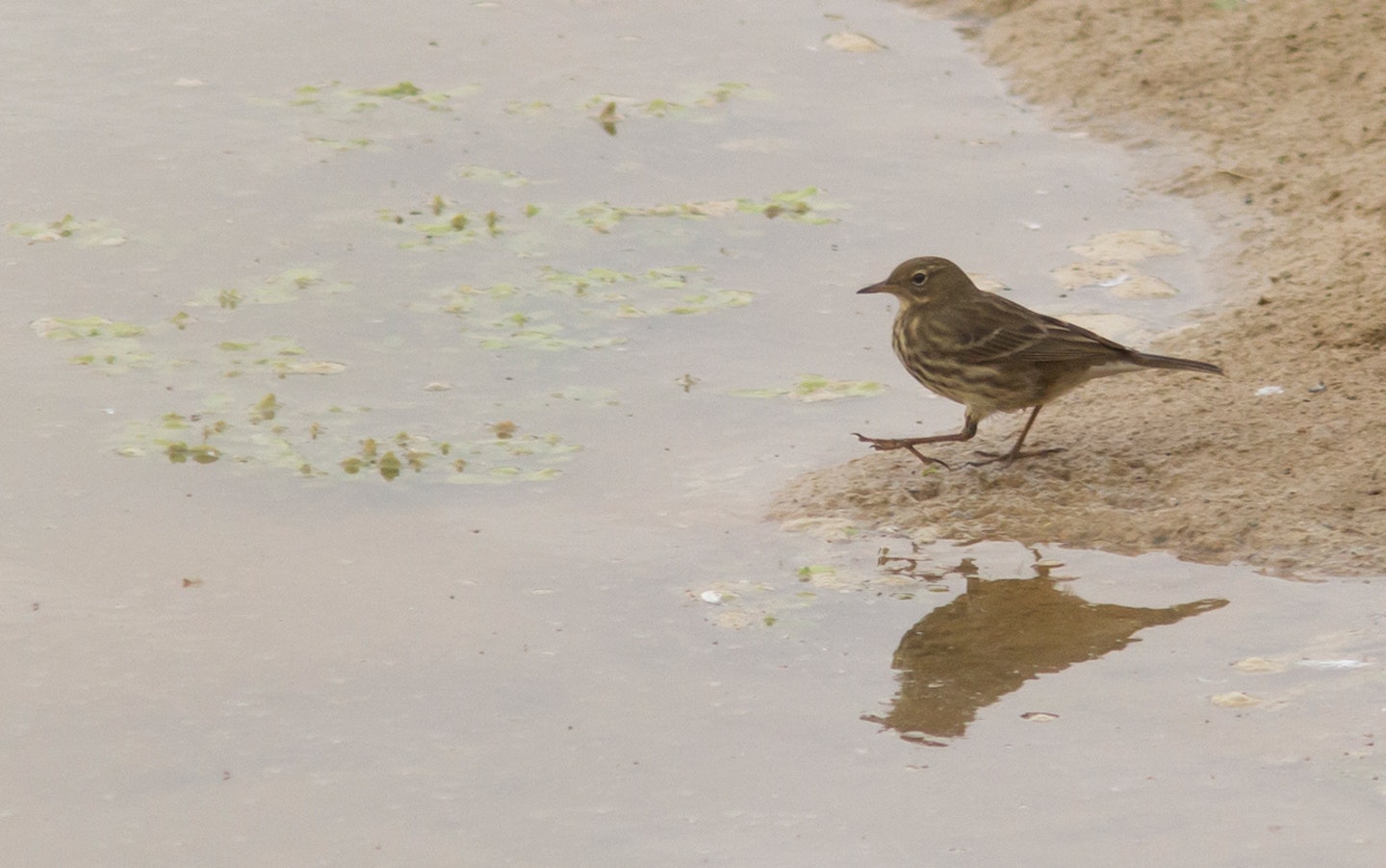

Friday 15 October
It was an early start for another of Charlie Kitchin's back-of-the-truck surveys of the flooded fields of Garner's land at Eldernell this morning. Hugh W and I arrived early to see a couple of Great White Egrets leaving the roost on Eldernell Lake and flying north. As Charlie arrived (just before WIll B's arrival), Hugh located an adult male Hen Harrier which had been seen in the evening here a couple of night's previously. The truck tour's highlights were a late Curlew Sandpiper with a few Dunlin, a single Greenshank, 87 Ruff, plus flocks of 60 odd Golden Plovers.
That same morning, a local birder had found a juvenile Dotterel in a tilled field north of March and just a mile or so east of the PBC area boundary. Even though it was out of my normal range, I went to see this scarce bird, in a flock of a few hundred Golden Plovers. It was probably the worst view I have ever had of a Dotterel (owing to heat haze). The other very decent thing from this area was the number (at least half a dozen) of Bramblings feeding in the trees along the track where we were parked.
Around lunchtime, I went off in search of PBC birds, with a particular yearning for Rock Pipit, of course. At the east end of a road called Thorney Dyke (which follows parallel to the River Ne, to the north of the Nene Washes, I found a few Bramblings with a group of Chaffinches and Linnets. I drove round a tall haystack with my windows open to listen for Bramblings and instead heard a wader call I couldn't recognise. I looked up to see a small, white-bellied wader with half a dozen Lapwings, the view of which was almost immediately was blocked by the haystack! It was heading north, but a minute or so, turned to fly SW, but I coouldn't see it.
I had suspicions of what it may be, so checked the website xeno-canto.org on my phone and confirmed without doubt that it was a Pectoral Sandpiper. Perhaps it had been feeding in the ploughed field to the south (just north of the raised north bank of the Nene), where a small flock of Ruff were feeding with Lapwings and Starlings.
Thursday 14 October
I am starting to feel the pressure of Rock Pipit. The period from about 10 October to 20 October is when I have first recorded nearly all the autumn Rock Pipits I have seen in the last 20 years. And, there have already been a couple of reports of fly-over Rock Pipits from the Baston pits area. As a result, I thought it was a good idea to take a couple of days holiday to go seeking pipits, starting today.
But, I started on The Mound at FMCP, for a slightly longer vis mig session than I would normally have (as I didn't have to head back to work). Also, I fancied trying to photograph the Red-necked Grebe a bit closer; but sadly, the scoter and grebe had departed overnight.
Redwing passage was severely down on Wednesday's count, with just 163 recorded in an hour and half. The best action was a flock of 4 calling Bramblings heading north overhead.
Later, I went to check the Etton pits, which look to have some of best gravelly shores to lure fly-over Rock Pipits down. Alas, the best I could muster there was a Raven flying through the pit complex. I got another Raven at Tanholt pits/Eye tip (a bit east of the city), where more than 50 Great Black-backed Gulls were crowded together on the shallow island.
Wednesday 13 October
After yesterday lunchtime's promising Redwing movement, I had high hopes of a decent vis mig session again at Ferry Meadows CP; so I started on The Mound, which can be the best place for following thrushes, finches etc which follow the ridge of this little hillock as they pass over. My morning Redwing total in an hour's recording was an excellent 2,190 birds over heading east. The other highlight was a single Brambling (an FMCP year tick).
After dashing home (for work), I received a phone call from my friend Don Gardener to say he had found a probable Red-necked Grebe on Overton Lake FMCP (which I had cycled by earlier!). Later he confirmed it was indeed a Red-necked Grebe and that there was also a Common Scoter on the same lake!
I cycled back down there mid-morning to catch up with these rare visitors. And there they were! Red-necked Grebe is bird number 126 for my FMCP list this year (my record is 127 from a couple of years ago).
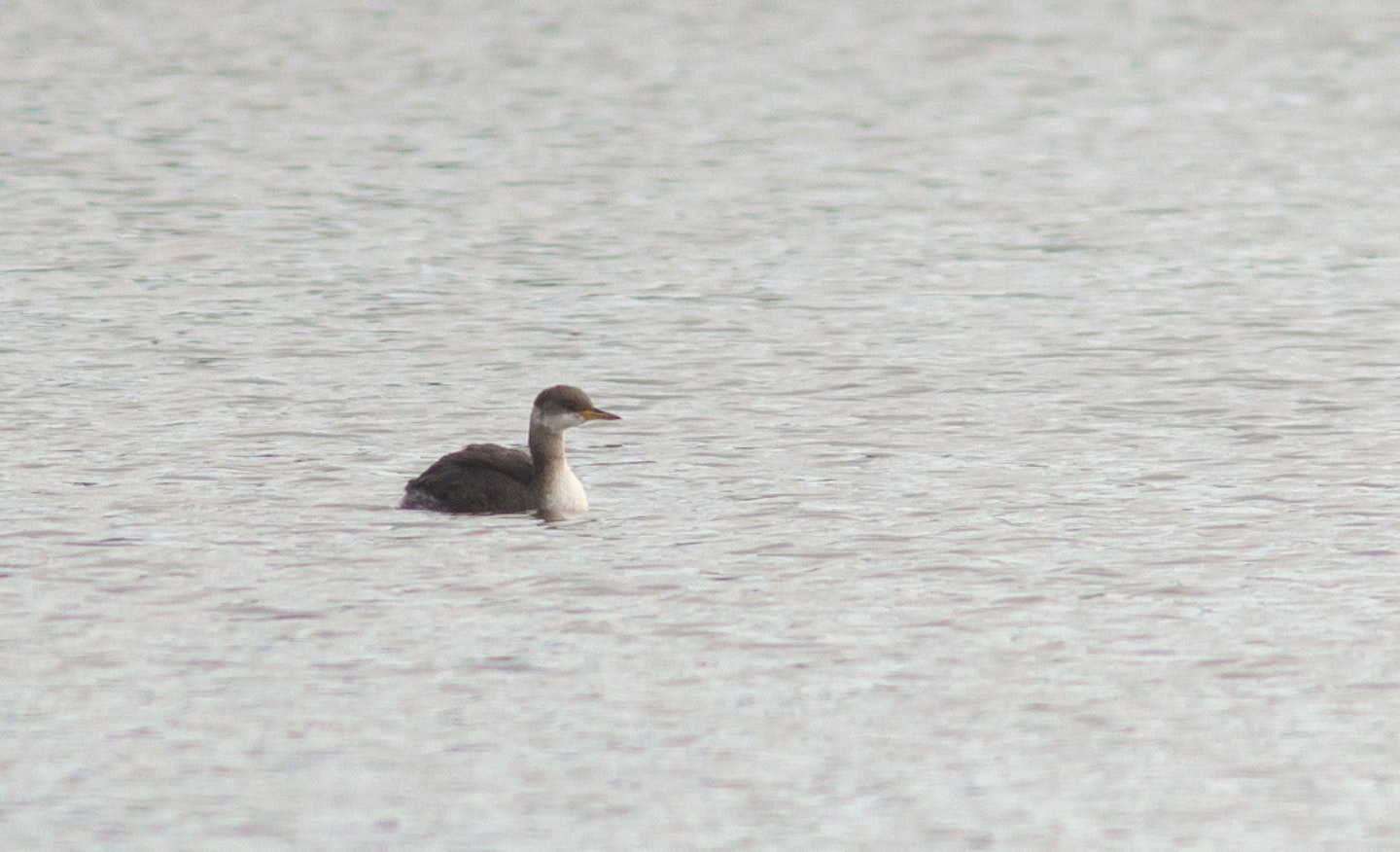
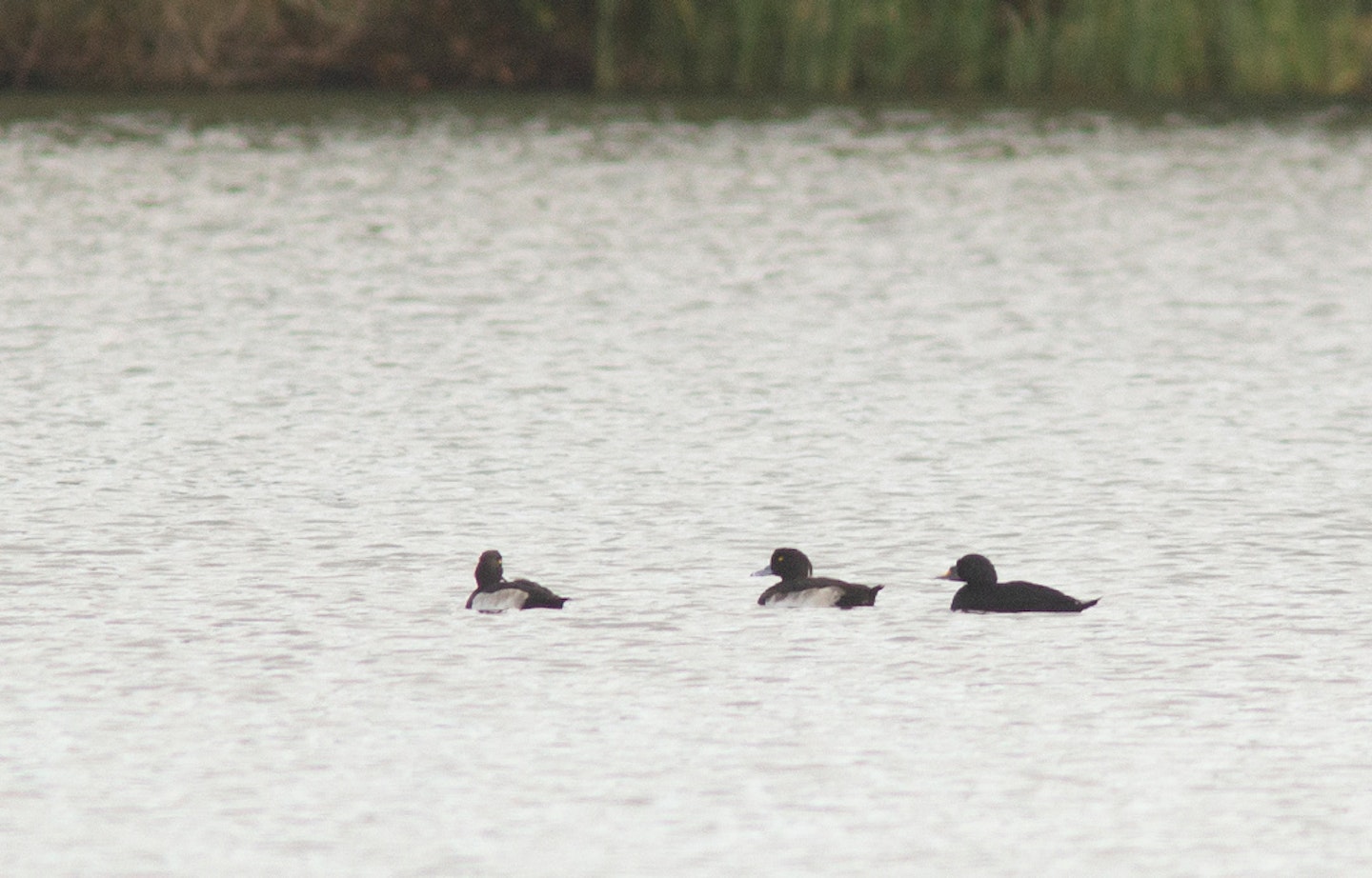
Tuesday 12 October
It was again very quiet bird migration-wise at the Lakeside this morning (at Ferry Meadows), with little to show for my early morning efforts. A message came up on our local bird WhatsApp group that a Rock Pipit and some Redwings had been seen there in the late morning. So, I cycled down for a bit of a lunchtime visible migration (vis mig) session, on The Mound. I 'need' Rock Pipit for my year list and it is coming to be the peak time for this scarce passage migrant, which are annual around Peterborough, but can be very tough to connect with, especially as we have no extensive areas of rocky shoreline on our main lakes any more (Ferry Meadows used to be one of the best places, but the rocks around the shores of eg. Gunwade Lake, are now overgrown with irises and not attractive to pipits.
My session did get me my first proper redwing passage of the year with 400 birds recorded, as well as a late-ish Swallow passing over.
Monday 11 October
I was back at Ferry Meadows CP for a cvis-migging session from the Lakeside café again this morning. There was little movement once again, though. I did hear a Cetti's Warbler in the distance, and saw a group of 5 jays flying slowly east at some height. The other highlight, though was the number (a few) of very large carp breaching the surface of Gunwade Lake.
Sunday 10 October
My friend Hugh Wright suggested we should meet up this morning at a field near Southorpe, Cambs, on a path through the estate of a place called Walcott House, I think. The idea was we would arrive at first light for a bit of vis-migging. But, there really wasn't much on the move this morning. Highlights were good numbers of Mistle Thrushes (up to 8 together; though not on the move); Ravens seen on three occasions, with groups of 2, 3 and 2 again (a long way away from the first 2). But best of all were one or two fly-over Bramblings, a bird I had not seen or heard all year.
Brambling was species number 193 for my #My200BirdYear list which also happens to be my Peterborough Bird Club (PBC) recording area year list. My all time record for a year around here was 195 in 2018. So, I am getting very close.
Saturday 9 October
it was absurdly foggy this morning, when I arrived at Etton pits at 10.30am. It stayed foggy until 11.30, so I sat on the bank by the Rectory Pit and recorded all the birds I heard! There was a bit of Sky Lark movement, and I could hear Golden Plover in the distance. Once the fog cleared, I wandered around the pit complex and was delighted to almost stumble upon a Wheatear. It was quite a bold bird (perhaps it had never seen a human before) and in a similar position to the one I had here a month or two back.
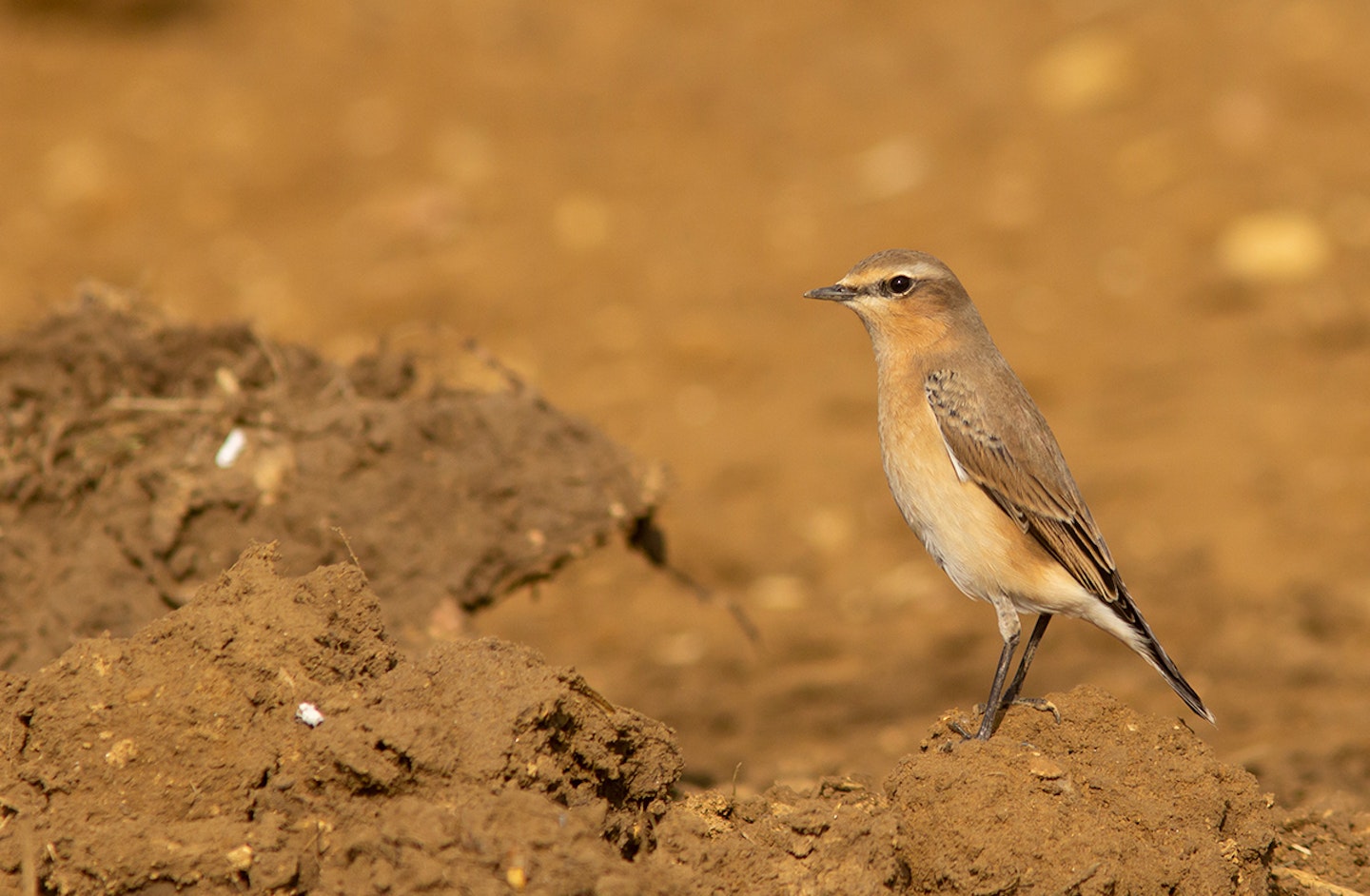

Also here were a single Green Sandpiper and a single Dunlin, out of a grand total of 45 species I recorded in the morning. I later popped over to check out the wader pit at Baston Pits. The best I could muster here was a flock of perhaps 2,000 Starlings. Deeping Lakes produced a heard-only Raven, which was something, at least. And 62 species is not too bad for a morning session with such a foggy start.
Friday 8 October
This lunchtime I met up with a couple of friends (Charlie and Hugh) for a survey session around the flooded farm fields north of the Eldernell car park. This bit of private arable land was accidentally flooded a few years ago and has provided some of the best wader habitat in the Peterborough area, since, when the water levels are low enough. Charlie Kitchin is the site manager of the adjacent RSPB land (Nene Washes), and Hugh and I were over to help him count waders etc on this bit of habitat.
Highlights were 2 Pectoral Sandpipers (a pretty rare bird around here, having a good autumn across the country), 74 Ruff, 14 Whooper Swans, a single Dunlin, 10 Snipe, a Hobby, and a Stonechat. All in all, an excellent, if brief session.
Thursday 7 October
Mainly in the hope of more wader activity, I returned to the BLGP wader pit at first light, this morning. I recorded a bit of a steady trickle of Meadow Pipits (going south) and Greenfinches (going west) and a couple of Red Kite and a Marsh Harrier. But there were no waders (apart from a single fly-over Lapwing, and a couple of fly-by Snipe).
I always make a list of the birds I see, and I noticed a large bird flying roughly eastwards towards me over the nearby pit, and thought to myself "ah, good, the first Cormorant of the day for the list. Shame it isn't a Gannet, although some birders would probably think it was". I raised my binoculars and was astonished to see it really was a Gannet, a juvenile being mobbed by a corvid. I dashed for my camera as it turned to its right and flew south, still with its corvid 'friend' (I am not even sure which species). I managed some terrible record shots, but you could just about see it was a Gannet, in them...
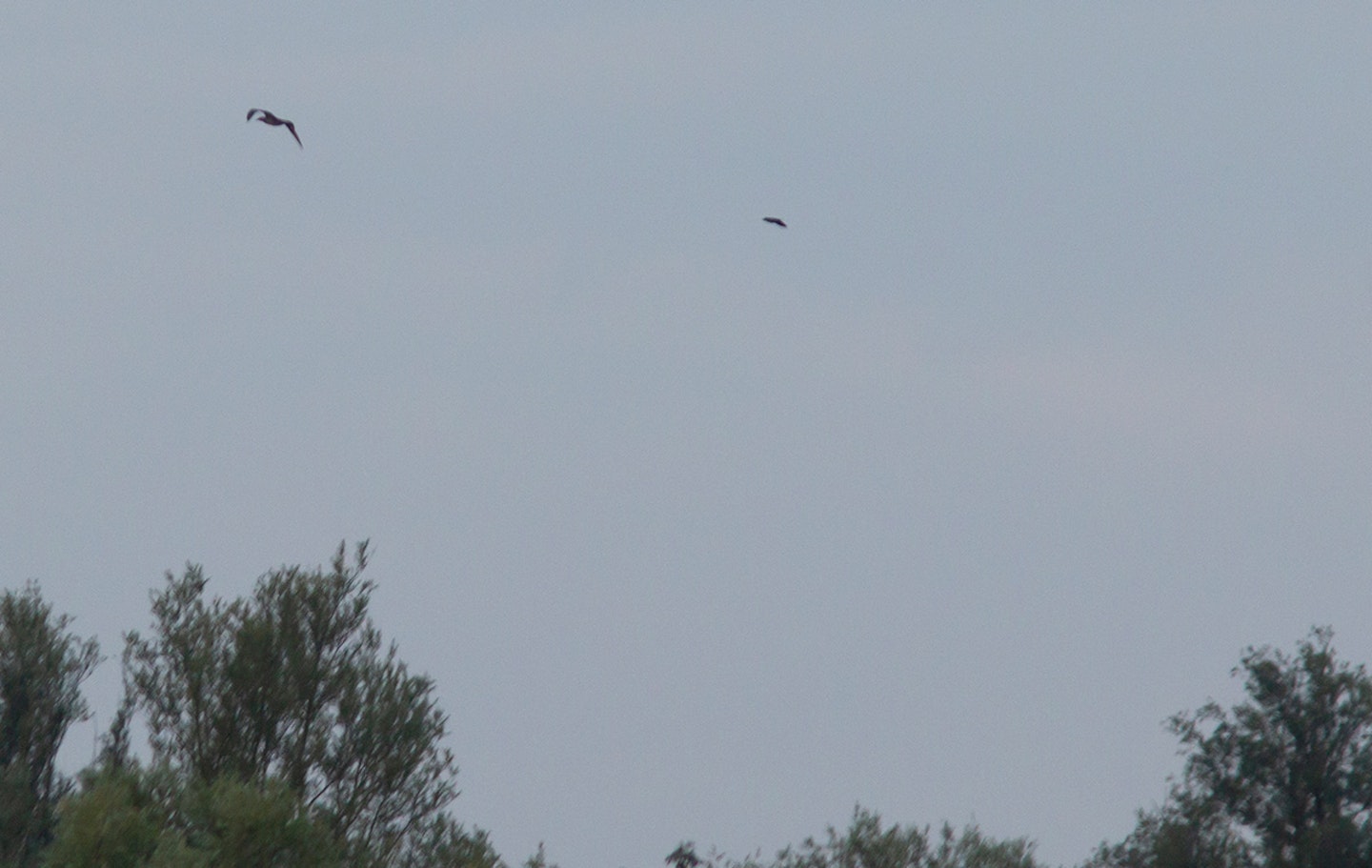
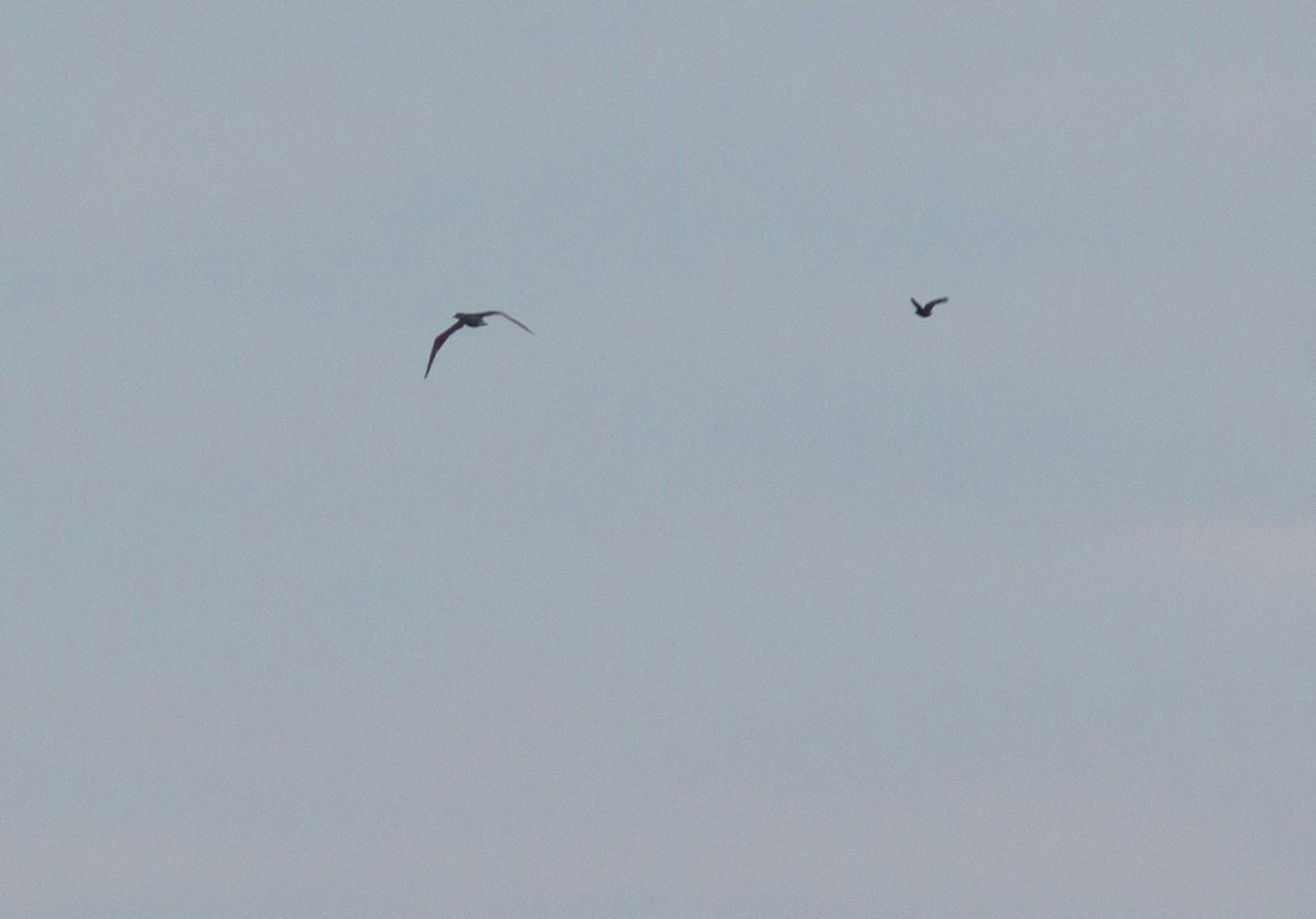
Wednesday 6 October
Today was very much a day of two halves. In the morning, the best I could squeeze out of a session at Ferry Meadows was a single Lesser Redpoll, my first of the autumn, and a small flock of 4 Wigeon flying about (which possibly came off Lynch Lake, rather than being migrating through).
After work, I thought it would be a good idea to check out some reported Pink-footed Geese at the Baston pits (BLGP) wader pit. I couldn't see any geese apart from the usual hundreds of Greylags around. So, I scanned instead the small area of mud on the east shore, looking for waders (it is after all the 'wader pit'). I was quite surprised to see a couple of Dunlin tin the company of a much smaller wader, a Little Stint. Then a minute or two later, I found a Pectoral Sandpiper in the same area (the third I have ever found in the PBC area).
Later it joined up with the stint and Dunlin which had multiplied to 6 individuals, including a couple of adults in winter plumage (my first winter birds of the autumn). Sadly, all the waders were very flighty, and by the time any other birders arrived the Pectoral Sandpiper had disappeared, leaving just a few Dunlin and the Little Stint.
But more birders were on their way, and instead of being disappointed with the lack of a Pec Sand, helped themselves to views of Gannets flying over in the evnening light! My friend Hugh reported two juvenile Gannets heading roughly east from Helpston (south of the BLGP complex). Gannets are very scarce in and around here (and everywhere, really!), so I tried to intercept them. But as I approached Deeping Lakes to search the skies another message came from my pal Jake, who had a single Gannet flying back west! Had the two split up and gone to roost? Either way, to use birding parlance, I was gripped (which means frustrated and disappointed that I had missed seeing the bird).
I should have been delighted with finding a Pectoral Sandpiper and a Little Stint, but I went home at dusk with a slightly disappointed feeling.
Tuesday 5 October
Otters were once more the highlight of my morning cycle to Ferry Meadows CP. Two of them, in fact, near the pontoon bridge which spans the short linking channel between the two larger lakes, Overton and Gunwade. They saw me and dived and disappeared, however, so no photos! Once more, vis mig has not really kicked off...
Monday 4 October
It was another attempted vis mig session at ferry Meadows CP for me, this morning. Passage was close to zero again, with a few Sky Larks over, the highlight, bird-wise. The other highlight, though, was another Otter sighting (which i always a good thing), this one being once again on Gunwade lake..
Sunday 3 October
I had a bit of a lazy, late start, uninspired by yesterday's downpour. I went to Deeping Lakes, but the theme of not much happening in early October continued. Indeed I only recorded about 30 species here at the east screen of the east pit, while usually I would expect to record at least 40 in an hour or so. The best of the bunch was a single Dunlin, which at least showed a sign of migration...
Saturday 2 October
Today was one of those 'head to Etton and hope for Rock Pipit' sorts of day. Needless to say, there were none. There were a couple of Ringed Plovers on the Rectory Pit, but in general it was pretty quiet. yes, there were a few Meadow Pipits and Sky Larks passing south, but only very few, matching the poor start to the vis mig season I have witnessed at Ferry Meadows CP, most weekday mornings. And then it started to rain, and the rest of the day was a wash out.
Friday 1 October
I was back at Ferry Meadows CP this morning for another vis mig session from the Lakeside. I saw my first Canada Goose adn heard a Moorhen, so taking the week's bird list up to 51 species from this spot. The brooding skies and high winds gave a little hope of an off-course seabird, such as a Gannet flying past. But it was only a 45 minute session... The only hint of migration came from a handful of Meadow Pipits passing over, but even these were of indeterminate direction.
Better, though, were the mammals: a distant Roe Deer and the first Otter I have seen for a while on Gunwade Lake. This one looked quite small, perhaps a female or at least one of the youngsters from recent seasons.
Thursday 30 September
The last day of September was also the fourth of my vis mig sessions at Ferry Meadows CP. There was an almost imperceptible movement southward of Meadow Pipits (9 birds in all), a single Siskin calling and a few additions to the total (including the first Chaffinch, Sparrowhawk and Snipe of the season, here).
At lunchtime, I popped up to Etton pits to seek out Rock Pipits on the pits. It was a bit too windy for thorough watching, but the best I could muster were about 15 Meadow Pipits and a couple of Ringed Plovers. October is the real Rock Pipit season. Roll on the next couple of weeks...
Wednesday 29 September
It was a quiet morning at Ferry meadows CP, with nothing really moving through during the time I spent on the 'viewing platform' outside the Lakeside. There was more action in our back garden, where the tops of the trees were filled with singing Starlings, loads of the m all singing at once. The only other garden sounds were House Sparrows calling and Robins singing.
News came out later in the day that there has been a Hoopoe in nearby Whittlsesy for perhaps more than 10 days. I have only ever seen one of these wonderful birds once in the UK and never in the Peterborough area. But it seems that access will not be possible without a special, secret invitation which seems extremely unlikely...
Tuesday 28 September
There was a drop in temperature and in wind strength, this morning, and with it the first hint of visible migration at Ferry Meadows CP. Highlights between 7.30 and 8.30 (from the Lakeside viewpoint) were a huge group of c200 House Martins, drifting by slowly (they later re-appeared more spread out); and at 8.25, 4 Whooper Swans appeared over Gunwade (softly calling) and nearly landed on the water, before continuing west. These birds possibly crossed the North Sea overnight, or possibly in the last few days. They are nice and early for Whoopers, which are true northern breeders. And incidentally, Whooper Swan is bird number 124 for my FMCP/Nene Park list, this year.
Unfortunately, this first sign of vis mig was close to the time I had to cycle home (and work, of course). The time for vis-migging new-in birds pre-work will continue to be squeezed until the clocks go back near the end of October.
Monday 27 September
Today saw the start of my cycling to Ferry Meadows CP for autumn 'vis mig' season. The weather was pretty grim, heavily overcast with nasty showers and a southerly wind which was hardly conducive to 'visible migration'. I racked up 28 species from my sheltered viewpoint at the Lakeside café overlooking Gunwade Lake to the north. The highlights were Grey Wagtail on the gravelly shore in front of me, and the first sign of migration: a single, calling Golden Plover, which came lowish over the lake. Still, it is a start...
Sunday 26 September
Yes, folks, I was back at Etton again this morning, feeling like a sucker for punishment. I was vaguely dreaming of finding a Rock Pipit among the 15 or so Meadow Pipits on the Rectory Pit. Instead, the best I got was a pair of Ravens coming onto the Big/Martin Pit, just as they had done more than a month ago (I will need to check the dates). And that remained the highlight of the day's activities.
Saturday 25 September
I had a bit of a late start (c9.30am) today, and decided that Deeping Lakes LWT's east pit would be a good place to set up a brief vigil. I racked up more than 40 species here in a short period, the clear highlight of which was a male Stonechat at the top of the Hawthorn hedge which lines the south side of the east pit. It appeared in a bush pretty close to the east screen, where I was standing, and seemed to be following a party of Long-tailed Tits, BBlue tits and the odd Chiffchaff which was working along the hedge.
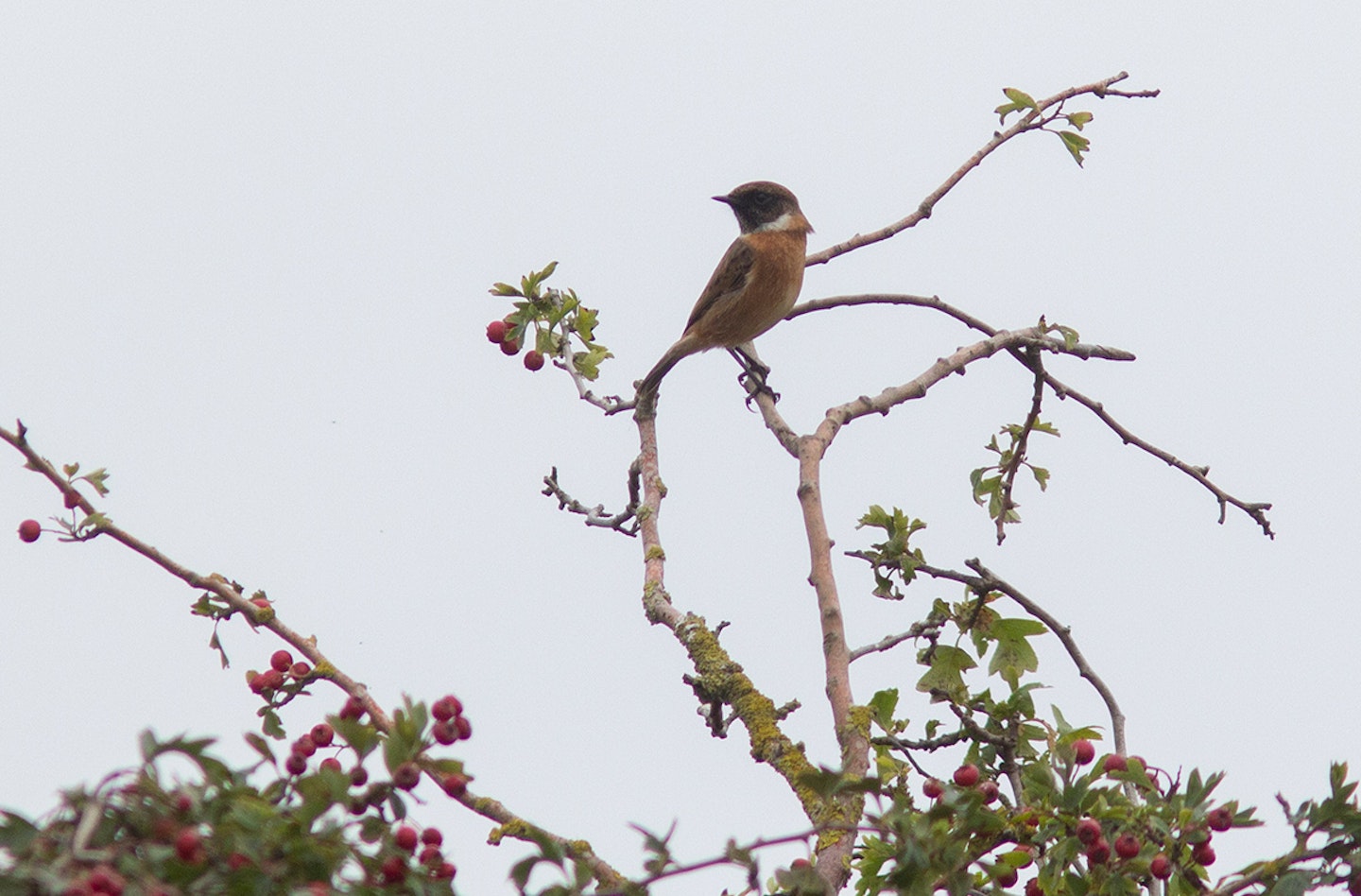
later, at Etton's southern pits, a couple of Golden Plovers flew over and there were also two Green Sandpipers. I bumped into my friends Hugh W and Richard A who had seen an interesting gull on the newest workings. Hugh thought it looked like a hybrid Herring xLesser Black-backed Gull. Luckily it was still there. I got some rotten photos of this yellow-legged gull. I think I agree with Hugh's analysis, as it seemed too pale backed/winged for a standard graellsii Lesser Black-backed Gull (which is the standard paler subspecies we usually get in the UK), yet too dark for a Yellow-legged Gull (which are darker grey than Herring Gulls, but not this dark).

Friday 24 September
Today, BW editor Matt Merritt and I met up with Toby Collett of the RSPB and a couple of volunteers/interns at Frampton Marsh RSPB in south Lincolnshire. Also there were, of course, some of our lovely readers, who had come out to enjoy a morning and a bit's birding with us around this wonderful reserve, set just over a bit of saltmarsh from The Wash, and the mouths of the Rivers Witham and Welland.
We racked up a few more than 60 species, but it was more about the numbers of individual birds within those species, and the 'quality' of the birds seen which made the day. There were thousands of Black-tailed Godwits, in particular, backed up buy a good number of Knot; several small flocks of new-in dark-bellied Brent Geese came south and west to join the party.
But the real highlight birds for most of us were a Pectoral Sandpiper, 3 Little Stints (giving amazing views), perhaps a dozen or so Spotted Redshanks, a Spoonbill, a Water Rail and a beautiful Short-eared Owl (probably a juvenile bird) on the saltmarsh. I particularly enjoyed a few of one of my favourite waders, the Bar-tailed Godwit, especially as they were in juvenile plumage (a plumage I have never seen in the Peterborough area).


Thursday 23 September
I didn't venture out at all today, so had to content myself with enjoying the mournful autumnal songs of the local Robins. This song is really one of the most beautiful yet heartbreaking of all the songs of British birds. Virtuosic yet tragic. I love it.
Wednesday 22 September
For a change, I popped down to Eldernell, this evening, for a look around. The weir at Moreton's Leam (a small clear stream, bordering the raised Nene Way a the south edge of the washes, half a millennium old). As I may have mentioned before, there is an incredible population of Chinese Mitten Crabs, here. No, they are not native and no, the are not a welcome part of the ecology, but these largely freshwater crabs are, in my opinion fascinating. They are apparently migrating females, trying to get bast the little weir to head to the tidal nene, and then into the Wash to lay their eggs.
I saw the same little Pike, I had seen previously (see below) and it was in exactly the same place, when it suddenly plunged in an instant to the bottom of the clear channel. A few seconds later, I could see something shiny, flashing at the bottom of the stream. It was a medium small fish (a Roach, I think) being held sideways in the 'bill' of the Pike, but flapping as it was still alive. Somehow, I had always expected Pike to swallow a fish as they grab it, rather than crush the life out of it...
A Barn Owl was the best bird in the early evening, after the sun set, but a murmuration of several thousand Starlings was even more beautiful on the eye.
Tuesday 21 September
It was another post-work expedition today, with Etton as my target locality (as per usual). It can be quite hard work trying to squeeze out good birds at this site, but at least three is not a huge amount of walking involved (taking some strain about by arthritic knees, and meaning the area can be covered in the available post-work light at this time of year). Highlights were a couple of Green Sandpipers, a singled Red-crested Pochard, Snipe and four near adult Great Black-backed Gulls which drifted in around roosting time.
Monday 20 September
I went out after work, today, to check the Etton pits. Initially, it was exceedingly quiet, with just a single Green Sandpiper and the Red-crested Pochard to note. But, at 6.14pm, I heard a Wood Sandpiper calling, clearly in flight over the Big/Martin Pit, heading south (though I couldn't see it). The calling continued, and circled the southern Rectory Pit, before the sandpiper flew over my head and off to the west (and I could actually see it). Wood Sandpipers are 'elite' birds around the Peterborough area, and can be extremely difficult to catch up with in some years. This is the second I have had at the Etton pits, in the last couple of weeks, though (and the third in the pit complex, this year, after one in the spring on B/MP).
Sunday 19 September
Etton pits produced the normal suite of birds this morning. For some reason there were no Pochards on the Big/Martin Pit, which has had more than 100 in the last week or two (although my maximum count has been in the 70s). There was a single Red-crested Pochard there, though. I heard at least 2 Dunlins calling, but couldn't see them. I was, however, encouraged that there is a decent flock of more than 30 Meadow Pipits feeding and bathing on the Rectory Pit. This area looks perfect for Rock Pipit, so I will keep an eye out in the next month of so (peak Rock Pipit passage through the PBC area is from 15-20 October, it seems, looking at my records).
Saturday 18 September
I like the weekends, as I can break clear of the seeming drudgery of working a local patch to venture further afield. So, I exchanged the pits of Etton (north of Peterborough) for the hedge of Eldernell (east of Peterborough), and very few birds there, too! I say very few, but this is not really fair. I racked up more than 40 bird species in an hour or so waling the hedge. But there was nothing very scarce or even rare emerging from the melting mist, so there was a bit of a sense of disappointment.The highlight for me was a Small Copper butterfly. The short cropped track alongside the counterdrain hedge at Eldernell is a good place for these little beauties. This one had a damaged antennae, sadly
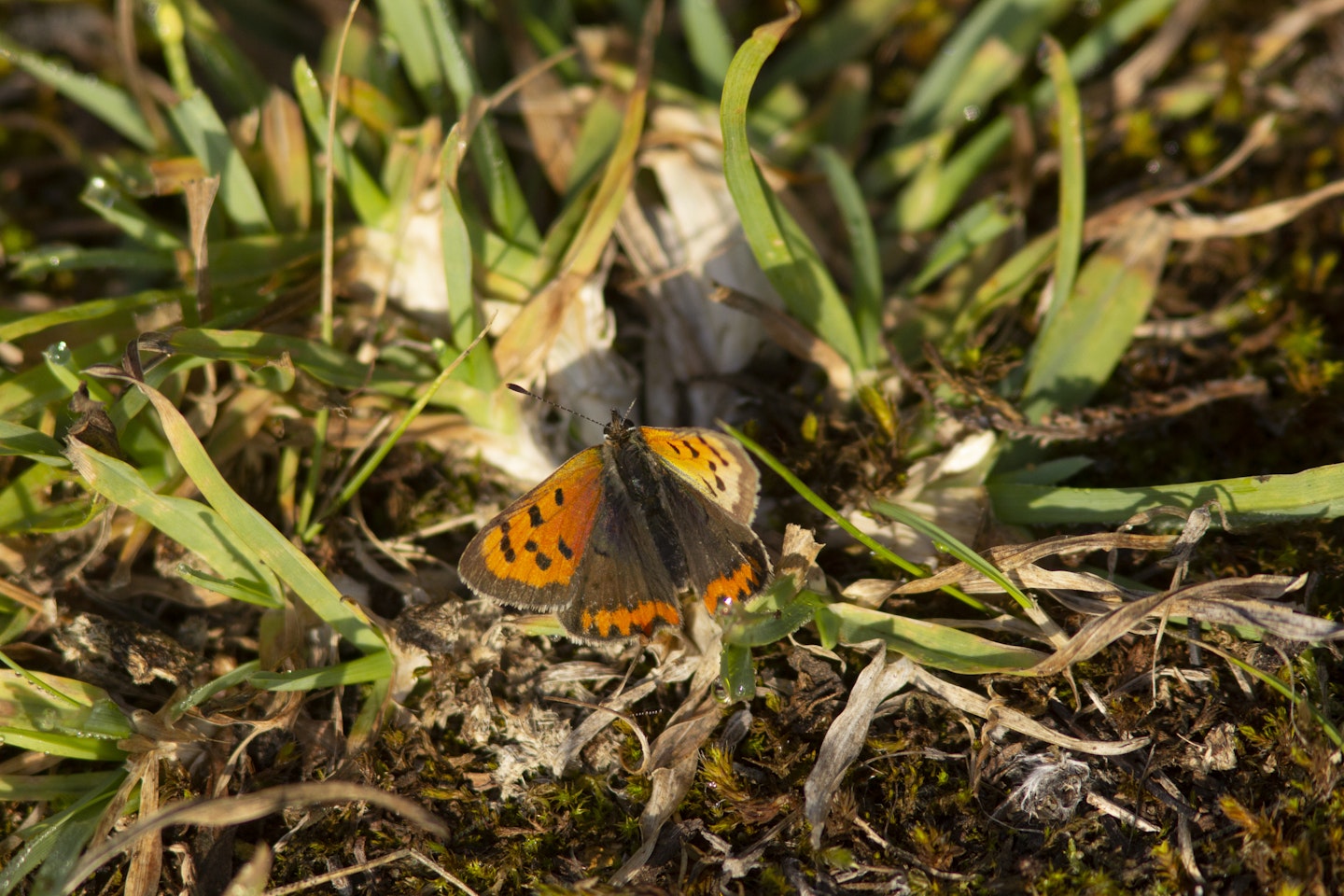
I also spent a bit of time staring into the clear waters of Moreton's Leam. There was quite a build up of migrating female Chinese Mitten Crabs, at the mini weir. The females apparently migrate to sea (25 miles walk downstream, via the Nene) to lay their eggs, but get a bit stuck when they are faced with the little waterfall at the bridge, here. The clear water is full of fish, including a lovely 18-inch long Pike and a couple of beautiful Perches.
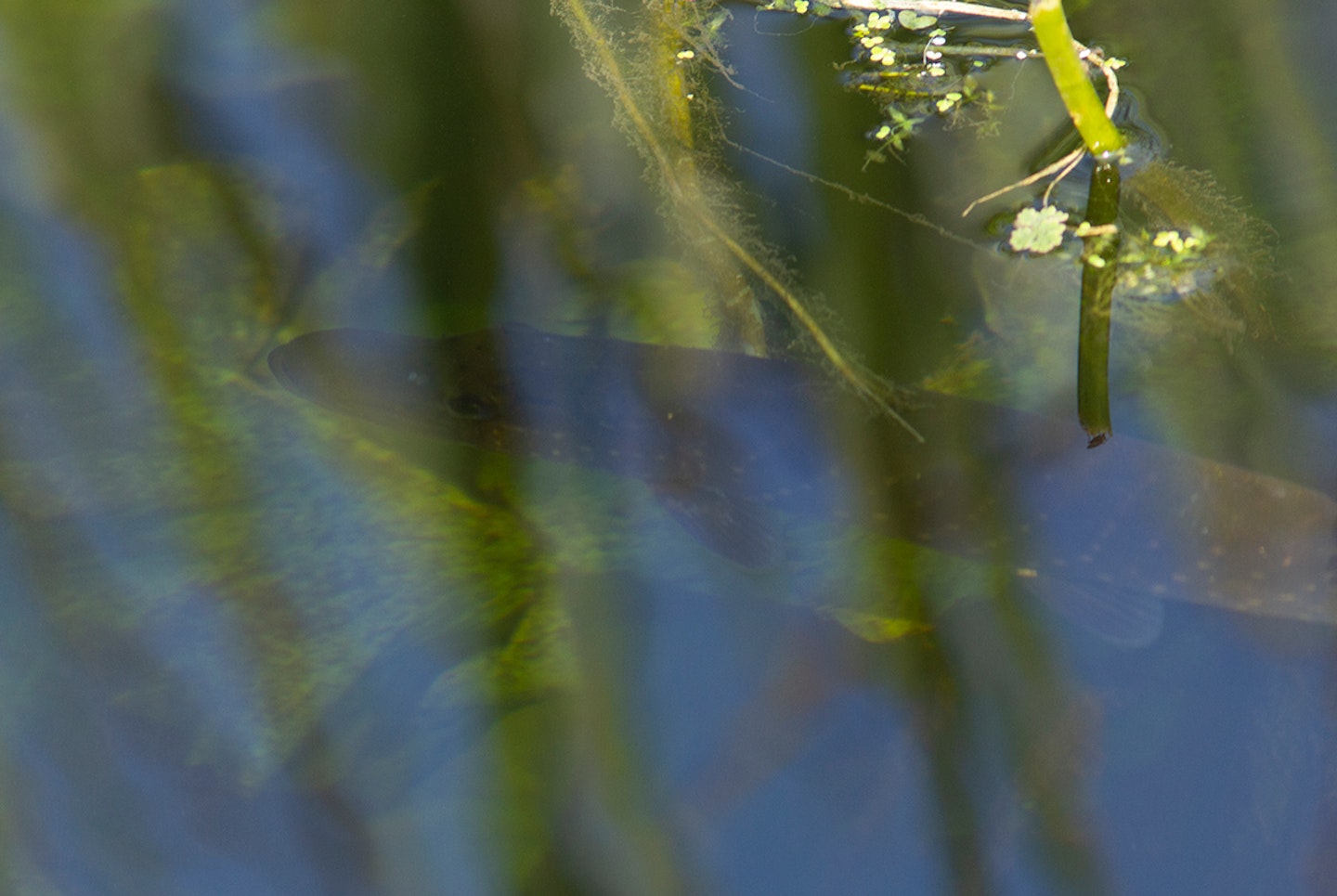
In the early evening, I did check out my usual morning haunt of the Etton pits. It is often slightly better at the weekend, as the amount of working on the site is less than during the week (it is usually rammed with diggers and trucks, infilling and remoulding the Big/Martin Pit). Highlights were a pitiful single Green Sandpiper, a Ringed Plover and a couple of Grey Wagtails... So, I popped over to Deeping Lakes (east pit), where a Greenshank popped in, noisily, there were a couple of Gren Sandpipers, 6 Snipe and single Dunlin and Common Sandpiper.
Friday 17 September
I returned to Etton first thing this morning. The Ruff had gone, but 2 Ringed Plovers were new. The only other passage wader was a single Green Sandpiper. A Chiffchaff toured the weedy scrub aroun the Rectory Pit, making me anticipate something rarer on the move. Instead, there was a promising build up of Meadow Pipits on the site, with at least 35 seemingly hanging around, rather than migrating through. This is 'promising' as there is always a chance they will help draw down a Rock Pipit in the next few weeks (Rock Pipit being a very scarce passage bird around here).
Also of note, this morning were 3 Pintails, again, and a new-in Red-crested Pochard, in among the 50-odd Pochards on the Big/Martin Pit.
Thursday 16 September
I didn't get out into the thick of it until the early evening, today (I even had a bit of a lie in in the morning). So, I popped up to Etton to see what I had missed earlier, or what had dropped in during the day. The highlight was a juvenile male Ruff, the first I remember seeing here this autumn. Also on the Rectory Pit were a couple of Green Sandpipers and two Egyptian Geese. The bigger Big/Martin Pit had 78 Pochards and a couple of Snipe, as well as 10 Wigeon and a few Shoveler/
Wednesday 15 September
Yes, I was at Etton again this morning. Highlights were 3 Pintail which looked to land on the Rectory Pit, but probably landed on the Big/Martin Pit, a single Little Ringed Plover, a Green Sandpiper, a group of 7 Meadow Pipits, over and a couple of GreyWagtails. Waders have all but dried up, and the huge goose flick (which possibly still contains the Barnacle Geese and Ruddy Shelducks) has moved elsewhere. Tomorrow may pick up, though...
Tuesday 14 September
Highlights at a relatively quiet Etton Pits incled a Jay, Grey Wagtail, Ringed Plover and Golden Plover (both heard only) and a single Snipe and Green Sandpiper.
Monday 13 September
Inspired by yesterday's small but significant wader haul at Etton pits, I resolved to once more work it in the mornings, until either a decent wader turns up (I am hoping for an American sandpiper), or the visible migration (vis mig) season kicks in so significantly I can no longer resist Ferry Meadows as a morning starting point.
Anyhow, there was not much to report at Etton, this morning, the best being a Hobby, and the first hint of Meadow Pipit migration, with at least 20 birds over heading south during the hour and a half I was there. The best waders were a couple of Green Sandpipers and a Snipe. Pochard numbers on the Big/Martin Pit have reached 75 birds and Gadwall numbers have risen to 65.
Sunday 12 September
For a change I visited a site I have only been to a couple of times before: Monks Wood, way down on the southern border of the PBC area. Yesterday evening a Pied Flycatcher was reported there by Marsh Tit expert, Richard Broughton (the very definition of a reliable source), so I thought I would try to relocate it.
The wood is spectacular, mainly oak and Ash, with plenty of other stuff too. It really is one of the most attractive woods around, and there were very few people there to annoy me (dog-walkers and the like), which is always good. Seeing as it only took about 20 minutes to get there, it is ridiculous that I have been so few times.
Anyhow, in summary, the highlights of the 40 odd species I recorded there were Hobby over, a family of 3 Spotted Flycatchers, Tawny Owl hooting, plenty of Marsh tits (although Richard tells me they have crashed, population wise and are sadly looking at extinction here in the not too distant future, for reasons unknown), plenty of Nuthatches etc.
In the evening, I popped over to my old stomping ground (from a few weeks ago) of the southern gravel pits at Etton, a bit north of Peterborough. Despite not exactly being overrun with waders, it remains one of the better places in the Peterborough area (particularly the north of the PBC area). There were singles of juvenile Wood Sandpiper (a 2021 find tick for me), Ringed Plover, Little Ringed Plover, and Dunlin; plus 2 Greenshanks and 4 Green Sandpipers.
Saturday 11 September
I figured a start at Castor Hanglands NNR was my best bet for bumping into an interesting passerine, or perhaps a Wryneck (as there have bee a lot around in the country). Sadly, it was was a quiet session, bird wise. Noise wise it was far from quiet, as some noisy mowing machine was off wreaking havoc in the western reaches of the reserve. I say wreaking havoc purely speculatively, and based on the damage that 'mowing' has done to the southern clearing of the reserve. This is the area where I saw Tree Pipit a few weeks back and in the past I have seen Redstart there more than once, and Lesser Spotted Woodpecker on the edge.
It is renowned for its ancient anthills, so it was very saddening to see about a third of them completely destroyed by the 'mowing' in recent times. Some of these anthills were about 3 feet in diameter, and now they are just a 3 foot wide circle of mud, completely levelled.
I left in disgust and went to Deeping Lakes, where there was also very little of note, although I saw a nice adult Hobby on the way.
Friday 10 September
The clear highlight of this morning's cycle down to Ferry Meadows CP was a Great white Egret, which circled the park about three times over a period of 3/4 an hour. They are scarce but increasing birds around here (as everywhere in the country, it seems).
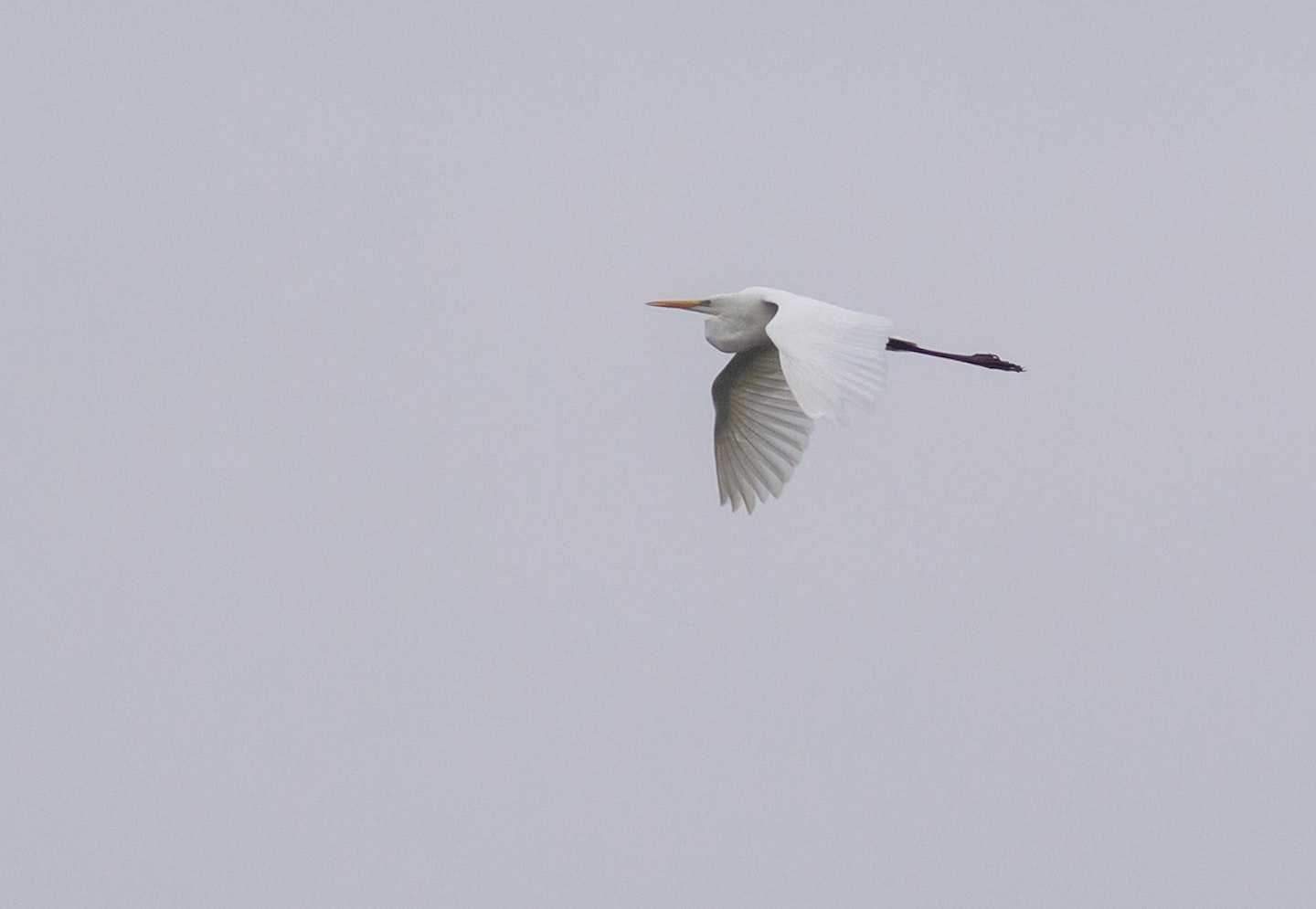
In the afternoon, a Fox strolled casually across our back garden, had a poo and a scratch then wandered off without a care in the world. I managed a quick snap through the kitchen window.
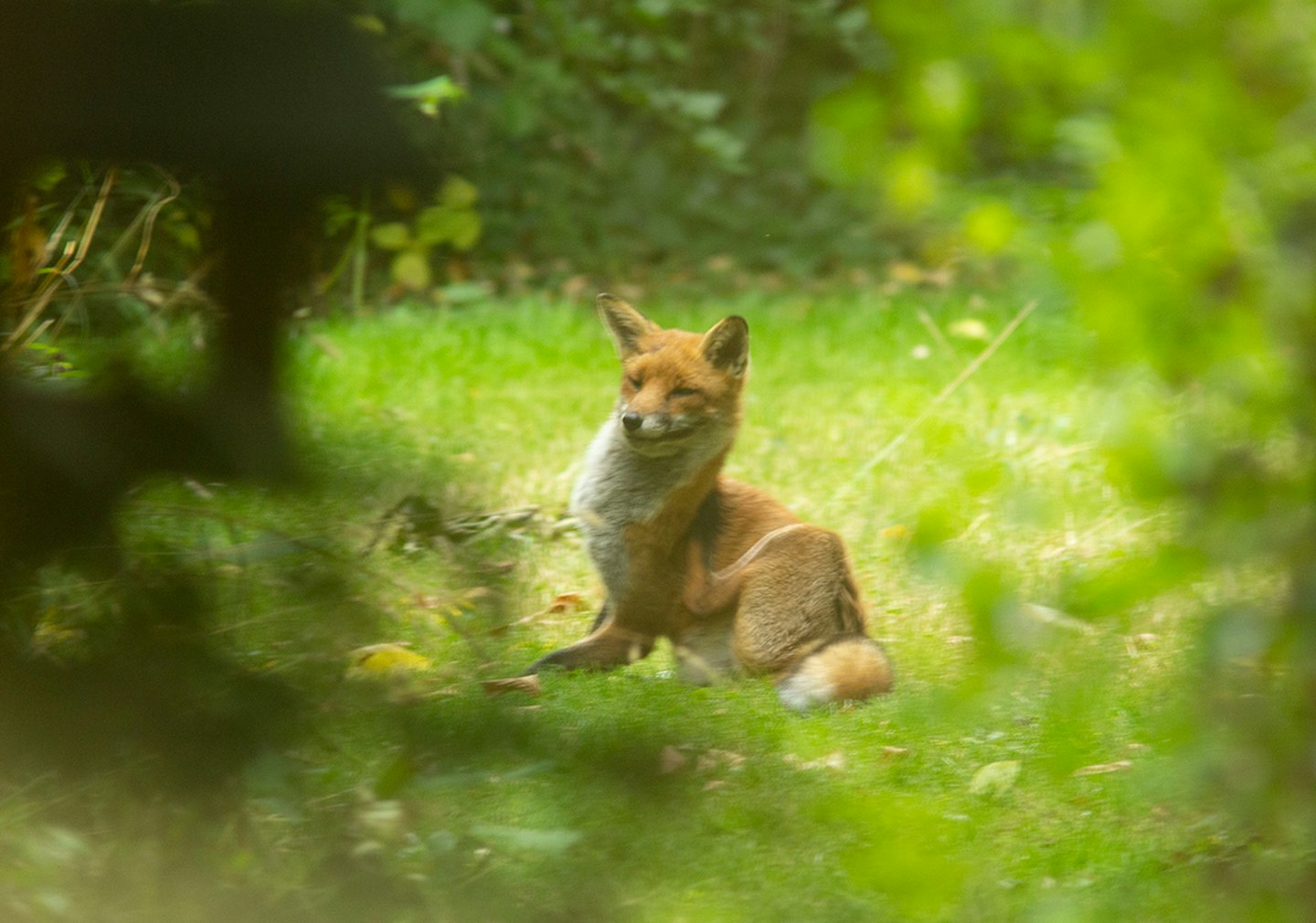
Thursday 9 September
The new extension to the kids' play area at Ferry Meadows, near the Gunwade lake car park, is producing a decent quantity of birds, aroudn the disturbed ground of the new workings. One particular suntrap area had an estimated 15 Chiffchaffs and 3 Willow Warblers visiting over a period of about 20 minutes! Sadly, nothing scarcer (and certainly no craved for flycatchers).
Back at home a quick lunchtime sit in the garden bathed in the sound of half a dozen singing Starlings, produced my first garden Willow Warbler and Chiffchaff of the year. Things seem to be on the move!
Wednesday 8 September
It was the usual fare at Ferry Meadows CP this morning. The highlight was a fine view of a noisy (calling ) Treecreeper. There are still plenty of Blackcaps, Chiffchaffs and a steady buildup of acorn gathering Jays in the park
Tuesday 7 September
Ferry Meadows highlights this morning mainly came in the form of a mixed tit flock on the Mound (by Gunwade Lake) which had at least 10 Chiffchaffs in it. Sadly, there was no hidden Pied Flycatcher or Wood Warbler...
Earlier, I had seen the summer (into autumn) resident Goosander at Peterborough Rowing Lake (Thorpe Meadows), where there was also a Grey Wagtail. After I got home I heard that a Spotted Flycatcher had been seen in the country park. So, I think I will be heading down once more, there after work. Let's hope it is neither too warm, nor too crowded in the park.
I dipped!
Monday 6 September
I am continuing my early cycles to Ferry Meadows CP. To be fair, there was not a lot on offer this morning, barring the usual clobber (still plenty of Chiffchaffs calling and the odd one singing). There appears to have been a bit of an influx of Wigeon and Shoveler (mainly to Lynch Lake, the smallest lake and the most attractive to ducks, particularly dabblers).
In the evening Eddie and I went down to Eldernell to look for a male Redstart which had been seen there earlier in the day. No luck, but we did see 4 Cranes in flight (when they are at their best) and 4 Great White Egrets coming in to roost in the trees on Eldernell Lake, not far from the car park. So, it is all good.
Sunday 5 September
There was a bit of a change in the weather today, and we are heading into a warm (hot!) spell. My son Eddie came home last night, so he and my dear wife Jo and I could head down to Cambridge for my aunt and uncle's Diamond wedding anniversary celebrations.
But, before we left, I was able to sneak a quick 'twitch' in, with a flying visit to Ferry meadows CP to see a juvenile Black Tern which was found that morning. It is the first I have seen in the country park this year (overall, it has been a very poor year for Black Terns, locally). My FMCP year list is now on 123 for the year.
Saturday 4 September
I started the morning working the Eldernell hedge (around the counterdrain), looking for Wrynecks, flycatchers and chats. In an hour and a half walking up and down the hedge, I recorded more than 50 species, though nothing very scarce. The best of the action was seeing Marsh Harriers, Lesser Whitethroats and Green Woodpeckers, plus a few fly-over yellow Wagtails, and hearing a couple of Water Rails.
Later, I visited Deeping Lakes, but it was quiet there. A single Wigeon, a late-ish adult Common Tern and a cluster of Little Egrets were the best of the action.
Friday 3 September
Comfortably the highlight of my Ferry Meadows CP cycle this morning was hearing a Nuthatch calling in Bluebell Wood, near the area where there is a fallen tree and its 'stump' which is traditionally used as a birdtable by the locals. Nuthatch is specie number 122 for the park for me this year. My record (of the couple of previous years when I have tried year listing there) is 127 in 2019. So, I hope to mop up a few more birds and beat that total. In fact, I aim to reach the 130 mark by the end of the year. Will I make it? Wait and see...
In the evening I saw this lovely Bearded Tit, on the Nene Washes at Eldernell. It is the first I have seen in the Peterborough area since the winter!
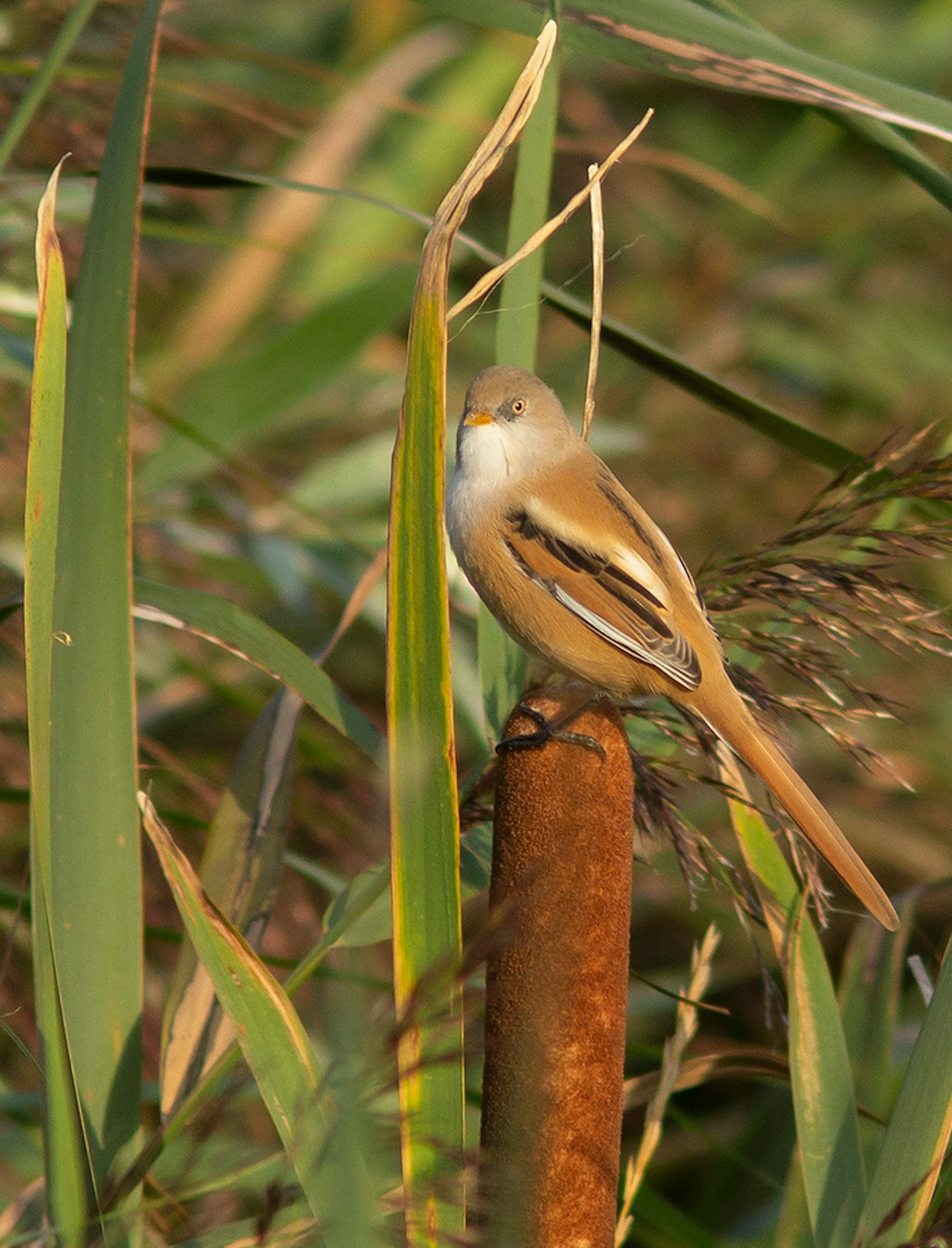
Thursday 2 September
I was back at Ferry Meadows this morning. There were two notable highlights: two distant Otters on Gunwade Lake (their presence revealed by a flock of about 30 Black-headed Gulls, circling above them); and 3 late Swifts feeding above a sizable flock of mixed hirundines.
This evening was invited again to visit the private flooded farmland at Eldernell. It really is sensational there (especially for an inland site). Highlights were: Curlew Sandpiper, 3; Little Stint, 3; Spotted Redshank, 4 (or 5); Ruff c60; Greenshank, c6; Green Sandpiper, 11; Ringed Plover c30; Dunlin, c20; Black-tailed Godwit, 3; Great White Egret, 2; Whinchat, 1; Hobby, 1; Swift, c15. See what I mean?
Wednesday 1 September
Today, I started my autumn campaign of cycling birding at Ferry Meadows CP, once again. Partly inspired by a need to get fitter, partly by the oncoming 'vis mig' season (though that will kick in in a few weeks). The outstanding highlight was a Hobby, though the park had plenty of action, mainly in the form of lots of Chiffchaffs.
Tuesday 31 August
I tried something new today, looking for stuff on the High Wash, west of Whittlesey (the High Wash being the area of washes west of the main Nene Washes reserve, south of the cut of the River Nene). There were just a few Willow Warblers and Chiffchaffs and some fly-over Snipe to show for my efforts. I was hoping for the odd patch of flooded field, but failed to find any such areas.
Monday 30 August
I only had a brief window this morning, for birding (as I had to drive to London and back to deliver my dear son Eddie and his girlfriend Ally back to his home at Surrey Quays). A quick dash around some parts of Eton delivered a couple of Egyptian Geese, a late-ish CommoNTern, a nd several yellow Wagtails. And that was about all there was to report, today.
Sunday 29 August
After finding last evening's male Redstart, I started early at Eldernell, today, to see if it was still around. Luckily it was, though all photographic opportunities were distant. Like in the photo below, with a Greenfinch and a couple of Whitethroats in the same Hawthorn.
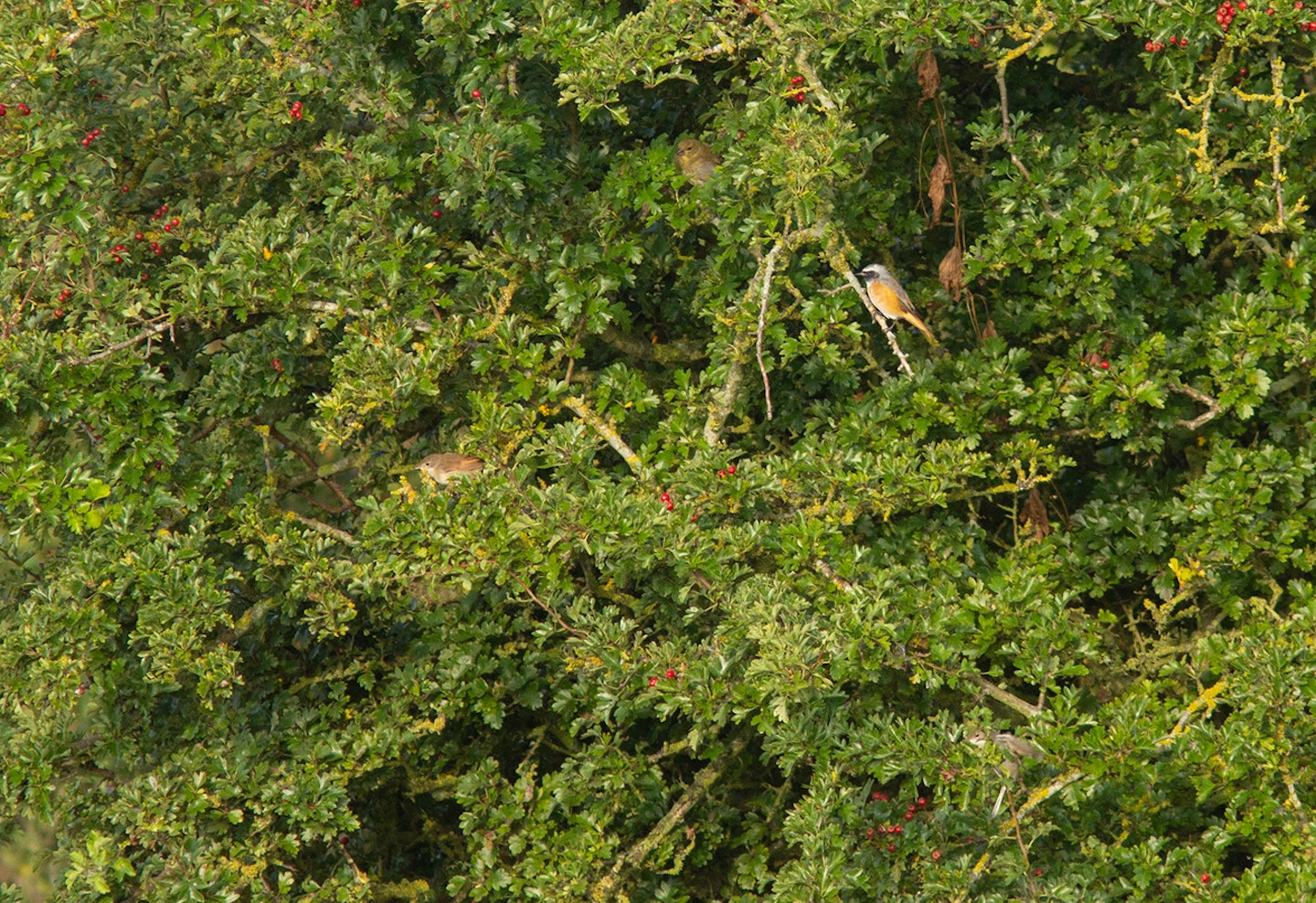
Other highlights during the day included a Hobby, a Wheatear and a Greenshank (the latter at BLGP wader pit). But the real drama of the day took place back at Eldernell, where I was invited to visit an area not really open to members of the public. Some private farmland accidentally flooded a few years ago and has never really recovered. Instead it has become the best bit of wader habitat in the whole Peterborough area, and is the first decent mud any bird coming in from the Wash, following the line of the Nene, will see.
The highlights make all the hard work on the pits north of Peterborough seem almost futile! These were: Little Stint, 1 juv; Spotted Redshank, 5 juvs; Wood Sandpiper, 1 juv; Greenshank, c10; Ruff c30; Dunlin, c10; Ringed Plover, c10;Golden Plover, 1; Pintail, 10; Great White Egret, 1; Wheatear, 1.
See what I mean? The Little Stint was a year tick for me, the Wood Sandpiper only my second of the year and the Spotted Redshanks the first time I have seen more than 2 of this species in 21 years birding in the Peterborough area!
Saturday 28 August
It would be rude not to go to Etton this morning (after all , no-one else will check the pits, at the moment), so I was there once again, first thing this morning. Highlights included the usual 3 Ruddy Shelducks, 2 Barnacle Geese, 8 Green Sandpipers, and a Jay (the first I have seen around here).
I shifted locality to BLGP wader pit, where there were four Ruff today, plus 4 Dunlins, briefly, Ringed Plover, Common Sandpiper and fly-by Great Black-backed Gull and Marsh Harrier. Deeping Lakes had a smattering of waders, including singles of Ringed Plover, Little Ringed Plover, Dunlin and Common Sandpiper, plus a couple of Green Sandpipers. There were also the 3 Ruddy Shelducks over from Etton, plus 3 Goosanders chilling out on one of theislands of the east pit.
In the evening I went back for more punishment along the Eldernell Counterdrain hedge. This time, I got a bit of a result, with brief but pleasing views of a lovely male Redstart.
Friday 27 August
I decided to have a change in my routine, today. Instead of visiting the Etton pits, I decided to start at Eldernell. There have been several Wrynecks seen across the country (though mainly on the coast, of course0 and the last place I saw one was at Eldernell. To be fair, I have only seen two Wrynecks locally, so it is hardly a fair sample. But you have to start somewhere.
I walked along the Counterdrain hedge (which is rich in warblers and has a very good record for Redstarts) and recorded about 40 species of bird. The highlights were calling Cranes, calling Water Rails and a few Cett'is Warblers (also heard, not seen).
At lunchtime, I had a spell at BLGP, where a couple of Little Stints had appeared while I was at Eldernell! Sadly, they didn't stay long. I recorded 3 Ruff, 1 juvenile Dunlin, 3 Snipe and a my first juvenile Black-tailed Godwit of the year.
Thursday 26 August
I hope thing are not quieting down too much at Etton pits. Easily the highlight for me this morning was a Hobby, hunting over the 'big pit'. There were 3 Red Kites hanging around this morning, too, perhaps looking for beasties chopped up my the recent mowing activities along the ridges round the pits.
Waders were reduced to just 2 Green Sandpipers, a single Common Sandpiper and a single Snipe. The 2 Barnacle Geese and 3 Ruddy Shelduck were still about, as were a couple of Egyptian Geese. On the nearby Vergette Wood Meadow (which we used to call the stick pit, because the trees planted there never got to be much more than sticks, owing to the constant flooding), there were 3 new-in eclipse male Wigeon, the first of the 'autumn' here.
Wednesday 25 August
After a quiet start at Etton pits, things livened up a bit, partly as a young Peregrine, came down and started scaring the living daylights out of the local gulls and wildfowl. Probably the scarcest bird was an adult Mediterranean Gull, which looked like the same individual I saw with Hugh Wright a few weeks ago.
Other goodies included the 3 Ruddy Shelducks, 2 Barnacle Geese, 5 Green Sandpipers, 1 Common Sandpiper, 3 Ringed Plovers and 3 Snipe.
In the evening I popped over to Deeping Lakes, where there was an adult Ruff, about 8 Snipe, 2 Common Sandpipers and my first juvenile Dunlin of the autumn. Most interesting, perhaps, was a Shelduck, new-in today. As you may know, most British Shelducks head to the Waddenzee to moult during August, so we don't see many around here at this time of year.
Tuesday 24 August
My good run of good birds continued this morning, at Etton pits. Firstly, there was Curlew preening, resting and feeding on the island-rich southern pit we call Rectory Pit. Also on that pit were 8 Green Sandpipers, 1 Common Sandpiper, 3 Ringed Plovers and a Little Ringed Plover.
But better still, I heard a twittering call, and looked up to see a flock of 5 Turnstones flying north (accompanied by a small wader which was either a Dunlin or a Ringed Plover, I think, but I turned round to shout a call for my friend Andy Frost to look at them (he'd just arrived on the scene) and when I looked back I couldn't see the flock. Turnstones are pretty scarce passage birds around here, and a flock of 5 is a rare sight locally.
Monday 23 August
I had a great hour between 7am and 8am at Etton, this morning. Highlights included a flock of 16 Curlews, silently drifting north at 7.30 (I think this is the largest group of Curlews I have ever seen in 21 years birding around the Peterborough area); a juvenile Greenshank, 8 Green Sandpipers, 3 Ruddy Shelducks, and 2 Golden Plovers overhead (my first of the 'autumn').
I heard a distinctive croaking call, and looked up to see 2 Ravens had come to the edge of the Big Pit, and were apparently collecting gravel. They were seemingly also passing bits of gravel bill to bill and indulging in a bit of mutual preening ( aka 'allopreening').
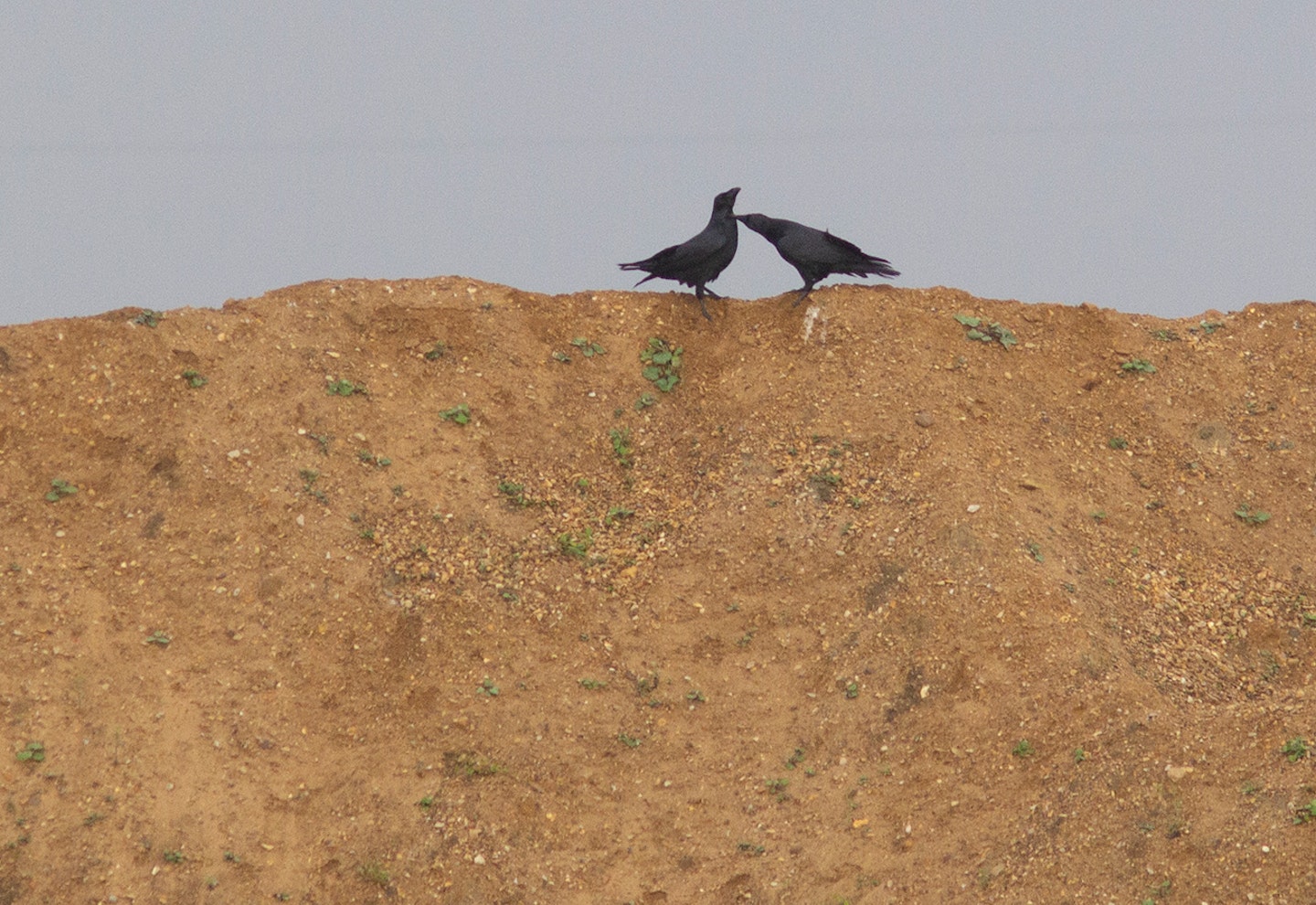
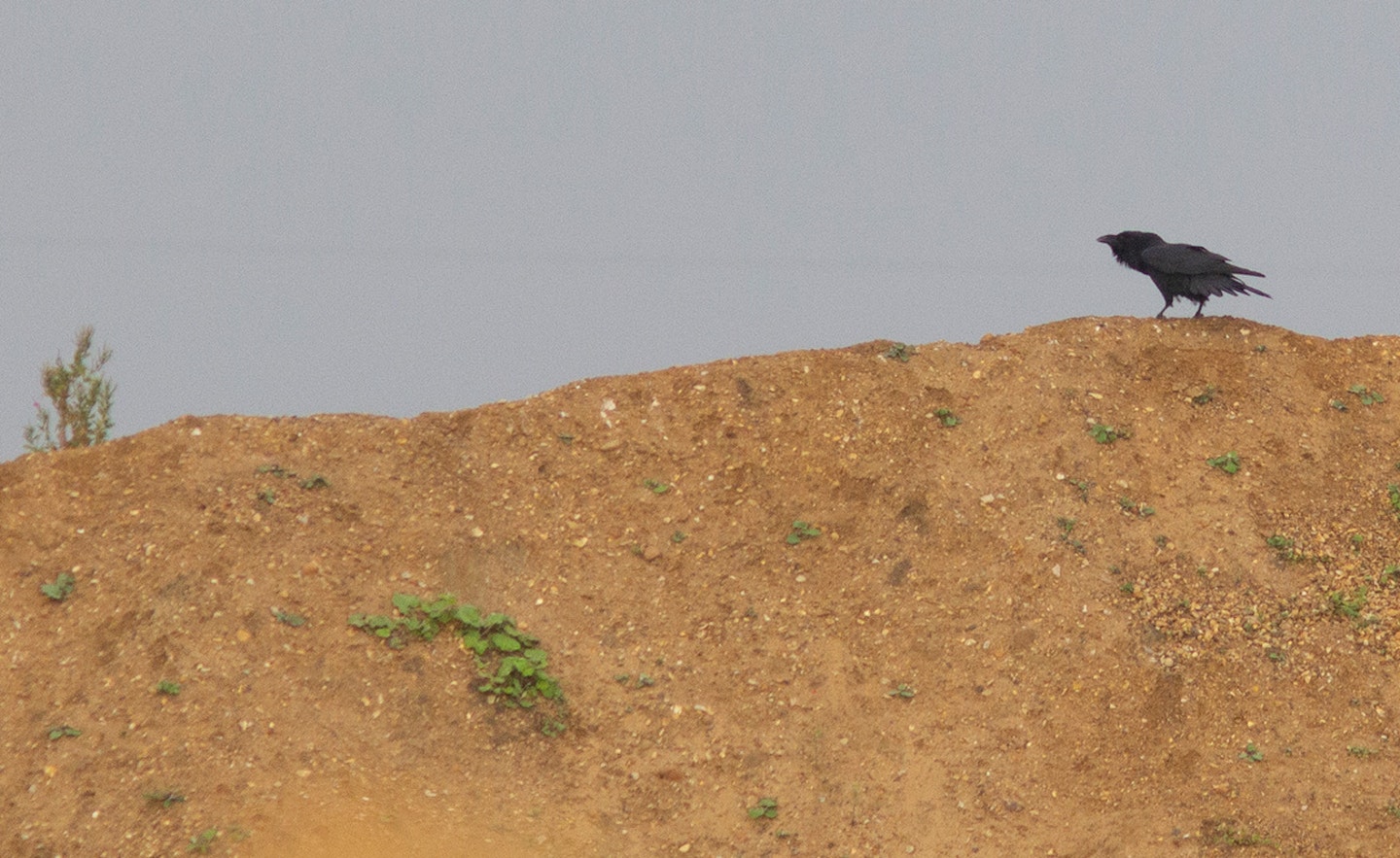
Sunday 22 August
It was an early Etton start for me again, this morning. It being a Sunday, there were no trucks and diggers in action today, so the birds were less disturbed. There were a huge number of geese out on the stubble fields, including a couple of Barnacle geese and the 3 Ruddy Shelducks. Other highlights included a couple of juvenile Greenshanks, and a 2cy Mediterranean Gull. This seems to be the same bird which has been around few a few weeks, but has now moulted enough so it looks like a classic second-winter (ie like an adult winter, but with a few black spots in the tips of the primaries).
At one stage, a Grey Heron glided down to the big pit, and all the gulls and waders panicked (perhaps thinking it was an Osprey?). As the flock of Lapwings moved off, I noticed there was a single Ruff among them.
Later, a large (female?) juvenile Peregrine fluched several hundred gulls, there, and I even saw it strike the tail of a juvenile Lesser Black-backed Gull, a much larger bird than the falcon!
Later I popped over to Deeping Lakes LWT, where the 3 Rddy Shelducks had relocated, and a juvenile female Ruff (reeve) was also present, which may also have flown the 3 miles east from Etton, during the big, heron flush.
In the afternoon, I went out again, this time to Eldernell, part of the Nene Washes east of Peterborough. There is a particular hedge there where I have found several Redstarts over the years. And, as it happens, I found another one this afternoon, in exactly the same place that they love. The combination of a dense wind-break hedge, and short cropped turf with plenty of insect life, is irresistible to these scarce migrants, it seems!
Also along that hedge (which runs by the Counterdrain, parallel to the raised Nene Way), I found several Willow Emerald Damselflies, the first time I have seen them on the Nene Washes complex. Other highlights were 3 Great White Egrets overhead, the constant sound of calling Greenshanks to the north and a group of 4 Cranes including not yet fully grown juvenile, which presumably was hatched locally. We Peterborians are so lucky to have Cranes breeding on our doorstep!
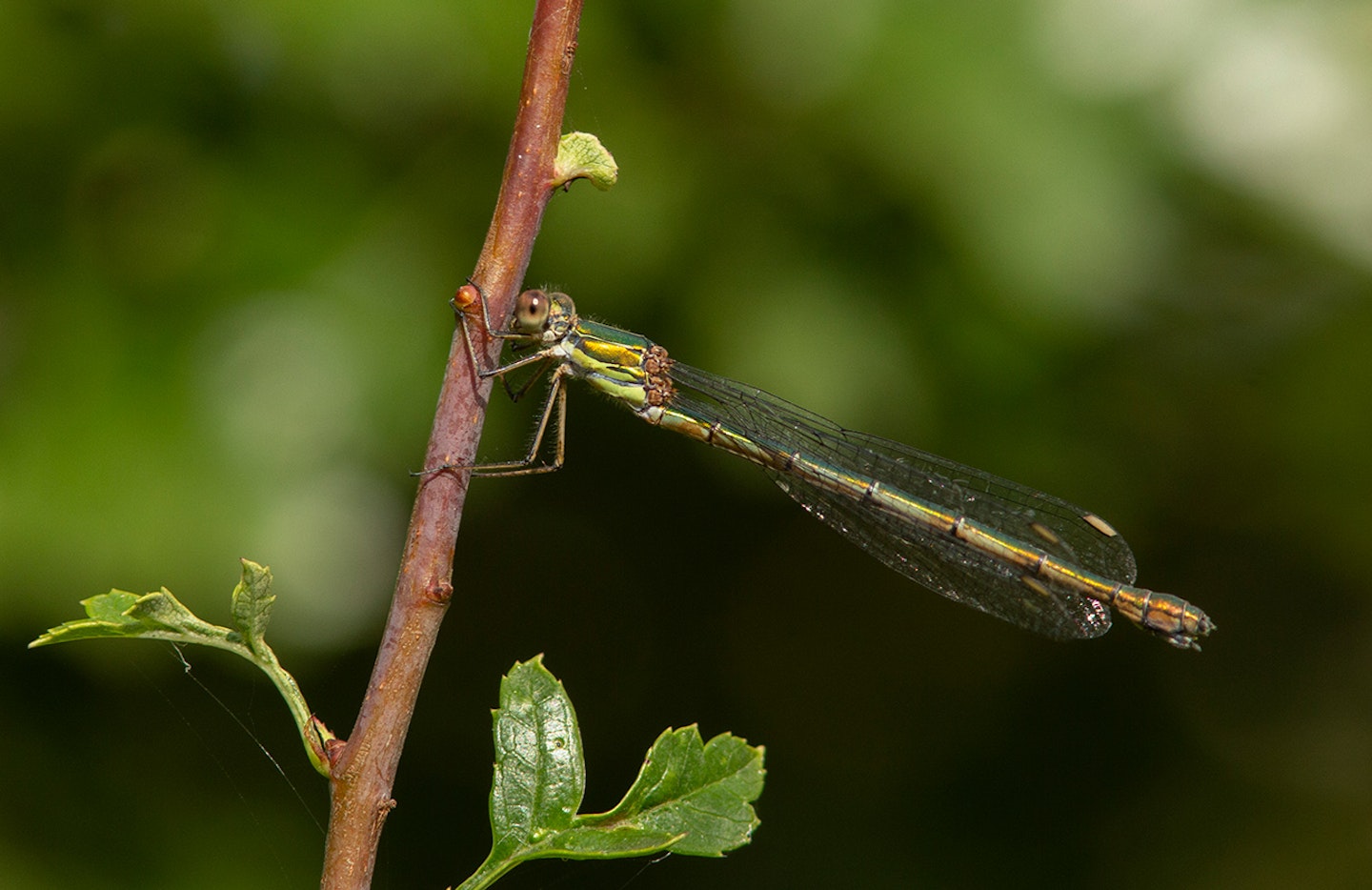
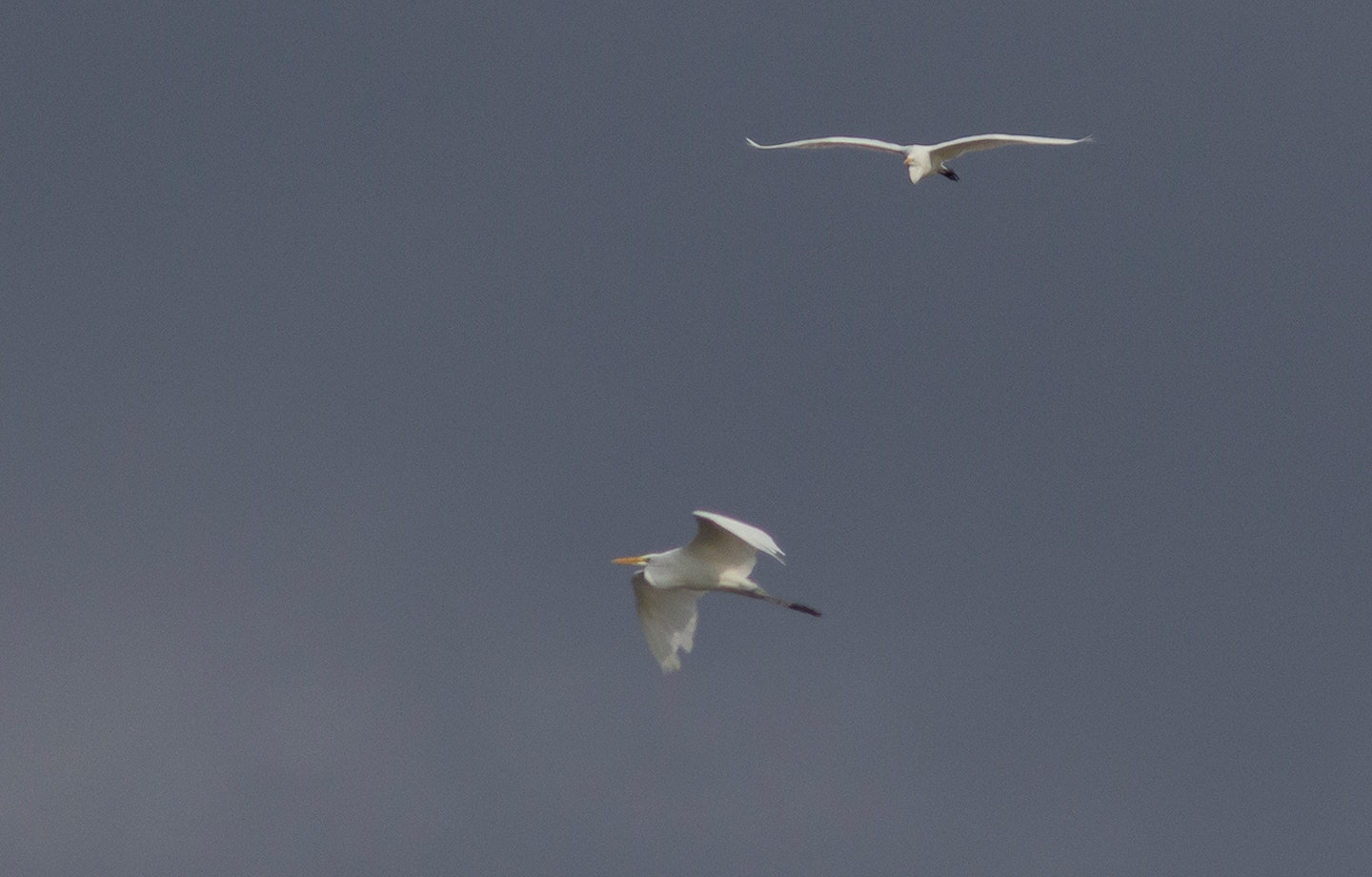
Saturday 21 August
I had a really good morning at Castor Hanglands. Birds around the reserve (which is a mix of mature woodland, scrub and rough meadow-like clearings) included Raven, 18 Chiffchaffs (Including 3 singing on this warm, muggy morning), a croaking Nightingale (first I have heard for months) and, best of all, 2 Tree Pipits, my target species! This is only the second time I have seen more than one Tree Pipit together in the PBC area (the othe time being my first, locally, also at Castor Hanglands) in September 2008.
At Etton pits, the Ruddy Shelducks were once again present, as were 2 Egyptian Geese, 3 Green Sandpipers, 1 Common Sandpiper, 3 Ringed Plovers and a lIttle Ringed Plover.
Friday 20 August
Inspired by local south Lincs birder and Peterborough area year lister Josh Jones getting a Tree Pipit on one of his patches yesterday, I started my day at 5.45am at Castor Hanglands, a site where I have seen most of my few Tree Pipits in the Peterborough area. This is the place the Helpston poet John Clare called Ailsworth Heath. There was plenty of bird action, this morning but no pipits... Ravens were constantly calling and there were plenty of calling Bullfinches and Coal tits to ad to the soundscape.
A pair of Tawny Owls were calling to each other despite it being broad daylight, and the odd Marsh Tit and Nuthatch were good to hear. I counted 10 chiffchaffs as well.
I still had enough time pre-work, to have a quick sweep of Etton's southern pits. Highlights there included a late Swift, 4 Green Sandpipers, 3 Ringed Plovers, 2 Little Ringed Plovers and best of all, a juvenile Mediterranean Gull on the silt pit.
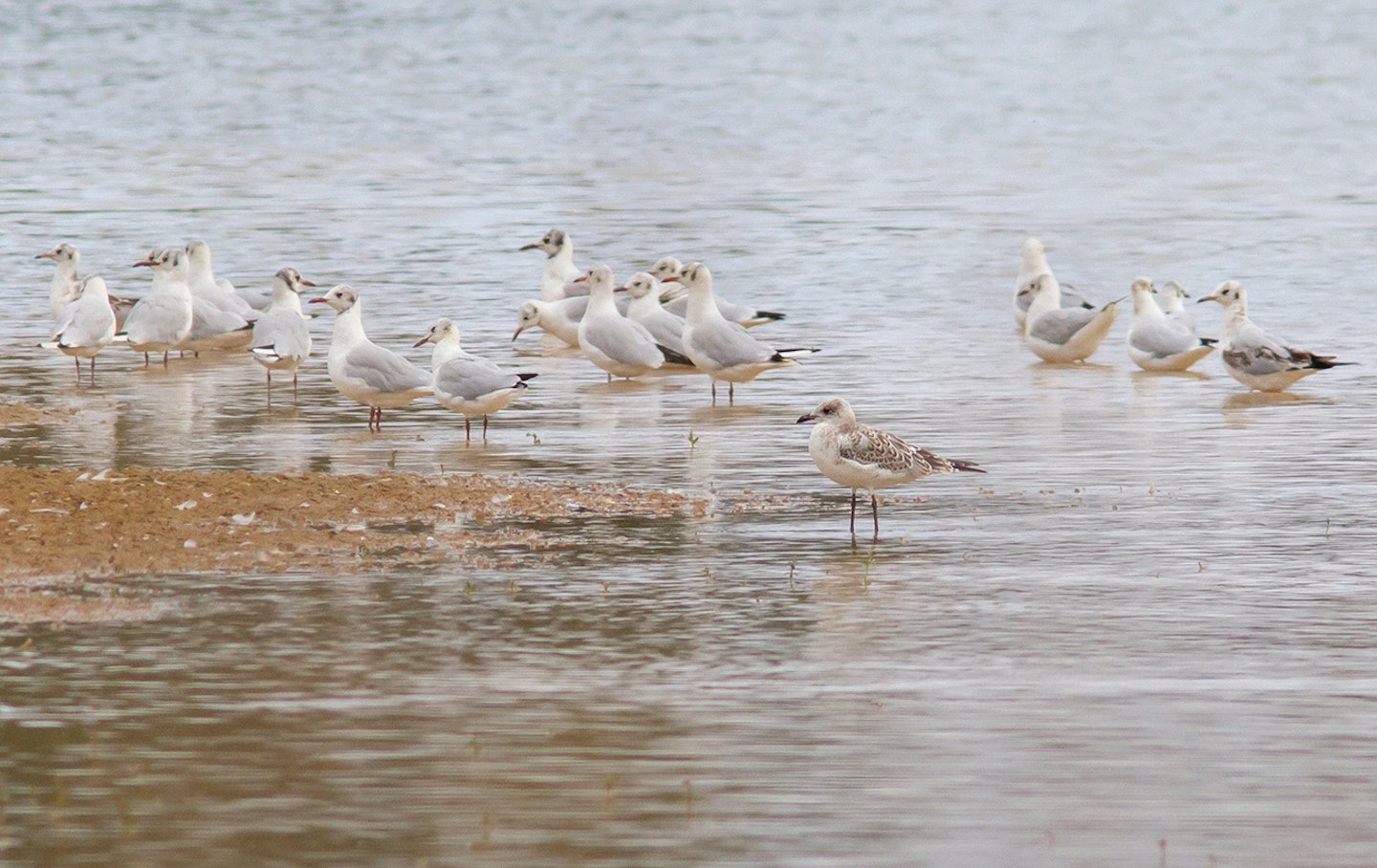
Thursday 19 August
Now that Helpston resident Hugh has gone away for a week or so, he has left me in charge of his patch, the southern pits of Etton. This morning, was a quiet one, however, with 5 Green Sandpipers, 2 Ringhed Plovers, a Sparrowhawk and a group of 3 Roe Deer being as good as it got
Wednesday 18 August
I was too late to do justice to Etton pits this morning, so left it all to my friend Hugh. Instead, I pooped over to Deeping Lakes LWT instead, in the early evening, to check out the east pit. There was not much action there, however, with the highlights being a couple of Common Sandpipers, the odd Little Egret and a few Common Terns along the nearby River Welland.
Tuesday 17 August
It was a day of two halves for me and my birding, today. The first half was a pretty miserable trawl around the pits of Etton seeing not very much. In the evening, though, like a mug, I returned. There was still not a lot on offer, with the best being a flock of 4-8 Swifts and even better, an adult Hobby sitting still in a stubble field, like a Peregrine or a Merlin. I don't remember Hobbies sitting around like this before.
Later, I popped over to see if the overcast conditions had dropped anything down at Deeping Lakes. The best of the action there was a pair of Kingfishers, which were bathing by repeatedly diving off a low perch in the west corner of the east pit.
So, I popped down the road to see if anything was at the BLGP complex near Baston. After checking the 'wader pit' and seeing nothing, I parked on the west side of that pit, where local patch worker extraordinary Josh Jones was scanning the T-junction pit for the Black-necked Grebe (no sign). As I got out of my car he shouted "14 Ringed Plovers" and pointed upwards where 14 Ringed Plovers were indeed flying over and heading SW. Seconds later he shouted "Osprey!", pointed again and dashed to his car to get his camera. There to the SW an adult Osprey was indeed hovering in the distance, over the hidden (private)lake we call The Ocean. It is only the second Osprey either of us have seen locally this year. What a slice of luck and good timing by me, and good finding skills by Josh!
Monday 16 August
It was my dear wife Jo and I's wedding anniversary today, and I spent most of the day either working or resting to recover from the exhaustion of being in the field for so long , yesterday. In the evening we went to a play at the semi-outdoor theatre at Tolethorpe (near Stamford). It is pleasant to have a picnic and a wee drinkypoo before the play. And enjoy the squeaking Goldcrests which seem in abundance in the gardens there
Sunday 15 August
No prizes for guessing I started early at Etton this norming. My friend Hugh has contracted a touch of norovirus from his kids, so excused himself from patch-checking duties... The best action was a Wheatear, a pretty tame one. I wonder if it was the same one we had last week. After all, it was in exactly the same area, and seemed to have habitual perches worked out.
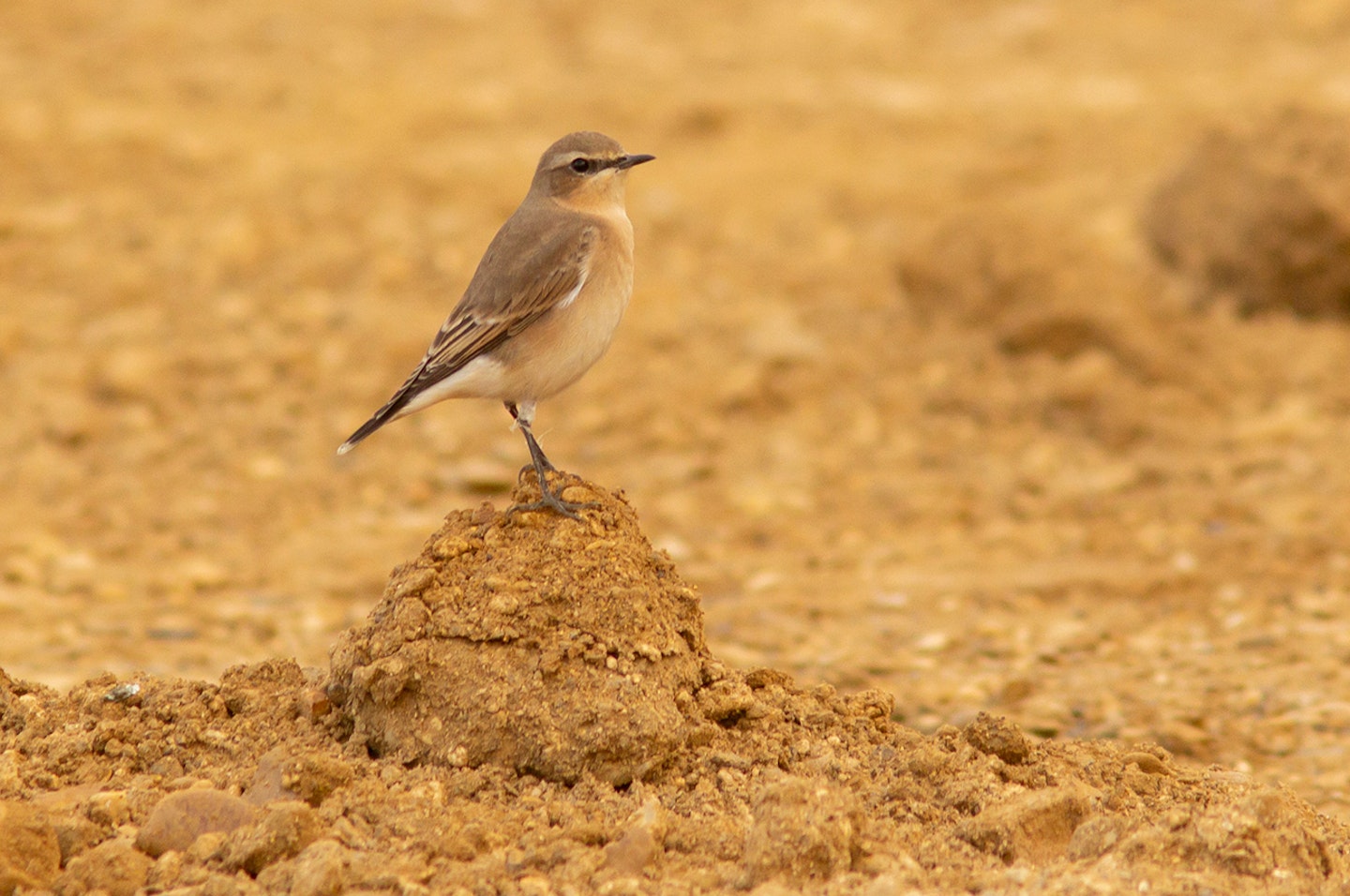
In the afternoon, my friend Chris Jones, suggested we head out to see the Black Stork at Freiston Shore RSPB, and perhaps look for Pacific Golden Plovers at Frampton MarshRSPB on the way home. To cut a long story short, we recorded both rare birds, which was great.
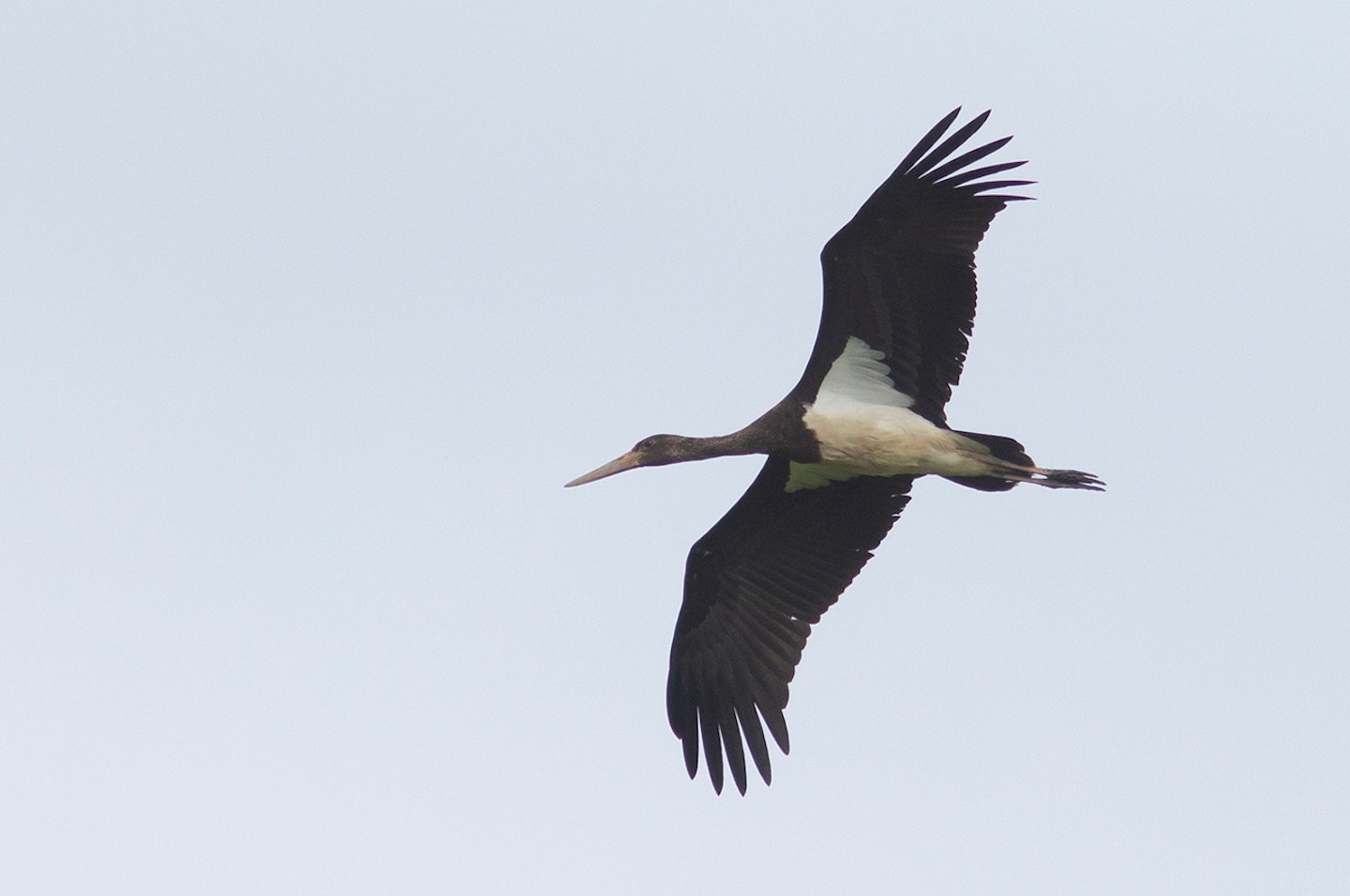
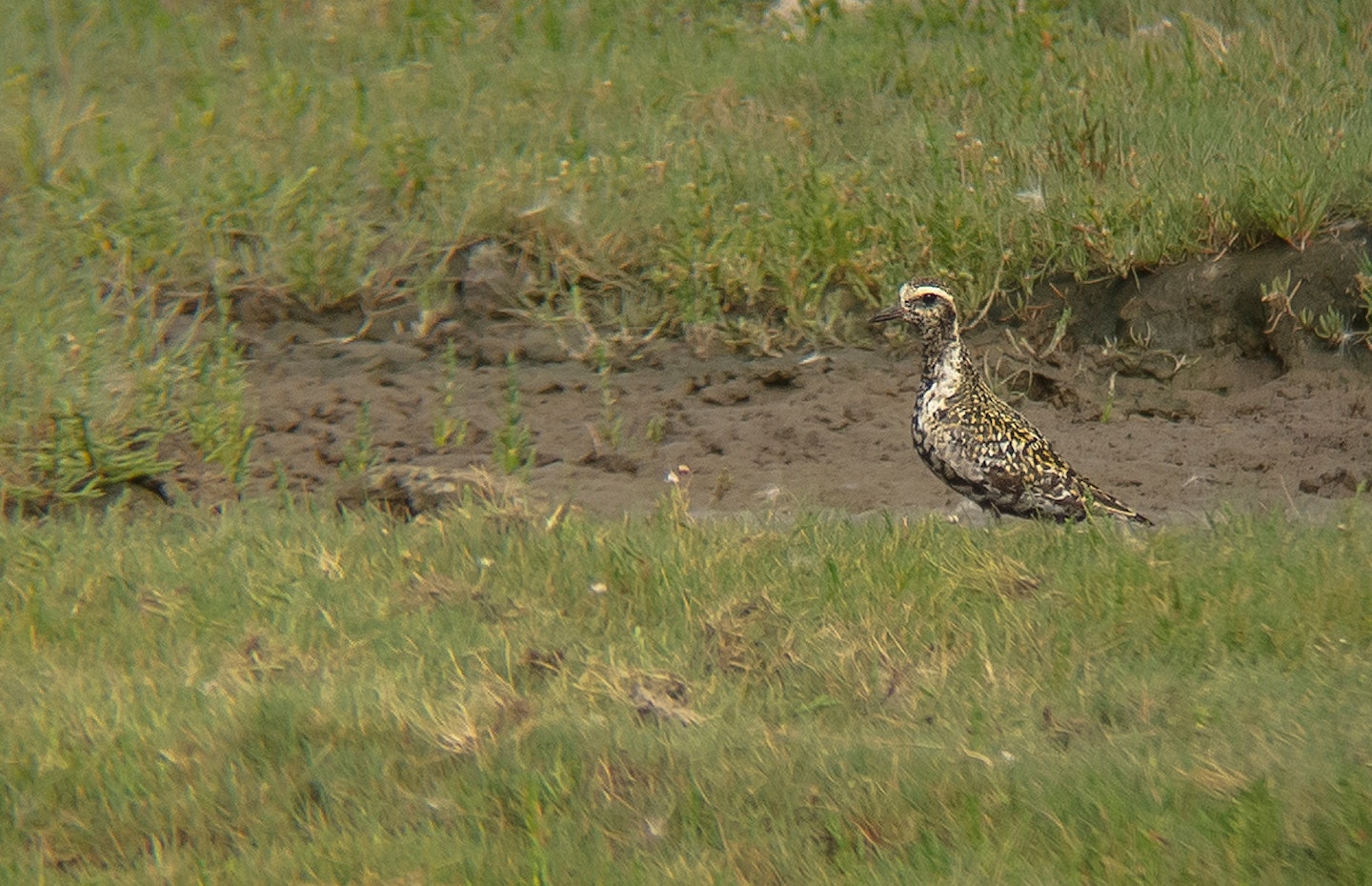
Saturday 14 August
I returned to Etton today. The best action was a Turnstone heard (but not seen) flying south overhead, a find tick for my year list... At nearby Vergette Wet Meadow, there was a basking Common Lizard, the first I have seen in this area.
Later in the day, I returned to see the Whinchat at Cradge Bank and managed one or two shots. It is a tailless adult male, with an unusual moult for the time of year (we usually only see fresh, buff tipped juveniles or adults). I guess its taillessness had a part in its delayed moult.
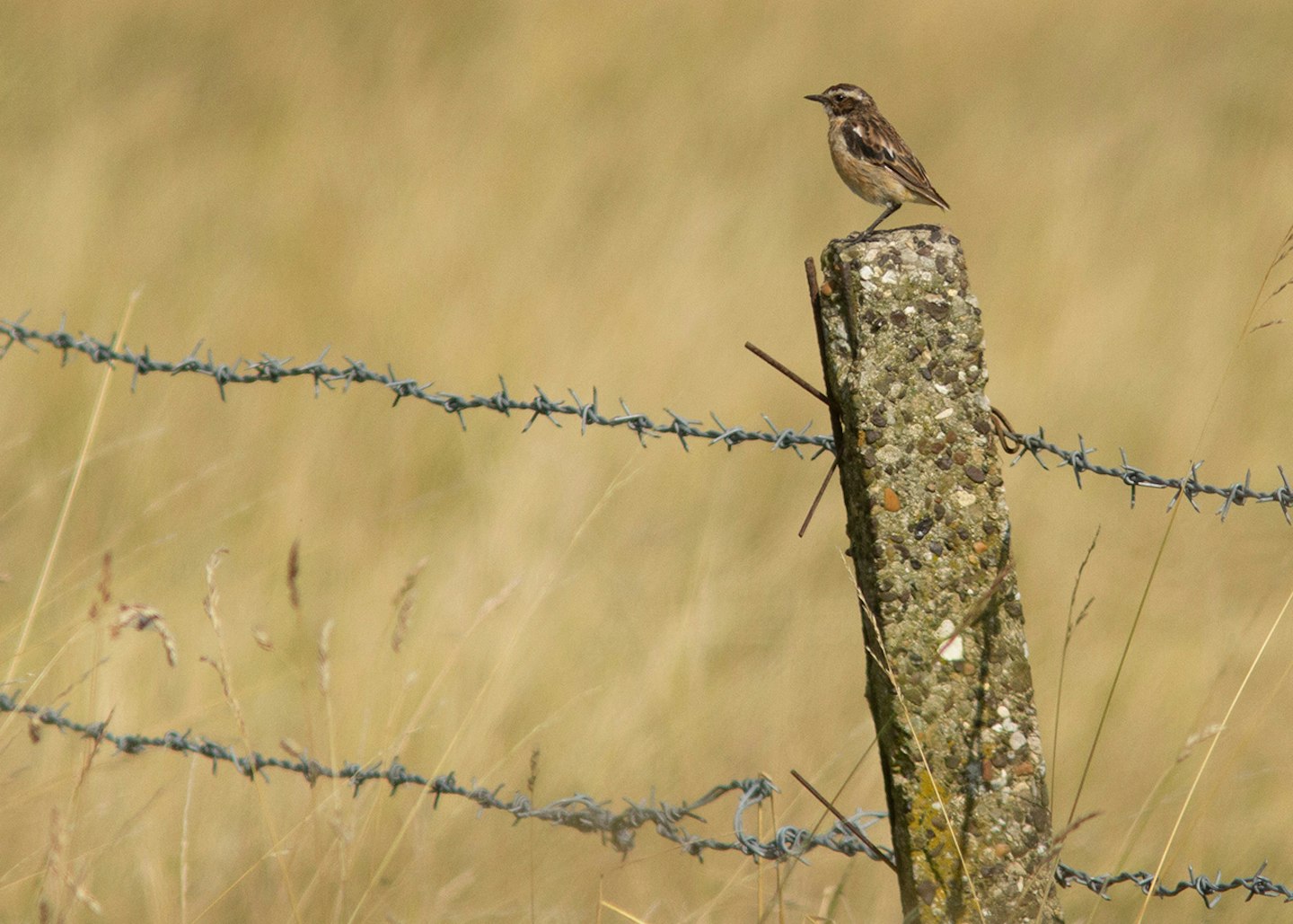
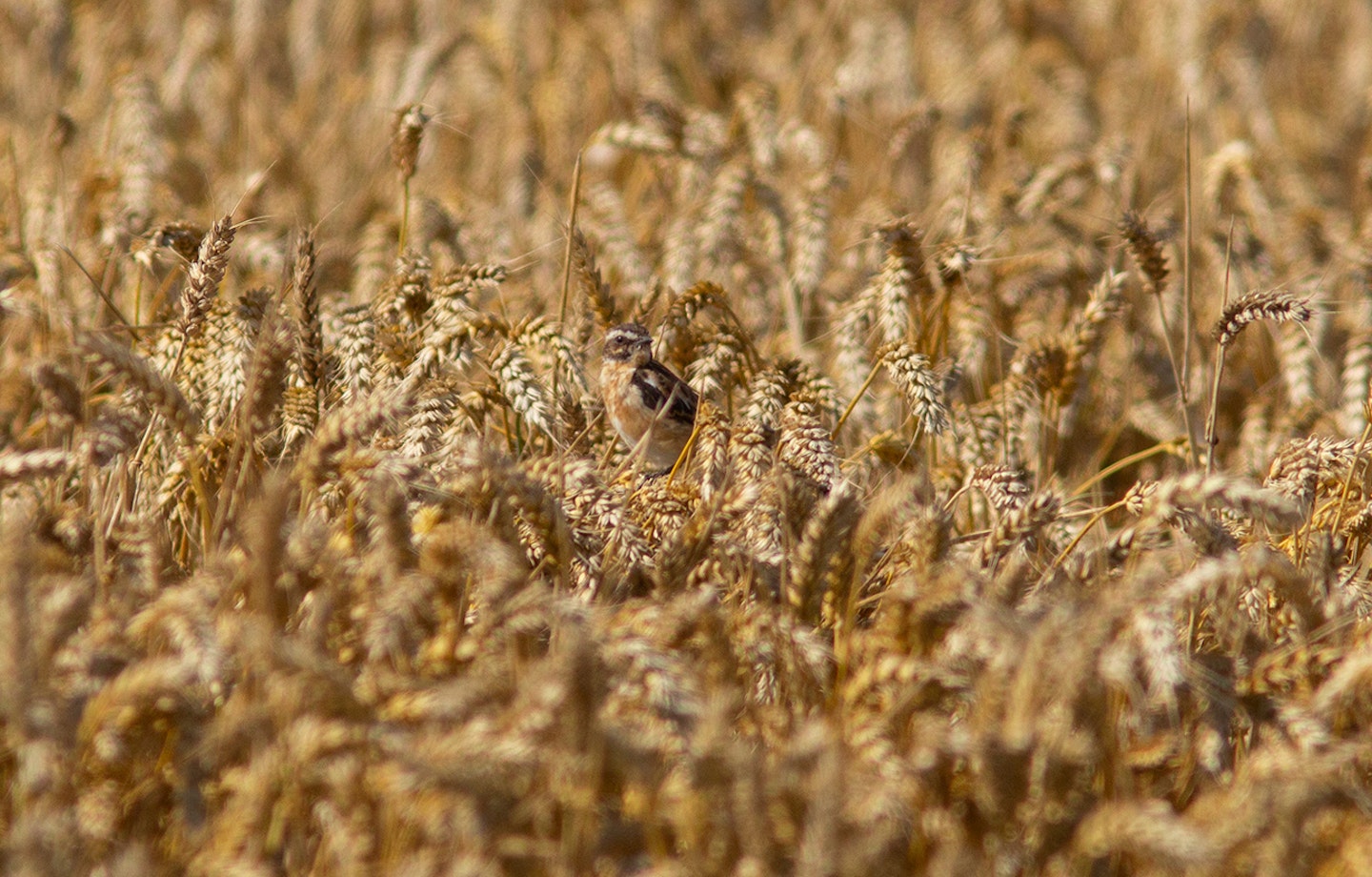
Later still, I popped over to Deeping Lakes LWT, where I saw my first Willow Emerald Damselflies of the year, and took a few shots

Friday 13 August
Yes, this morning at 6am I was back walking around the pits of Etton. Comfortably the highlight for me was a group of 4 Black-tailed Godwits. We do pretty well for these large waders around these parts, and the Nene Washes just east of Peterborough is the last 'stronghold' of the breeding population of the species in the country. Those birds are of the nominate subspecies, Limosa limosa limosa, which is the same one which breeds in mainland Europe.
Most of the wintering and migrant Black-tailed Godwits, however are of the Icelandic subspecies, L. l. islandica. We regularly get flocks of several thousand on the Nene Washes at the right time of year, and late summer passage is also dominated by these birds. So, it was particularly interesting that today's 4 godwits consisted of 3 limosa and 1 islandica. How do I know? Side by side, the two races are strikingly different. The Iceland birds are much smaller, shorter necked and shorter legged. And this combined with their darker, more extensive red underparts, which extend at least as far back as the legs, with minimal belly barring, gives the illusion that the bird is a male Bar-tailed Godwit, when standing next the tall, pale, white belllied (and well barred) limosa race birds.
As with all other recent godwits, they were off early, heading SSE at 6.45am. Also present were the 3 Ruddy Shelducks, 3 Ringed Plovers, 5 Little Ringed Plovers, 8 Green Sandpipers.
To add to yesterday's Wheatear, there was a Whinchat found today, which I relocated on Cradge Bank (near the River Welland south of Spalding) in the afternoon.
Thursday 12 August
The pits at Etton are rapidly becoming a bit of a patch for me (I will soon be visiting Ferry Meadows CP again on my bike, fear not). It only takes 10 minutes to drive there, and access is quick and the lay out of the pits means the lot can be checked systematically and neatly, easily before work.
I arrived there at just after 5.30am today, just before the sites main pioneer, my friend Hugh. Together we had a pretty good patch session, this morning. Highlights included 8 Green Sandpipers, Common Sandpiper, 2 Ringed Plovers, 4 Little Ringed Plovers, and best of all in the wader department, 3 Black-tailed Godwits, flushed form the Big Pit by a juvenile Peregrine (at 5.55am).
The Ruddy Shelducks were back on-site again, this time grazing in a stubble field. But the best bird of the morning was a Wheatear, hanging out with Pied Wagtails on the gravelly area near the edge of the new gravel workings. Wheatears don't breed aroudn here, but further north and west, starting to come through on their way south and east at this tim eof year (and into October). Today's was my first since May, when they look quite different. In common with other chats, freshly moulted and juvenile Wheatears have buff-tipped feathers, so look quite golden (during the winter the tips wear off, so they look brightly coloured come the spring, even if really they are worn!).
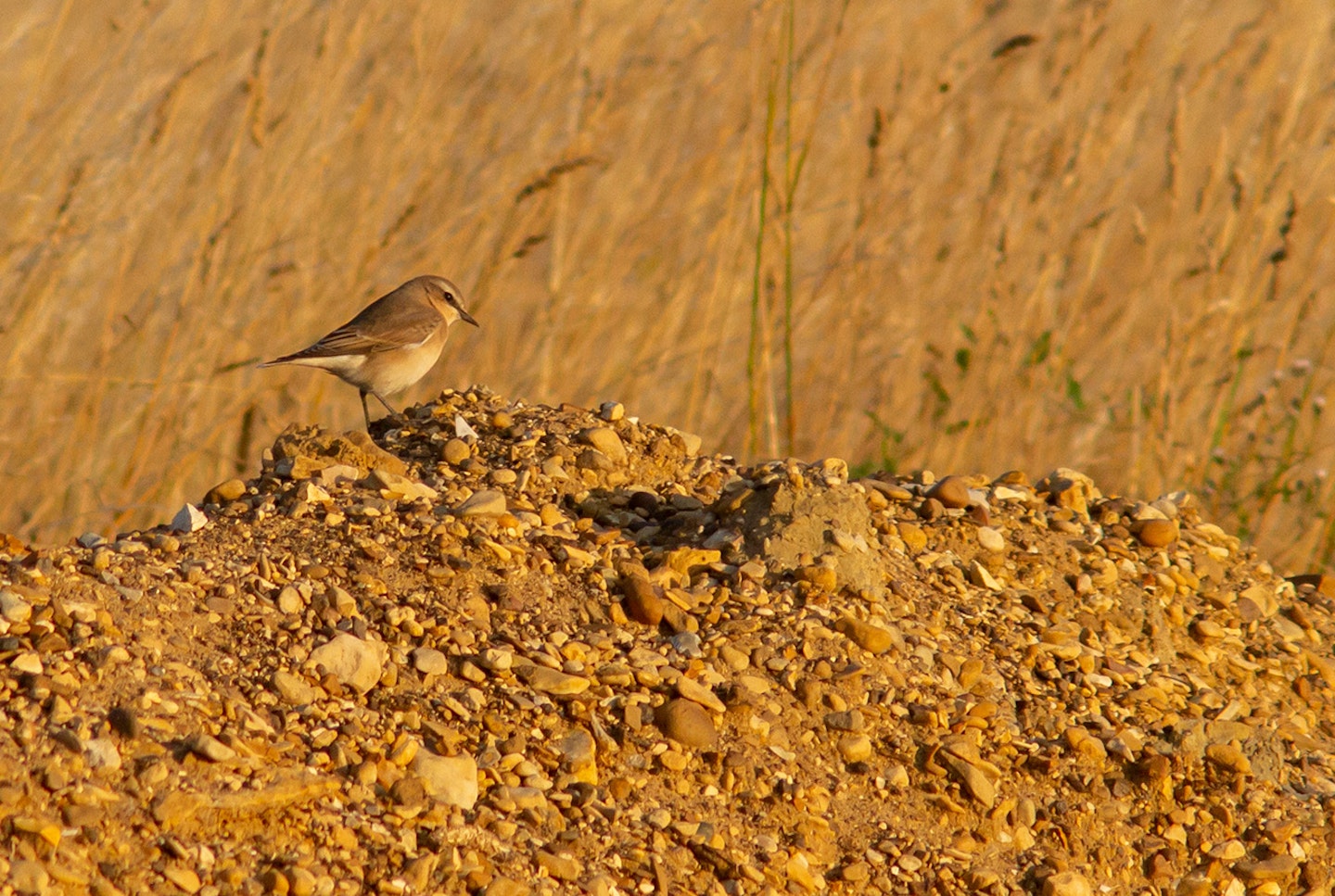
Wednesday 11 August
I made a schoolboy error this evening: I went out birding without my binoculars! Still, I had my scope and camera, so kept calm and carried on at Etton pits. There had been a bit of an increase in Little Ringed Plover numbers (up to 7 or 8), as well as Ringed Plover numbers (3) and Green Sandpipers (5), plus a single Common Sandpiper.
The Big/Martin Pit had the usual 2 Egyptian Geese, and as I tried to get the sun behind me I accidentally flushed the 3 Ruddy Shelducks from off the water (if I had my bins, I would have seen them earlier). They flew off strongly ENE, perhaps following th ecourse of the MaxeyCut to Deeping Lakes LWT, 3 miles away as the Tadorna flies.
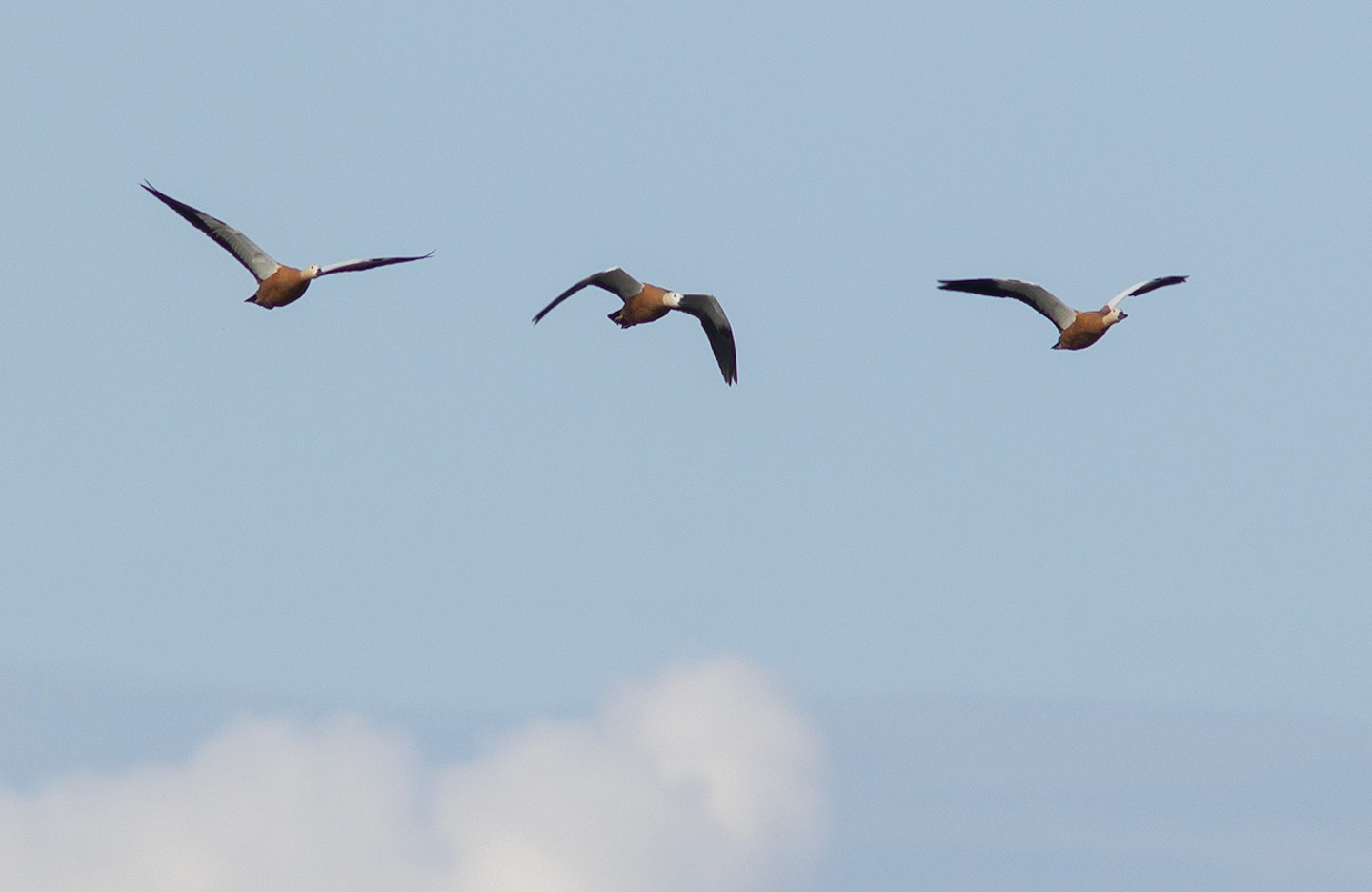
I left soon afterwards, and dcided to go to visit the east pit of Deeping Lakes LWT. Guess who was there? Correct! The three Ruddy Shelducks were there. But not for long, as when three Egyptian Goose flew over them and over the banks of the River Welland, the Ruddy Shelducks went, too.
Tuesday 10 August
I can't force myself to get up early every morning at the moment, but it was a pretty early start at Etton Pits this morning (just after 6am). My friend Hugh was already mopping up the birds. Totals of 2 Black-tailed Godwits (which departed at 6.27am), 5 Green Sandpipers, up to 7 Common Sandpipers and 4 Little Ringed Plovers, were trumped at theBig Pit, by us finding/refinding 3 Mediterranean Gulls, all of different age groupings. There was a worn second calendar year bird, a very worn adult and the dark headed juvenile which was on the RLP last week.
I don't remember ever seeing three Med Gulls at one site in the PBC area before, and certainly not of three different ages. These really are very pleasant looking gulls I love them.
On the walk back to the car, it turned out the 3 Ruddy Shelducks had snuck onto the Rectory lane Pit (RLP). So, I got a couple of photos, before they flew over to the Big Pit.
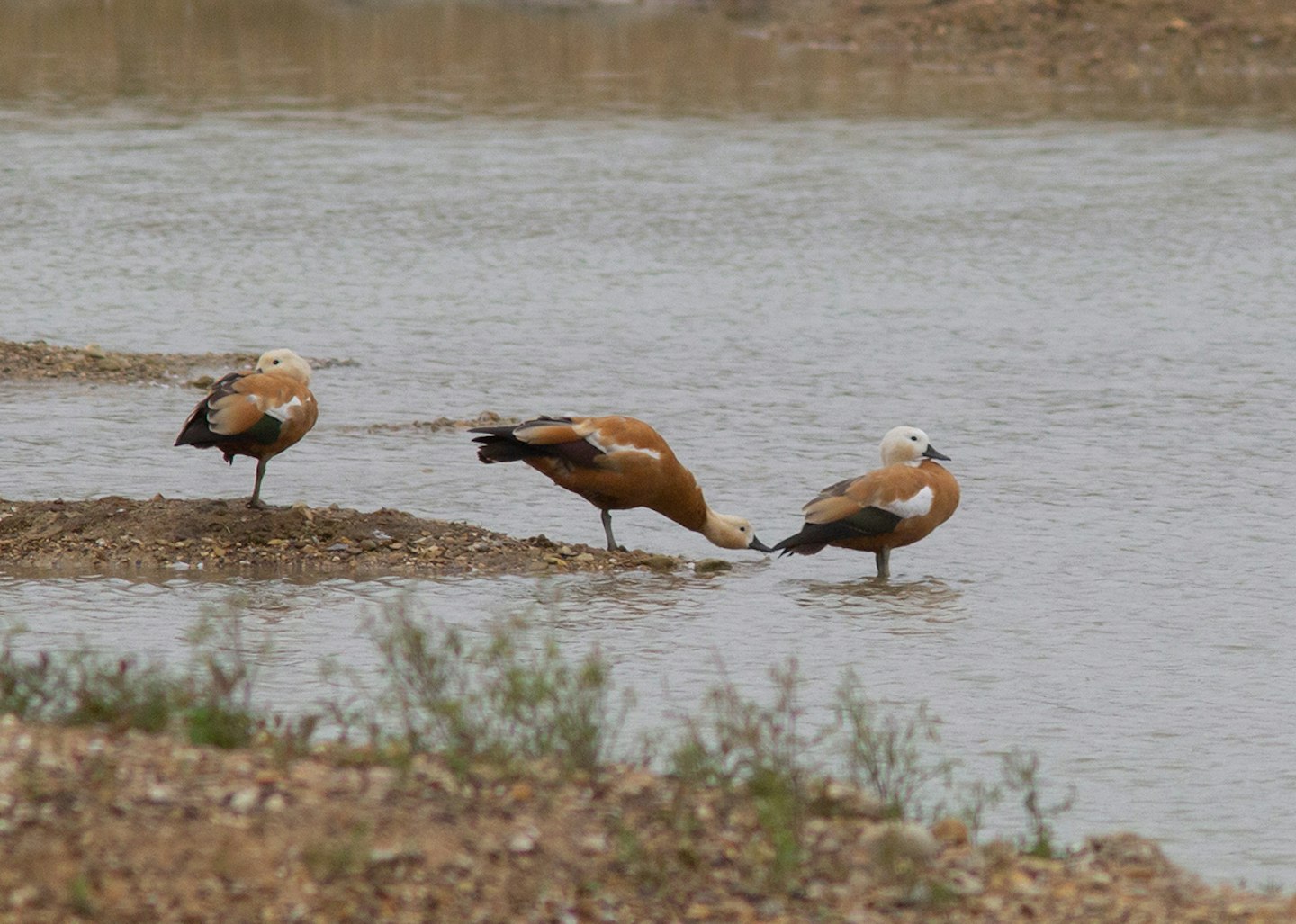

Monday 9 August
I popped over to Deeping Lakes this evening. Highlights on the east pit were 7 Common Sandpipers, 3 juvenile Little Ringed Plovers and a Green Sandpiper. It almost feels liek the wader season is warming up...
Sunday 8 August
I had an afternoon visit to the Etton Pit complex this afternoon. These are some of the best gravel pits in the Peterborough area at the moment (though the pit called Martin Pit (after the Sand Martin colony) or Big Pit, is being infilled and returned to arable land as I type. That will take some time, though, and in the meantime, there is plenty of water and lots of islands, so there are, on occasions plenty of birds.
The first pit I get to coming from Etton, though, is the Rectory Lane Pit (RLP), which is covered in islands and always has at least some waders. There was a family of Little Ringed Plovers (an adult and 3 youngsters) plus a couple of Green Sandpipers on this pit. And a Ringed Plover flew over calling, and then landed on the Big Pit (these are increasingly scarce waders in these her parts)
The Big Pit produce two juicy bird records: firstly a group of 3 Ruddy Shelducks (perhaps a paler headed male and two females). Normally, I would poo poo Ruddy Shelducks as 'plastic'. However, the burgeoning naturalised breeding population on the near continent (mainy the Netherlands I think) combined with recognised spikes in UK records in late July into early August, suggest that these birds could well be birds which have come from mainland Europe, and so will probably one day be 'tickable' as Category C birds. For the moment, they will be marked with an x on my lists...
The other 'good' bird was a juvenile Mediterranean Gull, a paler headed bird than the one on RLP last week.
Saturday 7 August
I hung around at home most of the day, today. The wildlife highlight (which is pushing it) was a Holly Blue butterfly in the garden. Don't get me wrong, these are great little butterflies, and very welcome. It is just that the butterfly season has been so poor this year, with hardly any in the garden; so without wanting to blame the Holly Blue which bucked the trend, I am having a little moan...
Friday 6 August
I got up early this morning. I must do it more often. Inspired by the recent early morning wader and gull finds by my friend Hugh Wright, I arrived at Etton pits (just 10 minutes drive north of my home) at 5.50am. Hugh was already on the site! Anyhow the highlights of a walk around the Rectory Lane Pits were 5 Green Sandpipers, 4 Common Sandpipers, 4 Little Ringed Plovers, and best of all, a juvenile Mediterranean Gull.
Thursday 5 August
A disappointing visit to the Deepings area again, this evening brought just a couple of Common Sandpipers and a Snipe at Deeping Lakes. So, usual fare, and nothing else to report. Still tomorrow is another day...
Wednesday 4 August
I popped over to Stamford again this evening, to see if the Peregrines would perform, but without the rain of Monday night! All four birds were on show, on both St Mary's and All Saints churches (the latter being where they nested). They are tough to photograph well, although they are Peregrines, so I shouldn't really complain...
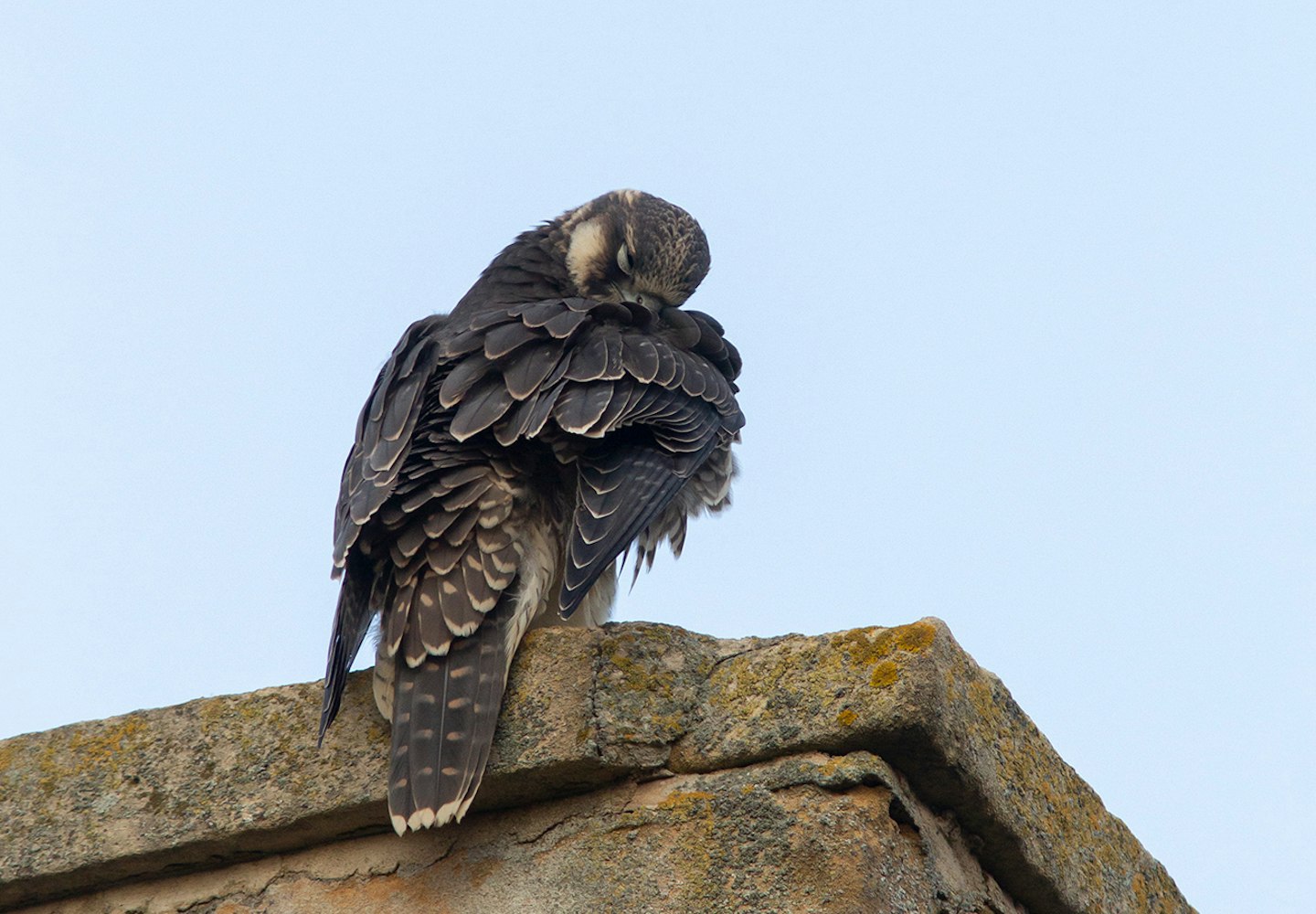
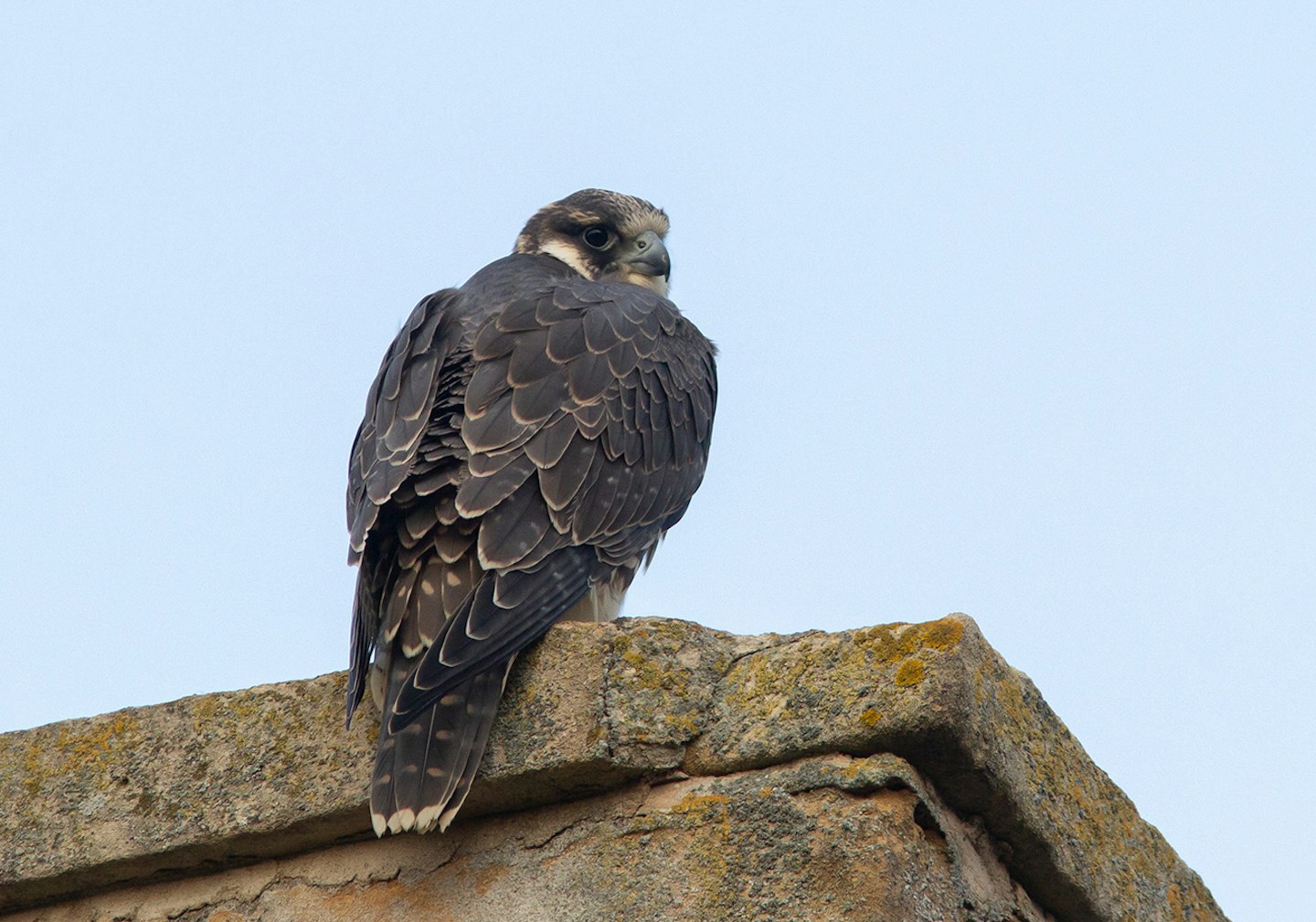
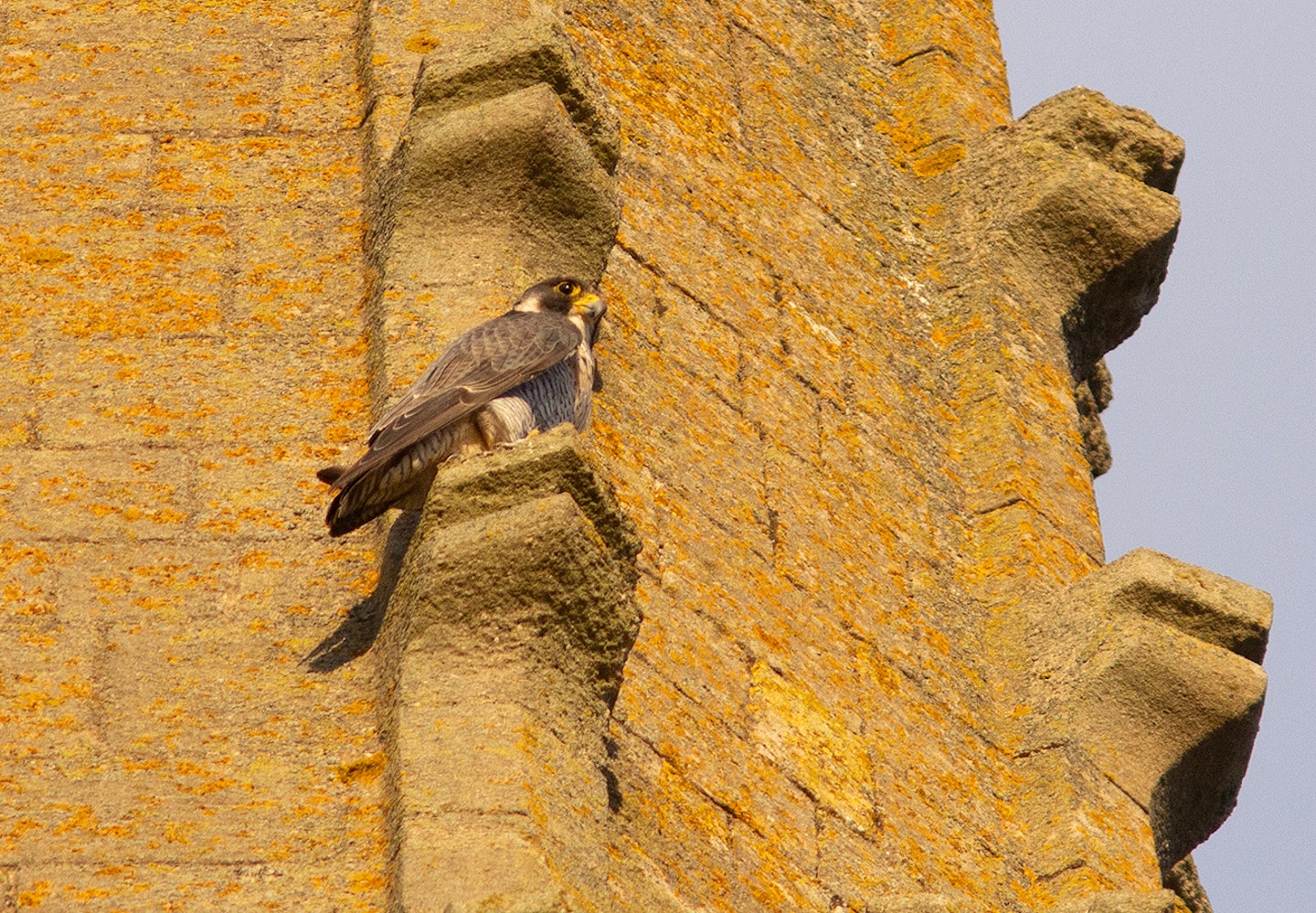
Tuesday 3 August
The wildlife highlight for me today was seeing a Turtle Dove on wires just outside of the village of Frognall, then flying towards the Deepings recycling place in Deeping St James. Turtle Doves are so localised these days around Peterborough, that I categorise them as 'elite' birds ie. birds which you can't guarantee to see every year, and take a bit of special effort, skill and/or luck. Admittedly, there are still enough Turtle Doves around Peterborough, that they are probably not really rare enough to call 'elite', yet; but that time is coming, sadly.
Our Turtle Dove stronghold is a couple of miles south of Frognall along the Maxey Cut (a short cut of the River Welland) between Etton and Tallington. But there have been doves sighted around the recycling centre for several years, and it is good to know they are still about. Turtle Doves are among the latest birds to have suffered massively under modern farming practices, removing their food (and the food with which they feed their young). And this agricultural-led decline has been exacerbated by hunting in southern Europe during the migration season.
Other birds this evening included 3 Common Sandpipers at Deeping Lakes LWT.
Monday 2 August
The clouds are brooding over the garden, this lunchtime. I just popped out and there were a few Swifts overhead, a juvenile Great Tit visiting the feeders and a Holly Blue butterfly touring some of our trees/bushes.
In the evening, despite the rain, Ed and I went up to Stamford to check out the Peregrines which have bred on All Saints. Both adults were hanging around the spire when we arrived, and later both juveniles (now full sized came) came to join them, and beg for food from the parents. Eventually, one had had enough and went in pursuit of one of the local Feral Pigeons, a white one. It was an incredible chase around the city skyline, circling the spire of All Saints, the falcon screaming at its prey in frustration. But the Whitey pigeon one, and later, presumably the same bird was back perching on the church, only about 5m from where the Peregrines had nested!
Soon after, presumably the same juvenile Peregrine was perching on a chimney in the pedestrianised shopping area, presumably resting after its exertions.
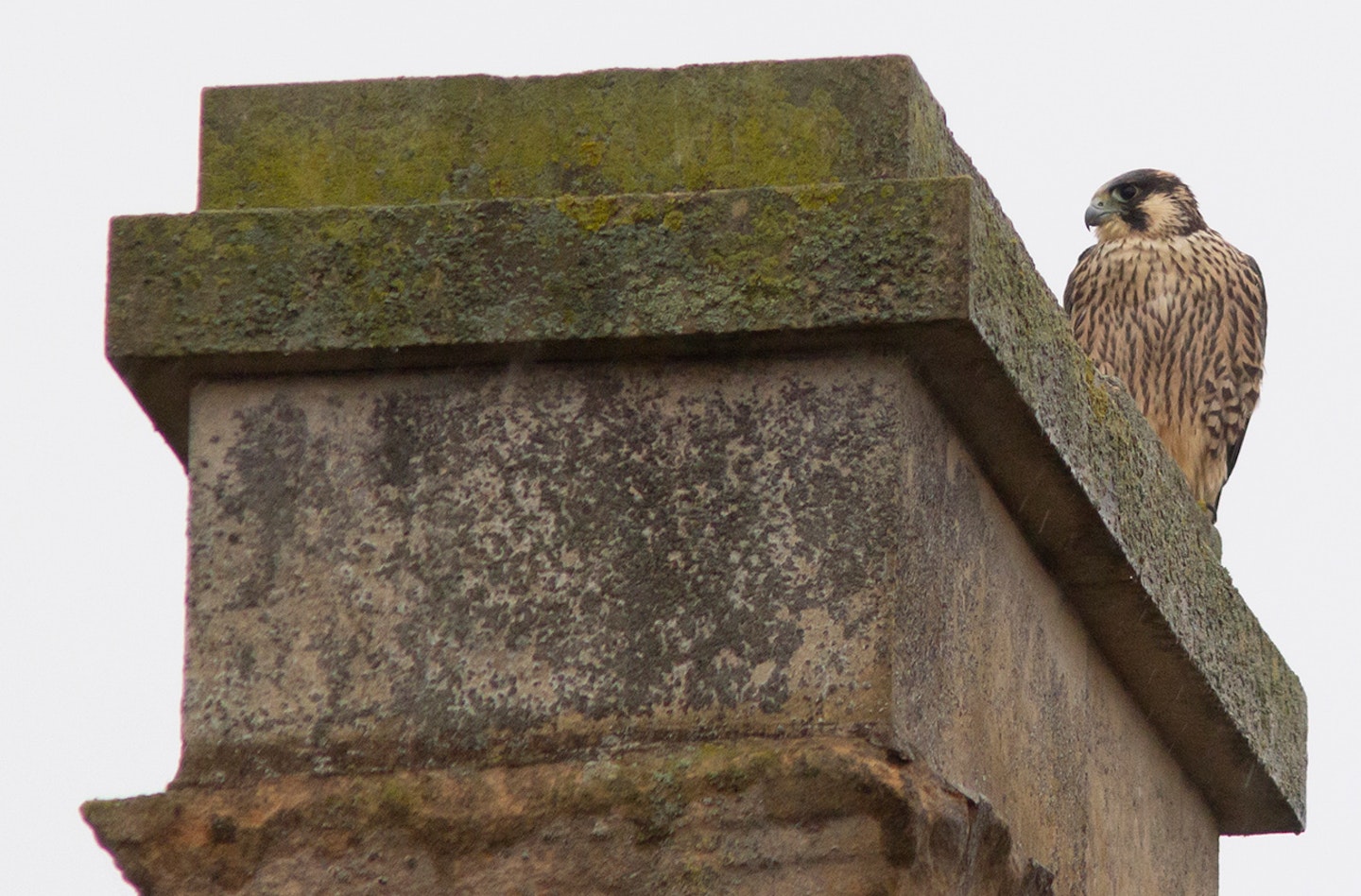
Sunday 1 August
Today, it largely rained, making birding tough. The best I could muster, wildlife-wise, was the Black-necked Grebe, in the evening on the T-junction pit at BLGP. My son Eddie is back from his college in London for a week or so, and I was able to give him a bit of a grebe ID workshop (comparing the BnG with the many Little Grebes of various plumages, on that pit).
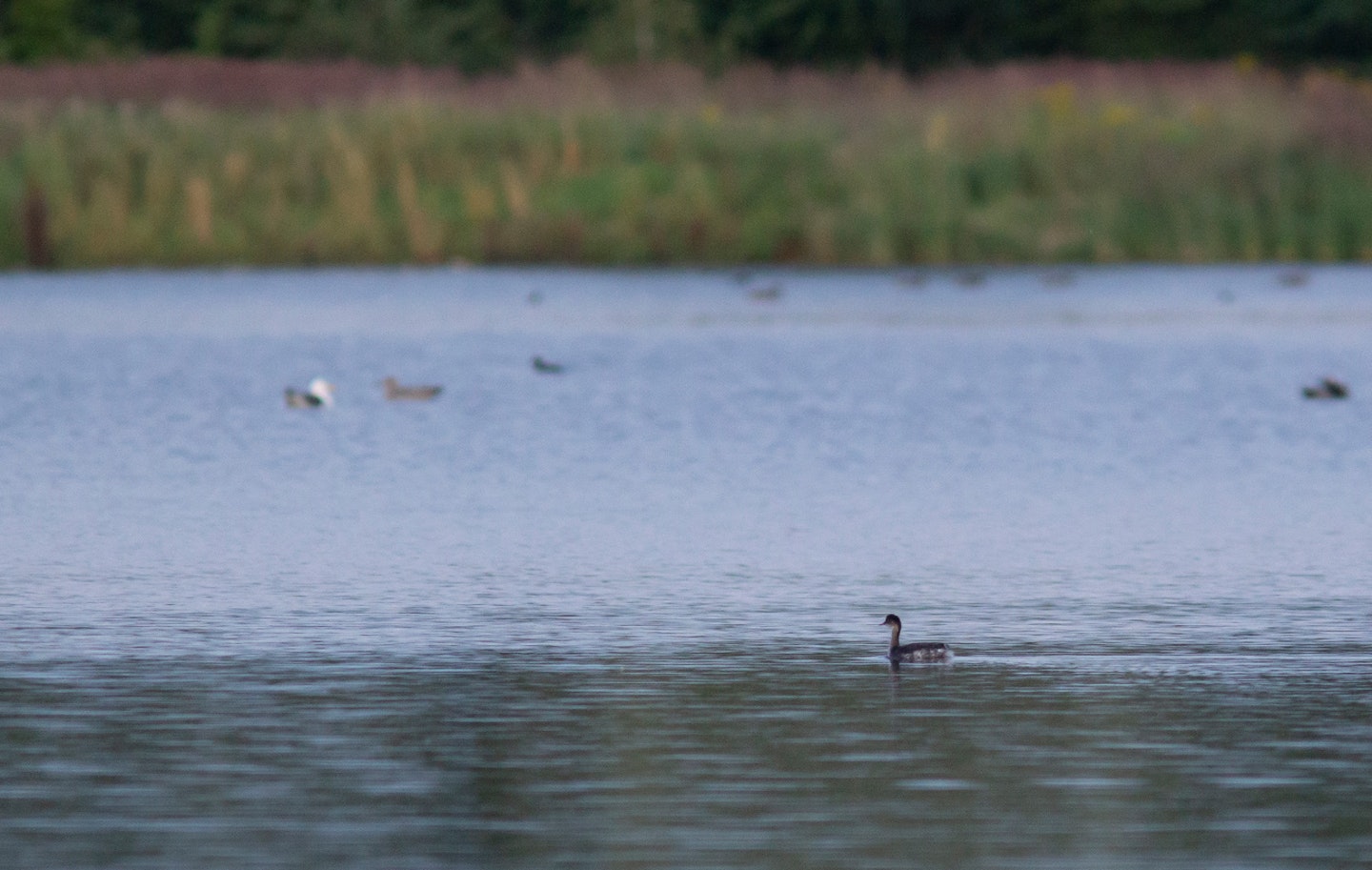
Saturday 31 July
There was a single Black-tailed Godwit on the 'wader pit' at Baston and Langtoft gravel pits (BLGP), near Baston, today. Interestingly, it looked to be dull in plumage and rather lanky, suggesting it was of the subspecies Limosa limosa limosa (the nominate, European rather than Icelandic subspecies), rather than the bright L. l. islandica birds we are usually seeing on passage at the moment. Also present on the muddy eastern edge of the pit were a single Ringed Plover and a single Common Sandpiper.
Later, during a short sunny spell, I popped over to Baston Fen. Then it clouded over, and the best I could record there were a couple of Brown Hawkers egg-laying. In the evening, I saw the Black-necked Grebe on its usual T-junction pit home, once again.
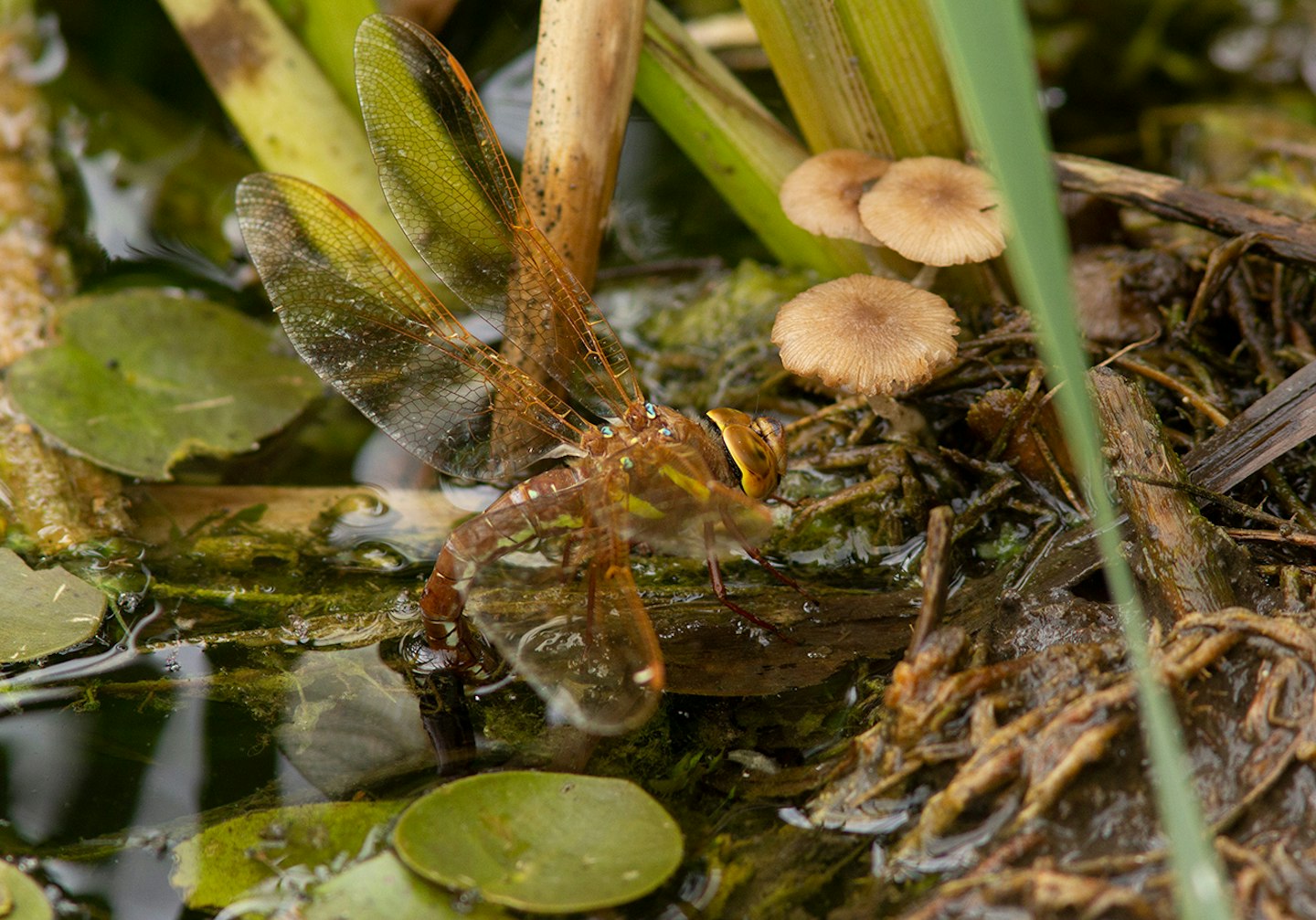
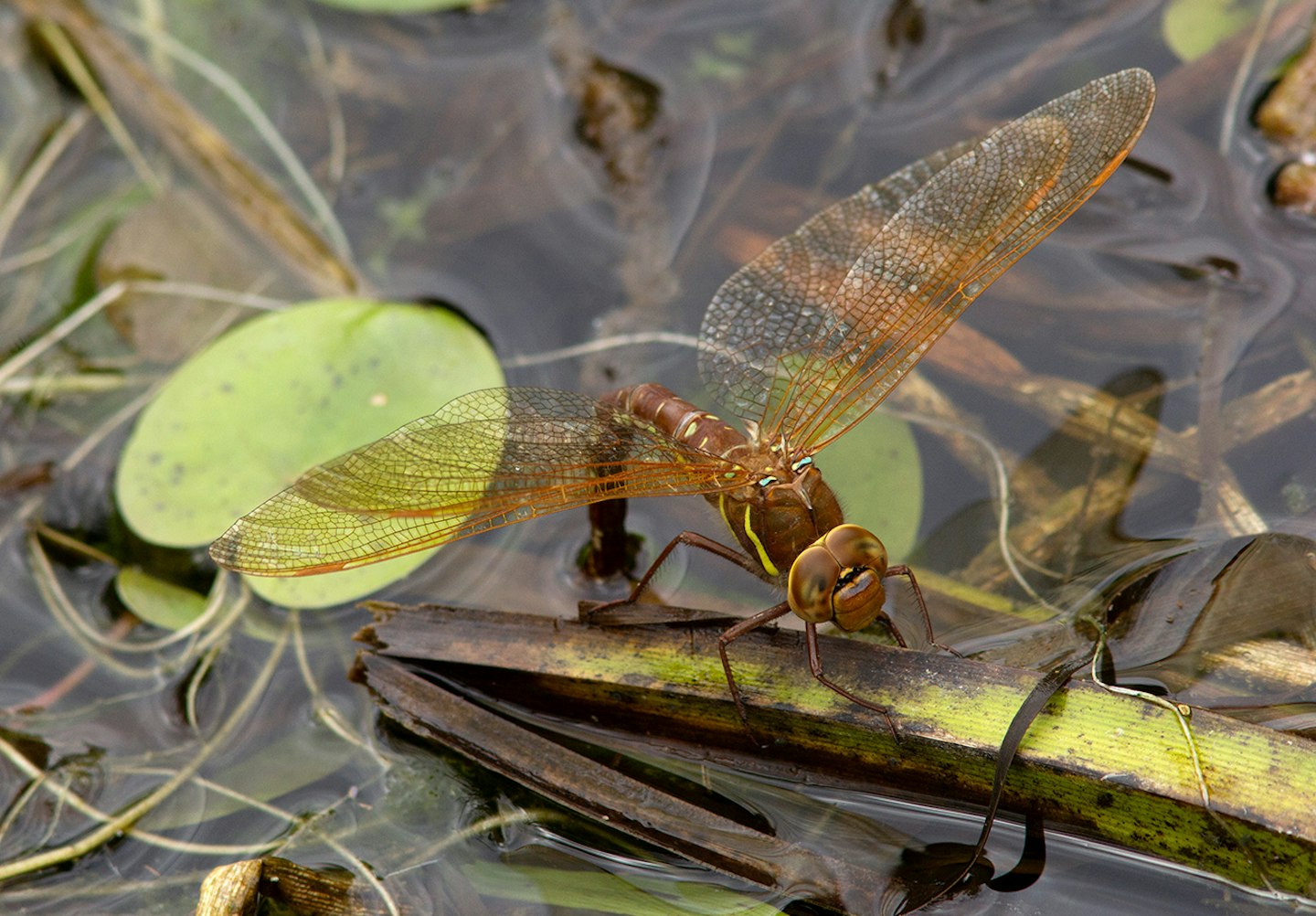
Friday 30 July
The BLGP juvenile Black-necked Grebe was still on the so-called T-junction pit (the pit across the road from the 'wader pit') again today. It is a very shy bird and very difficult to get at all close to to photograph.
Thursday 29 July
It was one of those more of the same type days, today. There three Common Sandpipers at Deeping Lakes LWT, and the usual smattering of Little Egrets, Egyptian Geese and a single eclipse male Wigeon.
Wednesday 28 July

In the garden, today, despite it being a tad windy and cool, we had a few more butterflies than usual. The Speckled Wood above was the star, but there were also Peacock, Large Whit, Small White and a presumed second generation Holly Blue flitting about.
In the evening, I was back in the Deepings. Six Icelandic Black-tailed Godwits were at the BLGP wader pit. There is a small muddy peninsula which appears to be a hotspot for these elegant waders, who drop in to clean and rest and perhaps have a bit of a feed before moving on. The so-called 'wader pit' is a phenomenon, really. When it was first abandoned/sculpted post-gravel extraction, it was truly dreadful for birds. For the first couple of years, it was surrounded by high banks, which you had to scramble up to see perhaps a Shelduck or a Green Sandpiper once in a blue moon.
Then, the bank was lowered and a bit more water appeared, and over the next few years it became a clichéd 'magnet' for waders, hence the name. It was a very shallow pit, with plenty of islands. Over the years it attracted most of the scarce wader species we see roughly annually around Peterborough, including Bar-tailed Godwit, Whimbrel, Curlew, Spotted Redshank, Sanderling, Knot, Grey Plover, Turnstone, Little Stint and a few Temminck's Stints. It has also proved particularly attractive to Black Terns and Little Gulls.
And it peaked in summer 2017 when I found a Caspian Tern there, which was a Peterborough area and even UK tick for me. Sadly, since then, the pit has been allowed to fill with water and there are no longer any islands. But, presumably because they can see through the water, birds flying over perceive that the pit is shallow and it is still remarkably popular with Little Gulls, Black Terns and passage waders, even though there is hardly any muddy edge any more.
Perhaps owing to its position with respect to The Wash (being one of the closest pits to this extraordinary 'estuary'), combined with its shallowness and muddy edge, the 'wader pit' continues to deliver the goods (though to a reduced extent), certainly as far as Black-tailed Godwits are concerned.
Tuesday 27 July
No prizes for guessing that I was back in the Deepings again this evening. Howver, with no Black-necked Grebe on show and just 3 Common Sandpipers and a single Little Ringed Plover, to report, it was not much of an exciting expedition. Perhaps, tomorrow, I will look for juvenile Yellow-legged Gulls, instead...
Monday 26 July
Arguably the highlight of my wildlife watching today was a spell in the garden, with a cup of tea. There were small family parties of Great and Blue Tits coming for sunflower seeds and insects, and male Sparrowhawk dashed over. Swifts are still screaming overhead and my first garden Gatekeeper butterfly of the year briefly visited our main back garden buddleia.
In the evening, BLGP wader pit had a group of 3 Icelandic Godwits, and nearby Baston Fen produced a few nice dragonflies including Emerald Damselfly (this is a male).

I also took a drive along the Deeping High Bank to see how the flooding was coming along, and how many gulls there would be at Cradge Bank. Unfortunately, the entire area had dried up and there was just one Black-headed Gull! Perhaps the fields were filled by a mighty hose?
Sunday 25 July
I had a feeling the BLGP juvenile Black-necked Grebe would be still around somewhere, and it was duly found on the 'T-junction pit', separated only by a road from the shallower 'wader pit'. On the wader pit, a group of 8 Icelandic Black-tailed Godwits tried to land, but instead continued east (towards The Wash). In the evening, that pit had an adult Dunlin, and adult and juvenile Little Ringed Plover, 3 Common Sandpipers, and a flock or two of half a dozen Snipe.
I decided to drive along the River Welland and look for early juvenile chats. Instead, I was surprised by some very nice flooding in the fields where the Deeping High Bankk road drops off the bank of the Welland and continues as Cradge Bank towards Spalding. There were hundreds of Black-headed Gulls and a couple of dozen Common Gulls (which don't breed anywhere close to here). I found my first juvenile Common Gull of the year, and better still, my first juvenile Mediterranean Gull of the year.
Late July is a traditional time for seeing the odd juvenile Med Gull in these here parts, though they rarely succeed in breeding locally. They are great looking juveniles (as gulls go) looking like the Turtle Doves of the gull world, with their scaly (pale fringed) back feathers and soft, rounded head features. I like them a lot! In the photo below, the Med Gull is the lower bird, most of the rest being Black-headed Gulls with a Common Gull on the top right.
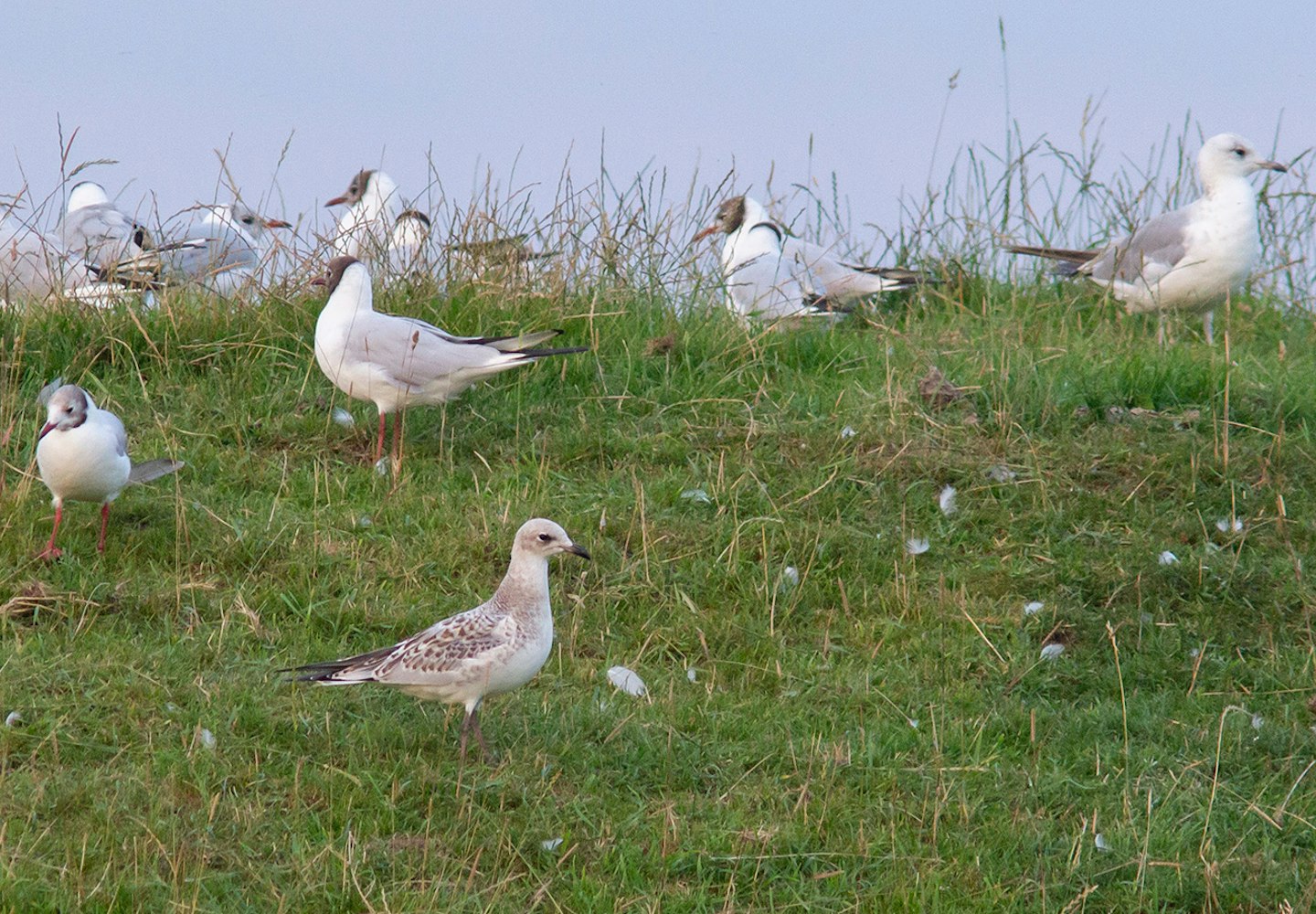
Saturday 24 July
I spent a bit more time exploring pits around the so-called Deepings area, just north of Peterborough, this morning. The pits at Etton, had a few Green and Common Sandpipers and the BLGP wader pit had one Common Sandpiper, too. It was a hot day, so, I decided to visit nearby Baston Fen to look for dragonflies. I parked and walked the few yards back to the little bridge you drive over the counterdrain. On the west side, the counterdrain has been mowed and cleared by some horrific digger, cutter thing, and is lifeless. To the east of the bridge, the well vegetated banks bristled with vegetation and life.
The highlight, was a large Grass Snake which swam across the surface, over the lilies and into the southern vegetation. It was too big to get the whole snale in a photo, but I managed some head-end shots!
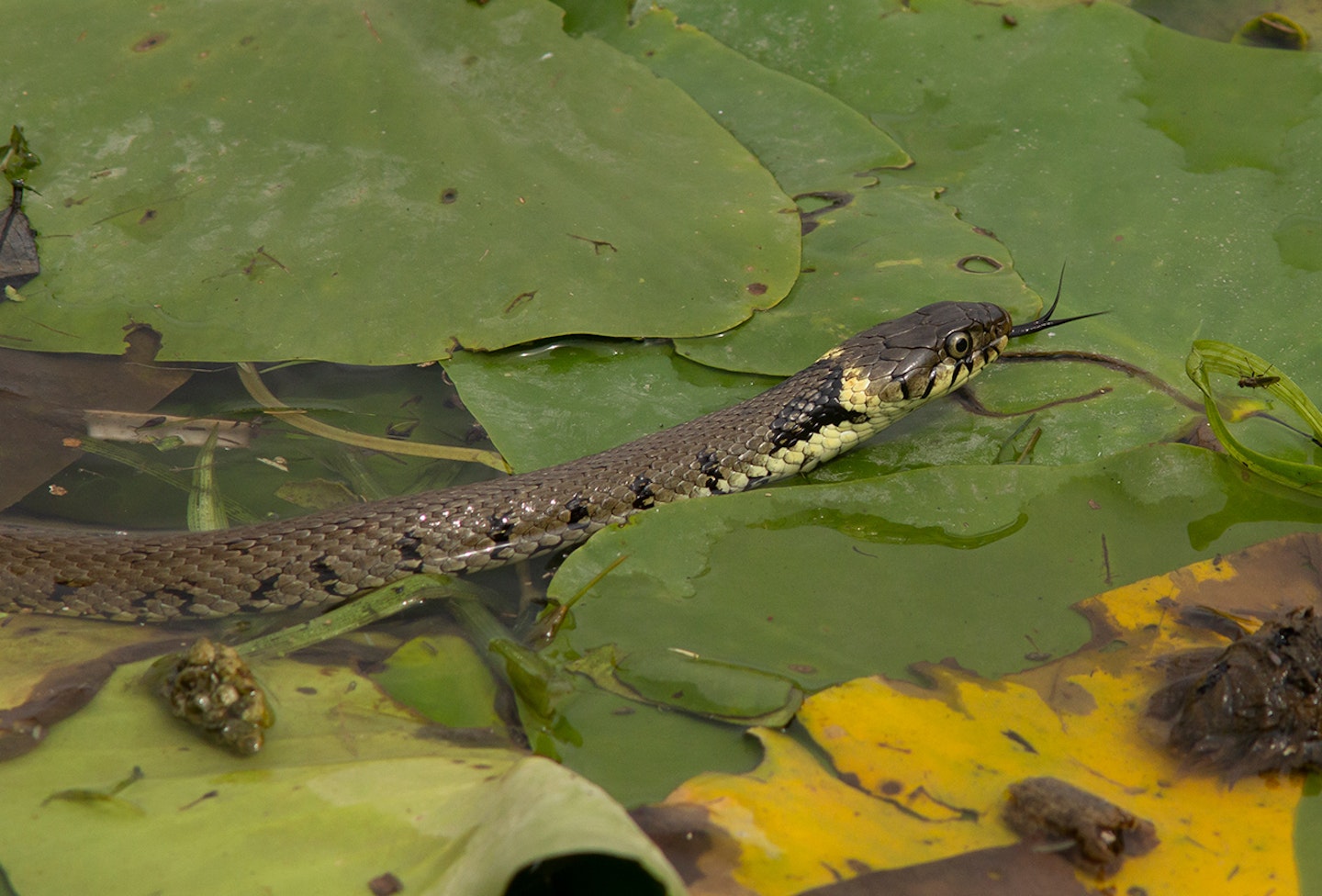
It was a great afternoon for dragonflies, and I recorded 14 species there. These included the first Variable Damselflies I have seen in ages (loads of the them; in the photo below note the 'broken' antehumeral stripes on the thorax and wine-goblet shaped mark on the first abdomenal segment), several Red-eyed Damselfies (they love to sit on water lilies), dozens of Brown Hawkers, and best of all 2 or 3 Norfolk Hawkers. Someone told me their season was over; but these insects looked fresh and undamaged! I even managed one or two flight shots. These are dragonflies on the increase/spread in terms of distribution, but I don't know if they have been recorded at any other sites in Lincolnshire, yet.

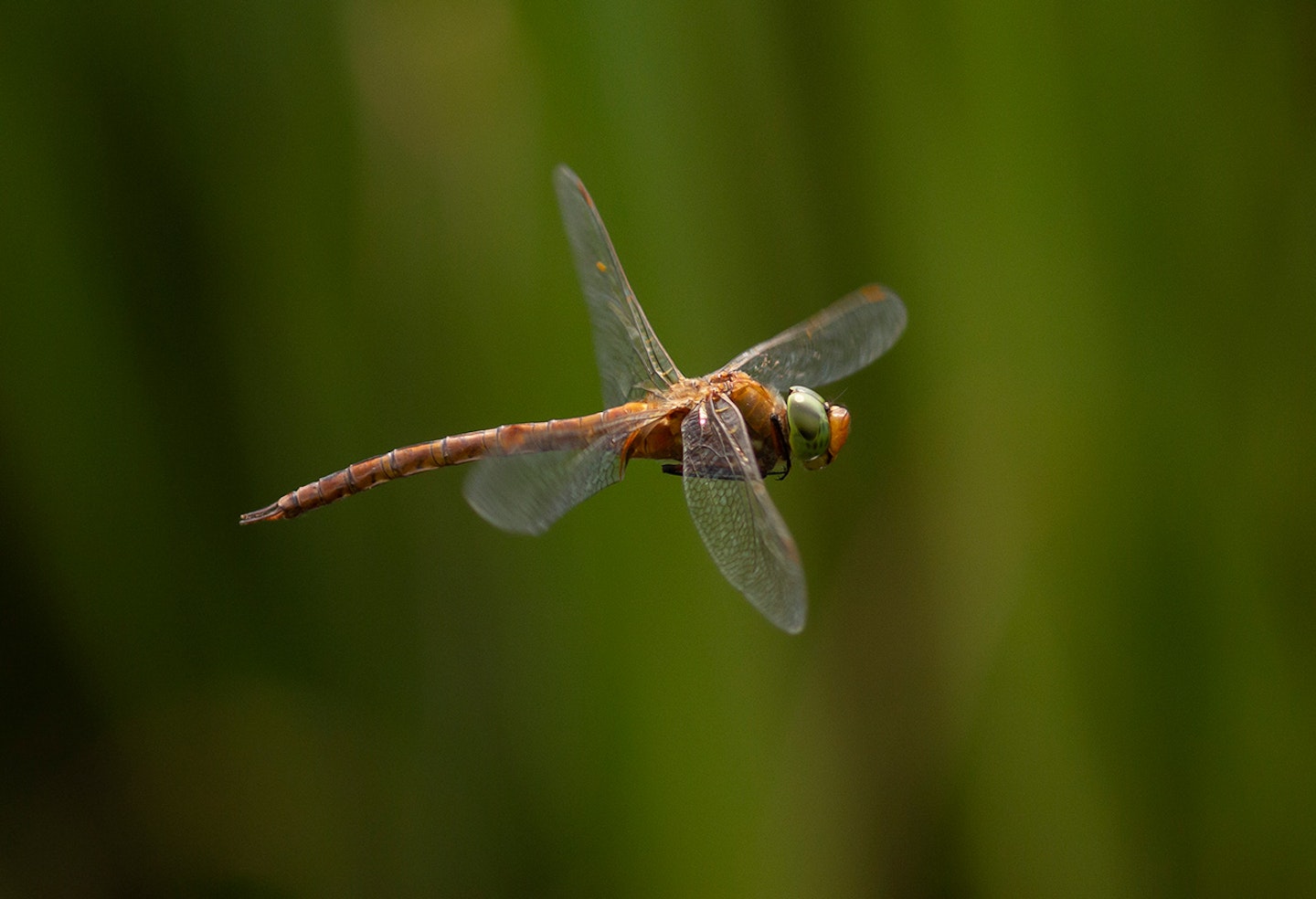
Friday 23 July
I am trying to keep up with the daily (at least) visits to the BLGP wader pit, as it continues to turn up the goodies. However, I couldn't see the Black-necked Grebe again this evening. Teal have increased to 6 around the pit, there was a single Common Sandpiper and a couple of Snipe.
Thursday 22 July
It is another scorcher, today, with a few butterflies in the garden: a new Speckled Wood, Meadow Brown and a couple of Large Whites to be precise. Out larges back garden buddleia is in full bloom and the present and smelling gorgeous. Let's hope it attracts some butterflies soon...
Wednesday 21 July
I have to say, I bear no resemblance, these days to the well wrapped fellow in the photo above. It is not just that I don't have a Spotted Flycatcher on my head or a Kingfisher on my bins, it is that it is flipping boiling, so I am wearing a fraction of the clothes! It makes me hot just looking at that picture!
Anyhwo, this evening, I went back to BLGP wader pit. There was no sign of the black-necked Grebe, which I guess has moved on. Similarly, the Garganey has gone AWOL. The Great White Egret was still present, however, as were a couple of Common Sandpipers and a single Redshank. As the sun set, there was a huge explosion in smallish caddisfly numbers, swarming (lekking, I think) around the roof of my car and all the bushes nearby.
On one of the bushes, there was a very bright yellow Willow Warbler, presumably a fresh juvenile, my firs tjuv of the year. Also, occasionally singing was the Garden Warbler which likes the hedge near the car pull in on the north side of the pit.
Tuesday 20 July
As the Baston & Langtoft wader pit is proving productive at the moment, I went to check it again this evening. There had been an earlier report from my friend Ray Bowell of a Great White Egret there earlier in the day, and it was still feeding along the east shore. I think it is the first one I have seen on this particular pit.
Also there were a new-in Garganey, hanging out with a female Teal. I think the former was an eclipse plumage male (hard to be precise at the distances involved). The Black-necked Grebe was also still present and looking even more tired than previous days. I worry a little about it... Finally, the Common Sandpiper was still there and a Hobby hunted dragonflies overhead.
Monday 19 July
We had a juvenile Woodpigeon in the garden today, looking gormless and helpless, like they always do. In the evening I popped back to BLGP pits to see if anything new had appeared at the famously productive 'wader pit'. Nothing particularly exciting appeared, but the black-necked Grebe was still present and looking almost as sleepy as the day before. There was also a Common Sandpiper on the east shore.
Sunday 18 July
I got up a bit late this morning (having arrived home from Wales, quite late, last night) and went out to seek Purple Emperors at Castor Hanglands, a little west of Peterborough. Luckily, there was a glorious male enjoying minerals (on a dog poop!) on the track into the reserve! I decided the best thing would be to stick with this individual, as it was the first opportunity I have ever had to photograph a Purple Emperor on the ground in the Peterborough area.
We used to go to Fermyn Woods in Northants for our annual summer PE fix. But, in the last five or six years they have colonised a few sites much closer to home including Castor Hanglands, which is only 10 minutes or so from our house.
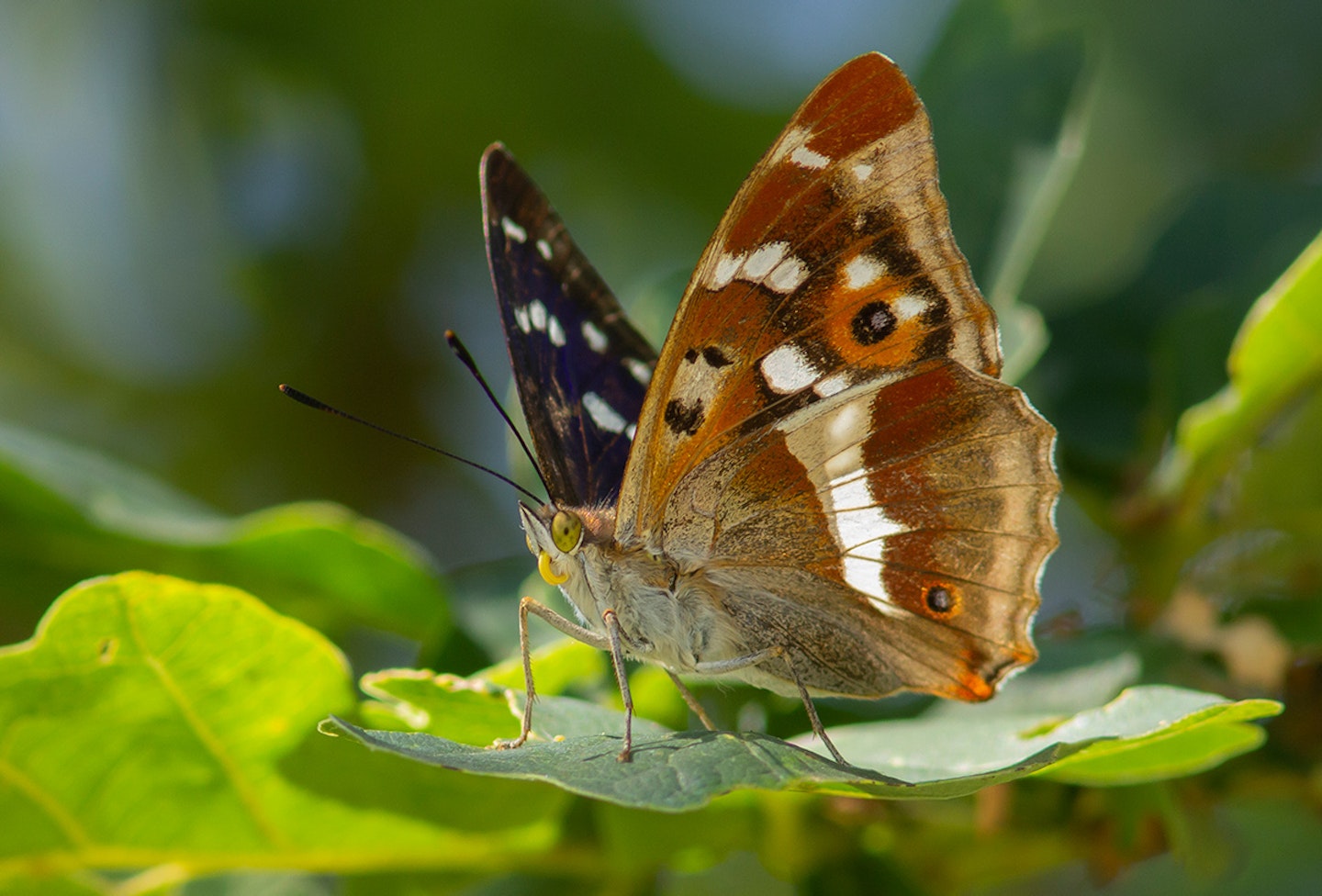
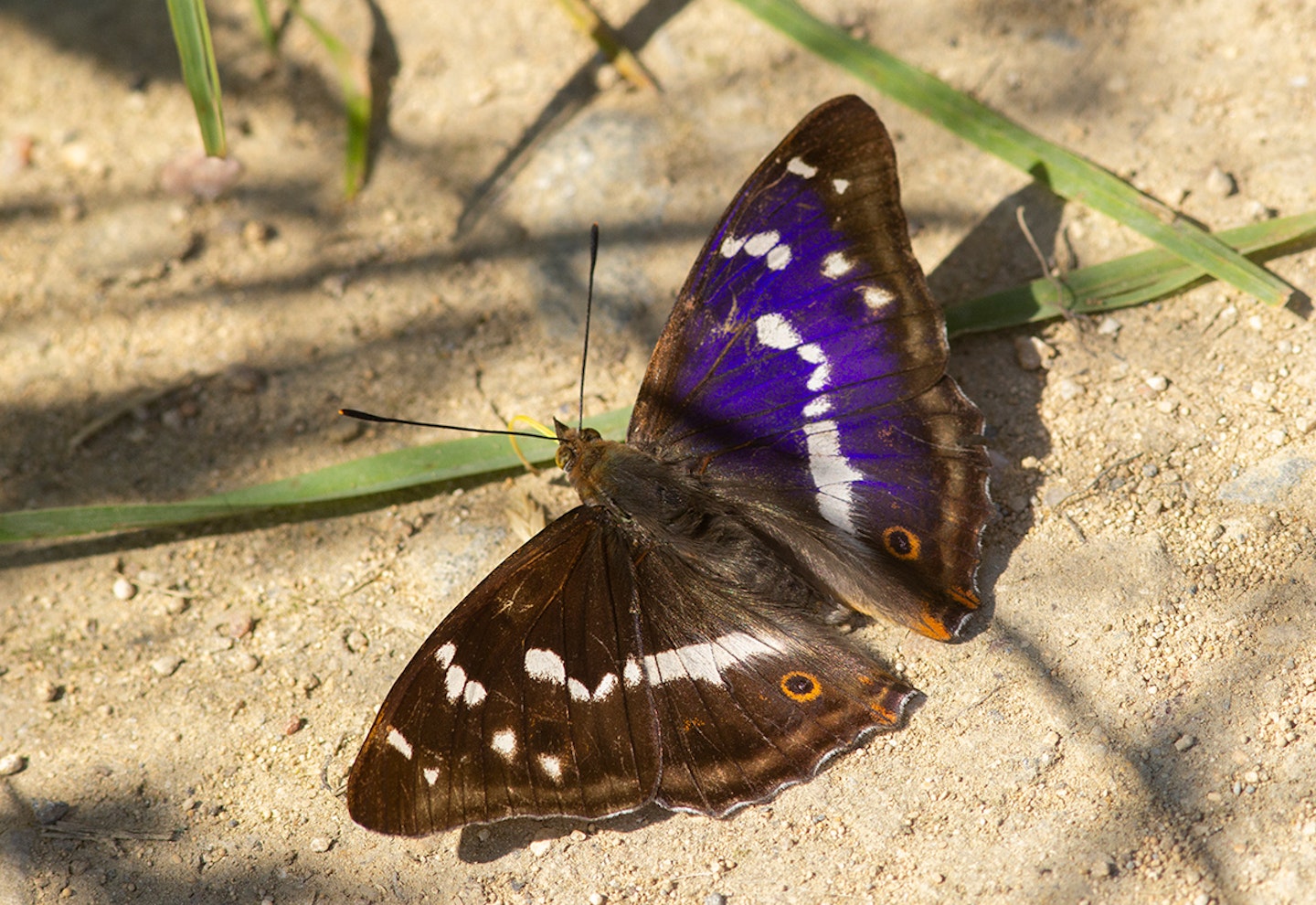
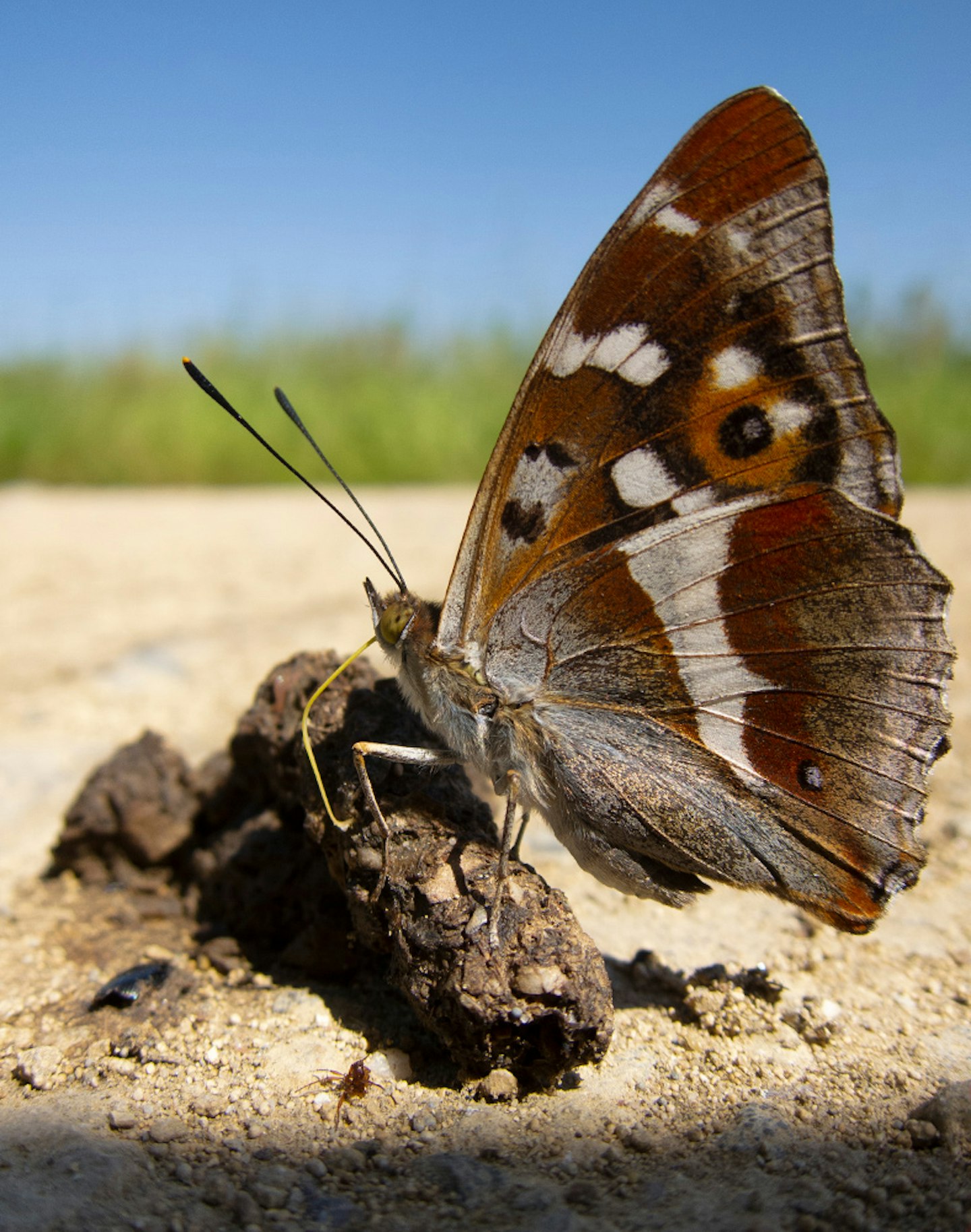
In the evening, I popped over to Baston and Langtoft wader pit, to see if anything had dropped in recently. There was a flock of half a dozen redshanks, but best of all, in the water near the herd of nearly 200 Coots, roosting on the eastern shore, there was a juvenile Black-necked Grebe, the first I have found of this scarce species, this year.
Saturday 17 July
Today, I cadged a lift with my friend Will Bowell, and we headed to Anglesey to pay homage to the extremely rare Elegant Tern that has been at Cemlyn Bay for the last couple of weeks. What a bird it was, constantly displaying to any Sandwich Tern which came near its favoured 'nest box'. It even did a few fly-bys allowing us to get a few photos. Great bird, but such a long way away from home...

Friday 16 July
The Bird Watching magazine editorial team met for our first physical team meeting back in our Peterborough office since we all went home in March 2020! On the cycle down there, I went via Peterborough rowing lake, aka Thorpe Meadows. There was a scruffy looking male Goosander on the bank, with the Mallards! I presume it is a drake going into eclipse plumage, when they resemble females during the summer moult. I took a ropey photo with my ropey phone!

After the meeting, we met up with our friend and photographer Tom Bailey who took plenty of photos of the team posing around Ferry Meadows CP. Editor Matt Merritt and I then headed down south to Over where tom could photograph us with regular_BW_contributor David Chandler.
I even went out on a Canadian canoe trip with David, posing all the way. It was wonderful drifting along the narrow River Great Ouse, at eye level with the abundant dragonflies along the well-vegetated banks of the river. They were mainly Banded Demoiselles and (Large) Red-eyed Damselfies, plus several male Scarce Chasers, but there were also the odd White-legged Damselfly, a species I don't see very often.
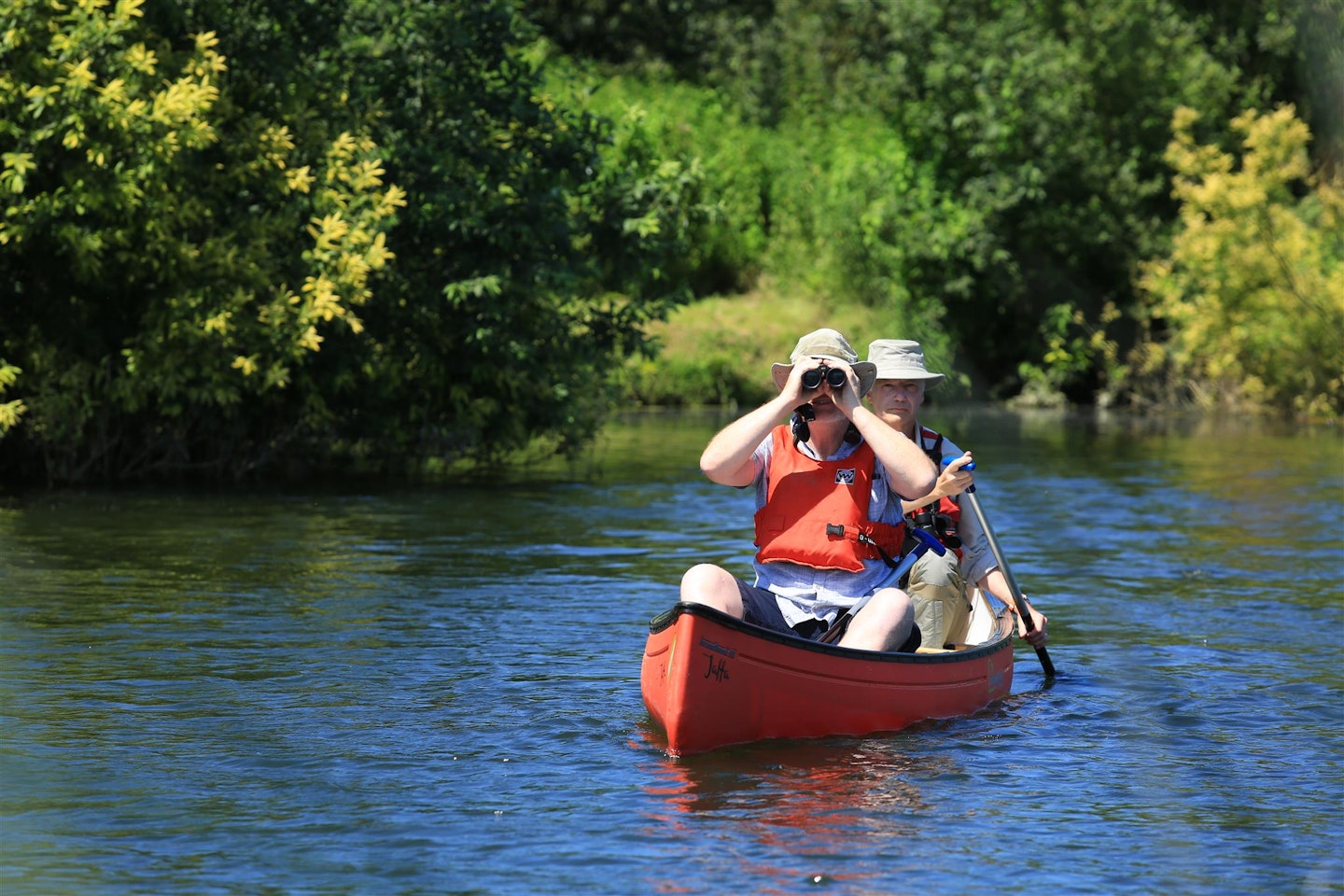
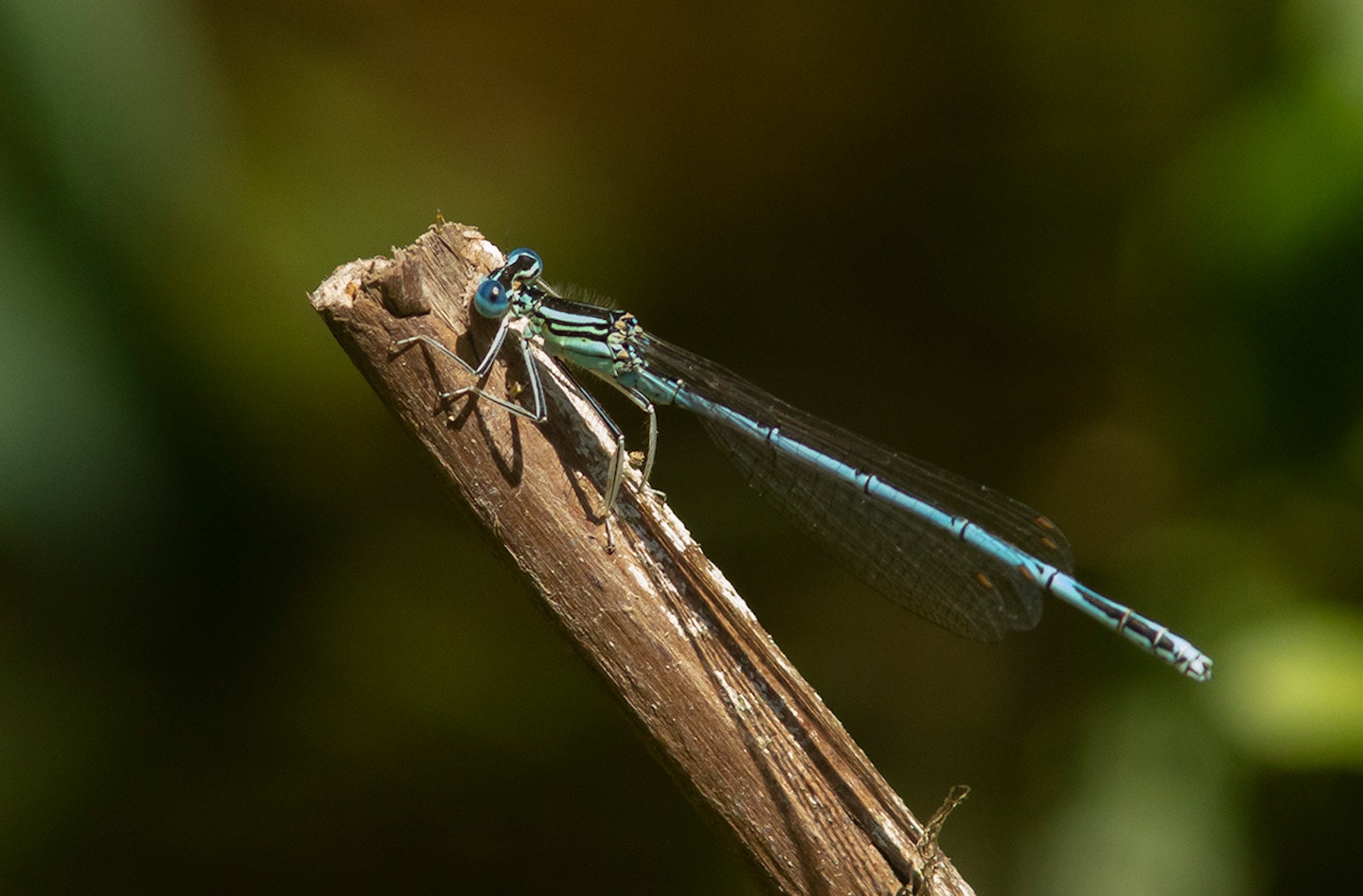
Thursday 15 July
I popped over to Deeping Lakes in the afternoon. The juvenile Oystercatcher I call Owen now has the same shape and size, and plumage as its parents. The best way to recognise it it sill has a bit of blackish colour on its bill.
A couple of Brown Hawkers were buzzing up and down the road just outside our 'front garden'. Counts as a garden year tick for me!
Wednesday 14 July
I was back at Baston fen this evening, but there was no sign of any Norfolk Hawker action. It seems I was pretty lucky with my timing yesterday. The best action on offer was an Emerald Damselfly. This site is also where I have photographed the newly colonising and similar Willow Emerald Damselfy, but they are a later season dragonfly.

Tuesday 13 July
Apologies, everyone, for the lack of action over the last week or so. My dear wife Jo and I went over to Swansea to visit our daughter Jasmine (who now works there), who we haven't seen since the Covid outbreak in early 2020. We also took some trips down to the Pembrokeshire coast and over the next few days I will try to fill in some of the gaps left near the start of July.
Now, I am back in Peterborough and looking forward to a bit of birding after work, this evening. The garden has grown somewhat, in our absence, but the city got a real battering in a rains storm on Saturday, so some of our taller herbaceous plants, like the giant Teasels and Stinging Nettles are looking somewhat bowed and reduced in height. Great Tits are still feeding begging babies in the garden. I presume it is the same pair, but you never know, there may be a new GT family, in the area.
In the evening, I popped up to the Deepings area (north of Peterborough). I visited Baston Fen NR, as while I was away, there had been reports of a Norfolk Hawker dragonfly there. This is a species I have only seen at Hickling Broad, Norfolk in a UK context. It is apparently spreading from its Norfolk range, and has been seen at a few sites in eg Cambridgeshire in recent years. Anyhow, I got lucky, and after about five minutes relocated what was presumably the same Norfolk Hawker hunting over (and perching by) the ditch closest to the car park.
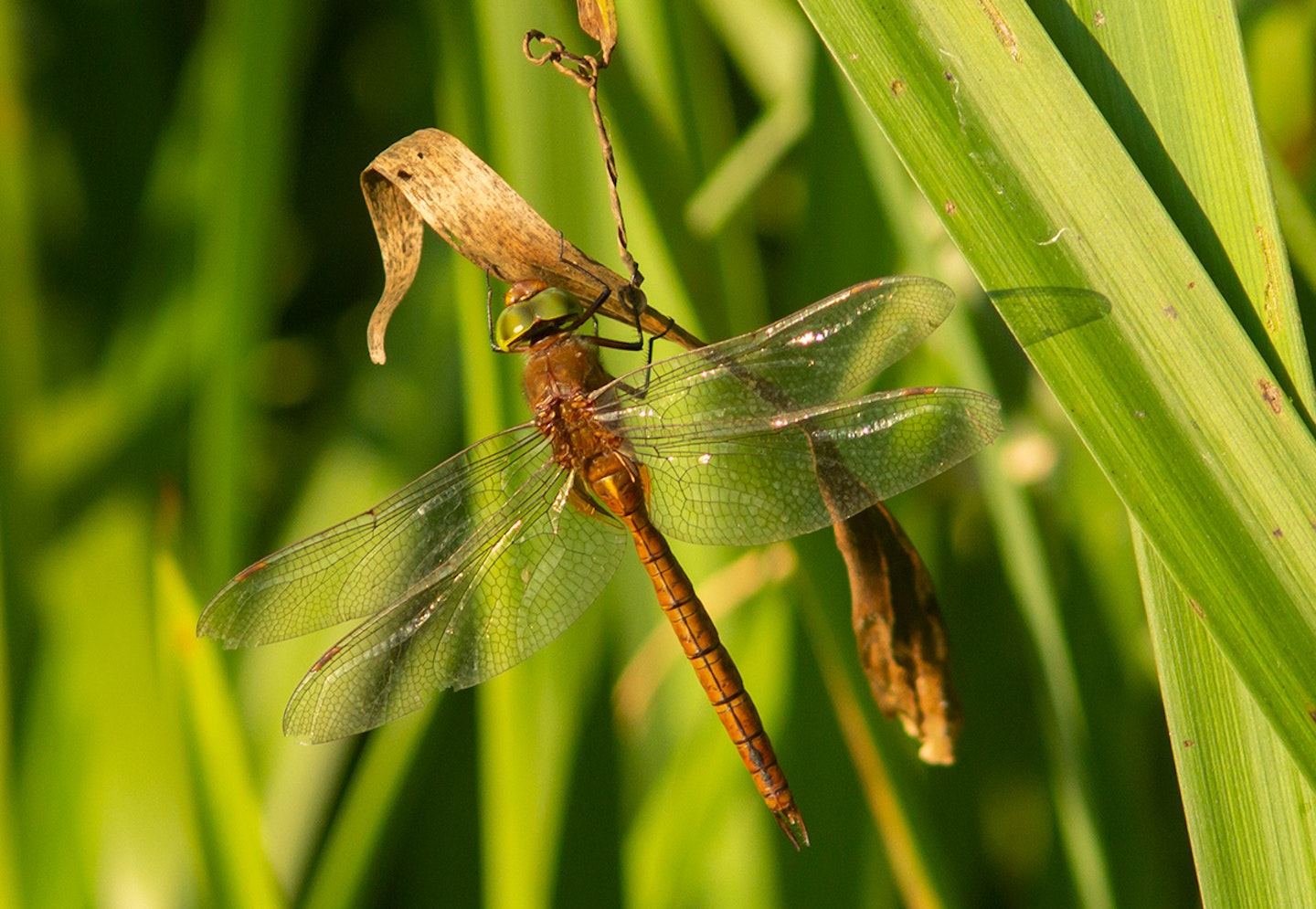
A couple of key characteristics of this species, which easily tell it from the larger Brown Hawker, are the bright green eyes (which give it the alternative name Green-eyed Hawker), and the yellow 'golf tee' at the base of the abdomen, plus the clear, rather than brownish wings.
Sunday 4 July
The birding was a bit slow, so today I popped over to Bedford Purlieus, a slice of ancient woodland a little west of Peterborough, jus toff the a47, which is the road that links Leicester with Norfolk via Peterborough. The meadow like clearing near the A47 has been a great place for flowers and butterflies in recent years. It is particularly famed for its Dark Green Fritillary (butterfly) population which saw the first colonisation of this brilliant butterfly in the Peterborough area, a few years ago, and still has a thriving population. I counted somewhere between 30-50 individuals today, there.
There was also an abundance of Marbled White butterflies and dragonflies patrolling the meadow including Scarce Chaser and Emperor.
Saturday 3 July
I was back at my favoured 'northern' spots again, this morning: Deeping Lakes and Baston and Langtoft pits. The former site has produced substantially more breeding 'seabirds' than last year, with dozens of Lesser Black-backed Gull youngsters, lots of juvenile Black-headed Gulls and a few pairs of Herring Gull producing youngsters. Best of all are the little fluffy Common Tern chicks which have recently hatched on the small islands near the east screen of the east pit. There are at least five of the little fluff balls. So cute!
BLGP's 'wader pit' produced my first returning adult Greenshank of the summer. By the end of the month, we will be seeing juveniles coming thorough on their first journey south.
Friday 2 July
It is a lovely day today, with periods of beautiful sunshine. I haven't been out in the garden as much as I should have. But it is relatively quiet out there at the moment. There is a disturbingly low amount of butterflies around at all, and none in the garden. There re still one or two birds coming down to the feeders (when the neighbours' cats aren't visiting), including a juvenile (yellow-faced) Blue Tit and a a Robin. And I am pleased to see Swifts are still hanging around the neighbourhood, if not actually nesting in our little close.
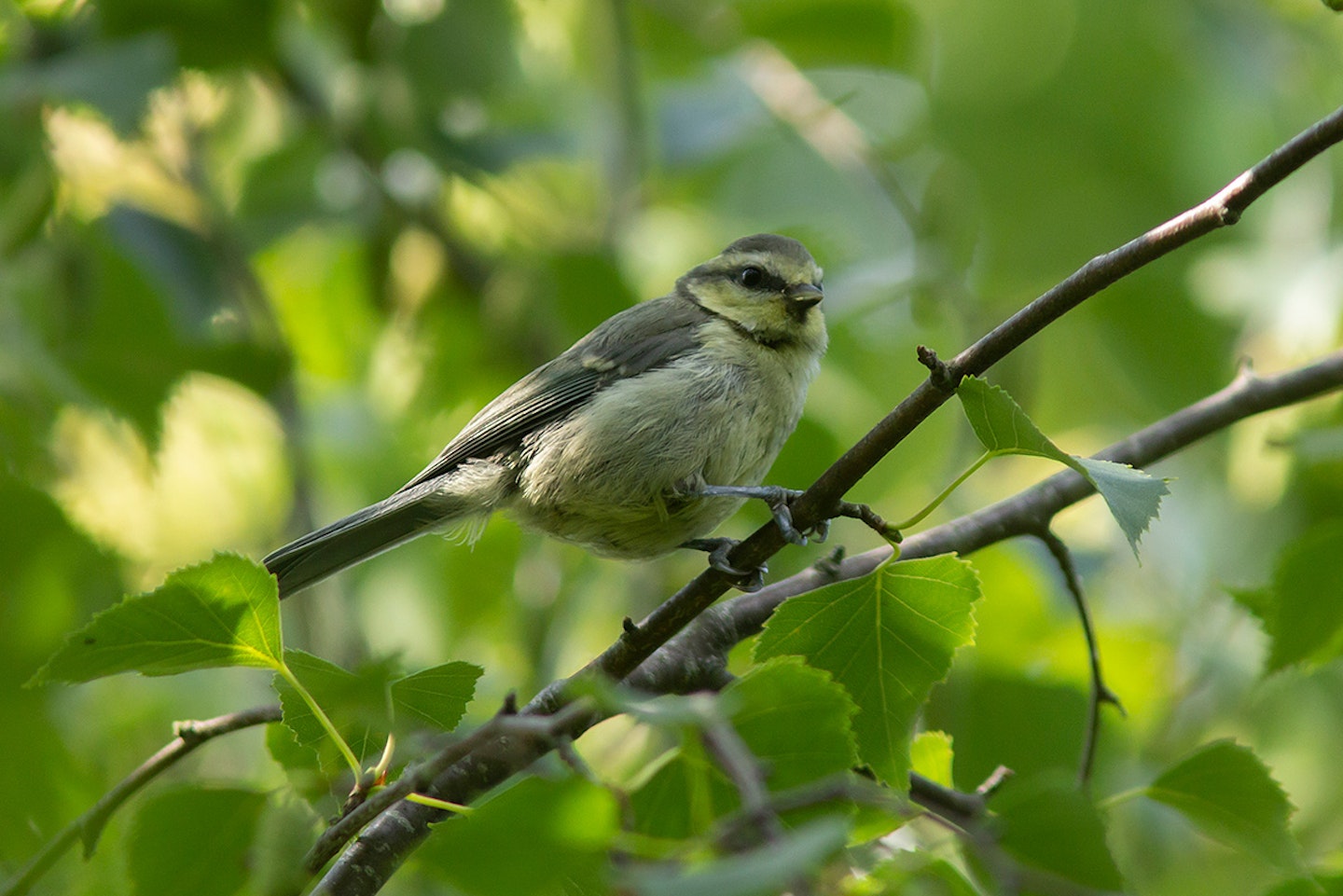
Our largest Teasel is now so tall that even when I stretch my arm up to its full height, with my fingertips outstretched, the tallest flower is still taller!
Incidentally, if you want to see more of my albatross photos from a couple of days ago, check out my blog Weedon's World of Nature
Thursday 1 July
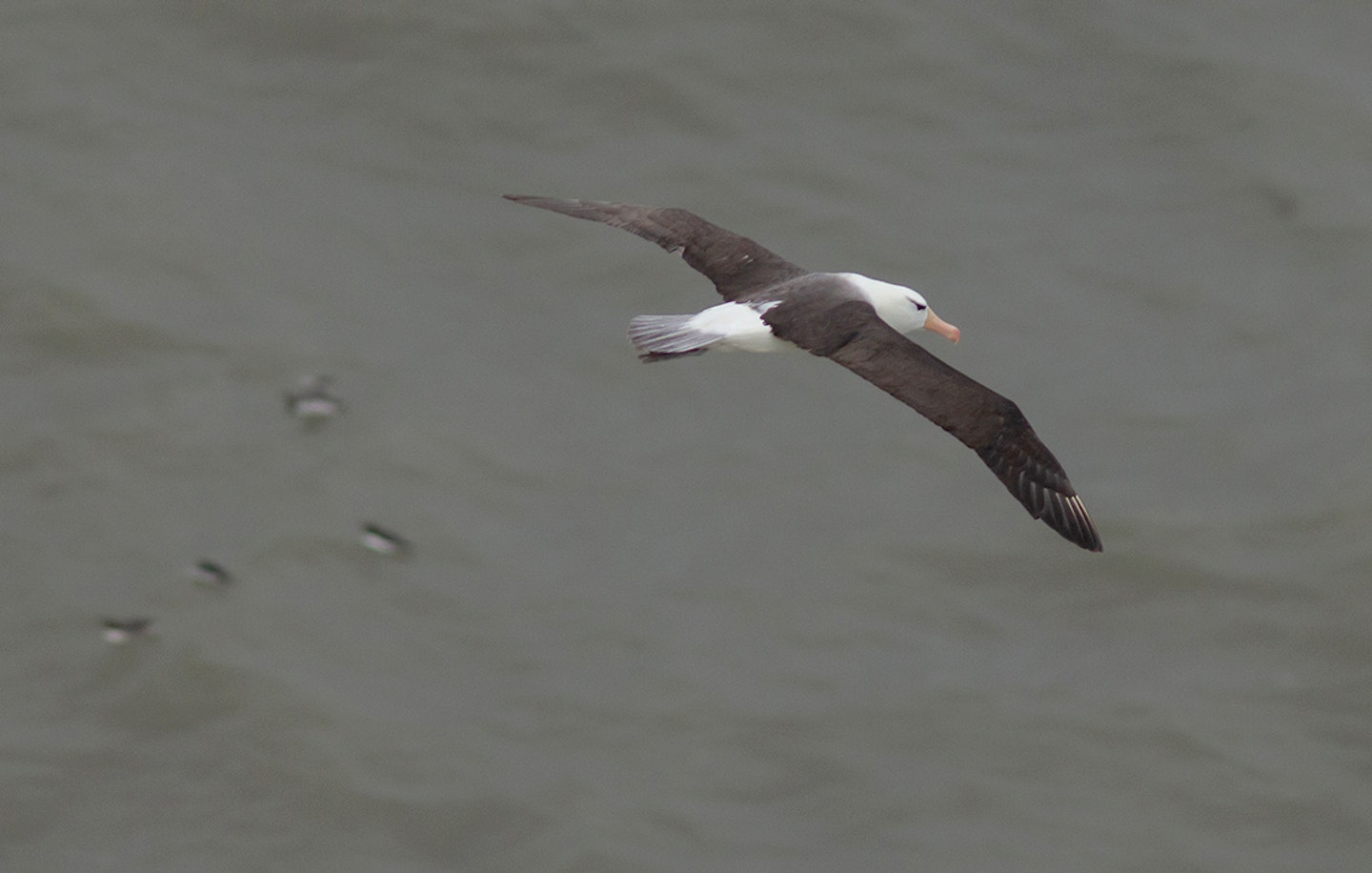
And so we enter the second half of the year and it seems as good a time as any to change the name of the Lockdown Diary to Responsible Birding Diary (like we did last year, when ‘lockdown’ restrictions were lifted somewhat). I didn’t have an early start today; mainly because of yesterday’s exertions. I went up to Bempton Cliffs RSPB in East Yorkshire, to ‘twitch’ the Black-browed Albatross which had been there more than a day. Luckily it spent the night and the rest of the day there yesterday. I got some shots, but it was exhausting! So, I went to bed a tad early and slept through to past going out time.
I just popped out to check on the garden, re-mow the path through the now very overgrown lawn and add a bit of water to the ‘drinking pond’ (it was nearly dry). Our tallest Teasels are now more than 7 feet tall and the tallest stinging nettles are about 6 feet in height!
Birdwise it was quite quiet out there, apart from quite a vocal Magpie which was delivering a wonderful array of squeaks and whistles in addition to the normal machine-gun chatter. Our garden is still full of a wide range of bugs, particiulalary ‘true flies ‘ (Diptera). I reckon we have the majority of the neighbourhood’s supply of flying insects (having the most heavily vegetated, some would say ‘overgrown,’ garden).
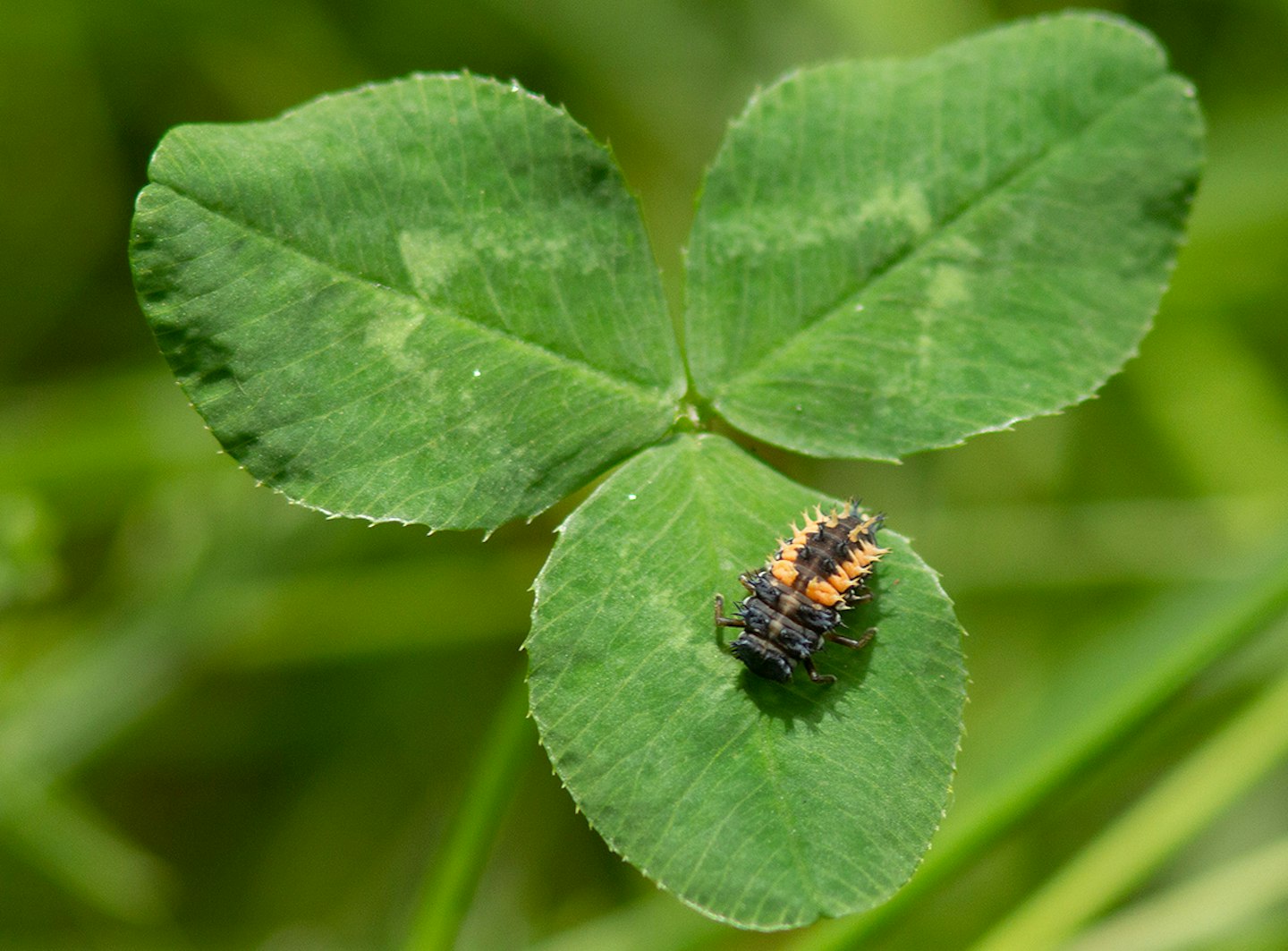
Here is a ladybird larva on a clover leaf. These are the guys that do much of the aphid munching ladybirds are renowned for. Cool isn’t it?
